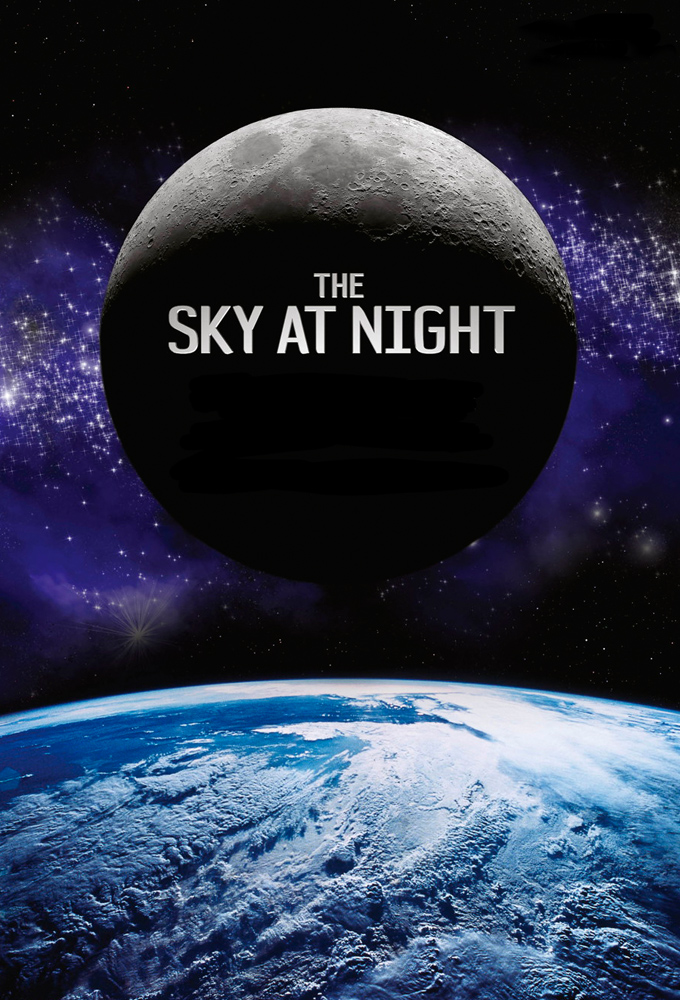
The Sky At Night
Non notée
Année : 1957
Nombre de saisons : 69
Durée moyenne d'un épisode : 30 minutes
Genre(s) : Documentaire, Actualité
Sir Patrick Moore (1923-2012) began presenting The Sky at Night in April 1957. Airing a new episode every month, the show continues to explore our solar system and beyond. It is the longest running science show on TV. Many famous people have appeared on The Sky at Night, among them: Harlow Shapley, Carl Sagan and Jocelyn Bell-Burnell. Many astronauts have also appeared, including Neil Armstrong and Buzz Aldrin. Recordings of most of the early episodes no longer exist.
Saisons
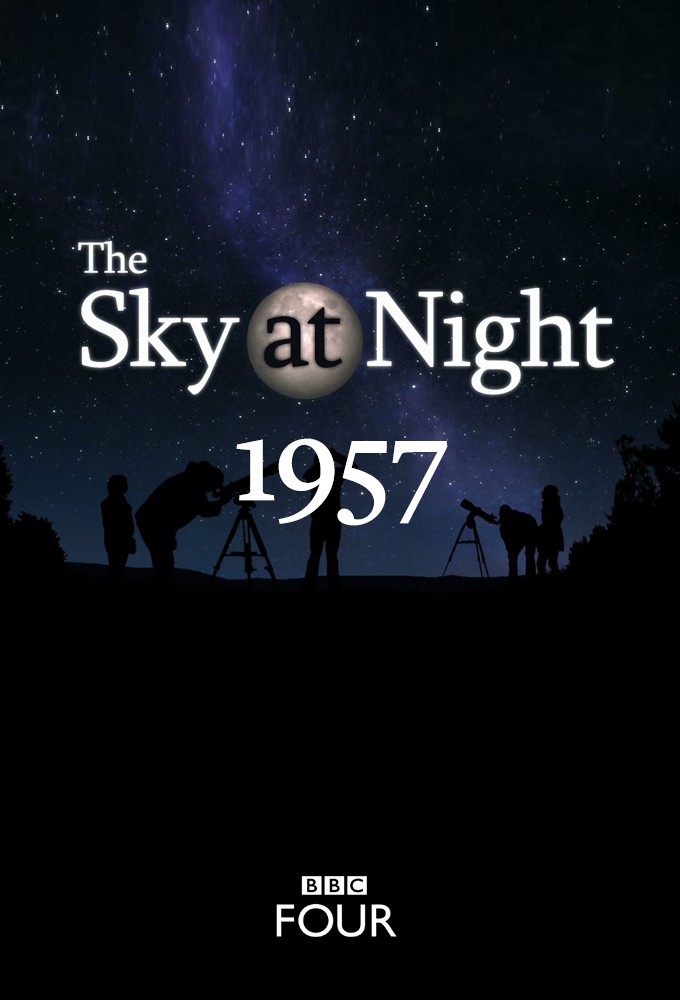
Saison 1957
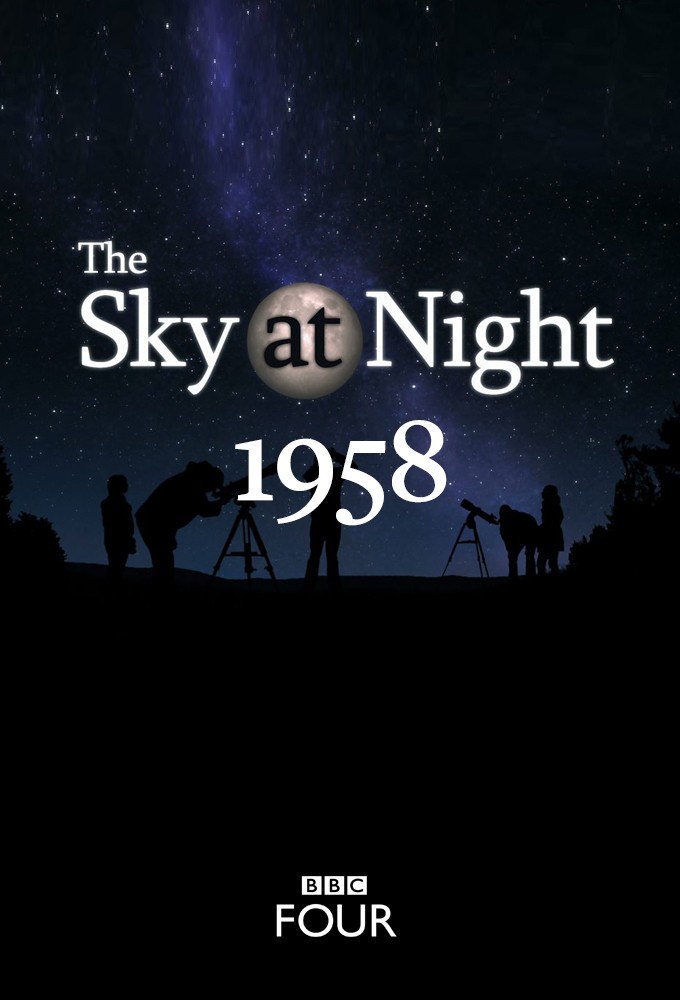
Saison 1958
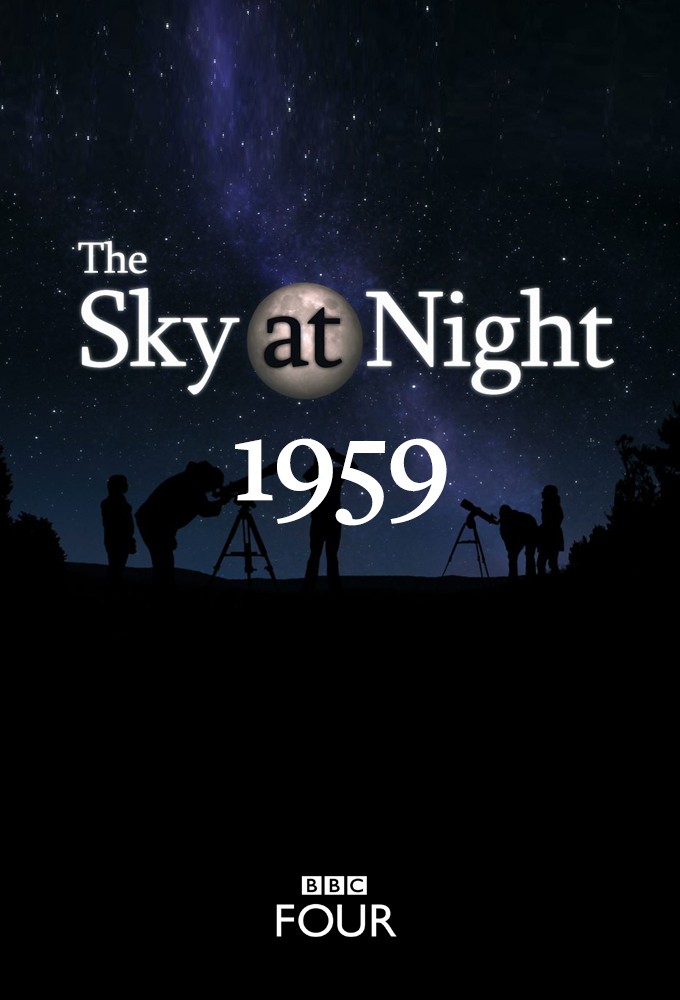
Saison 1959
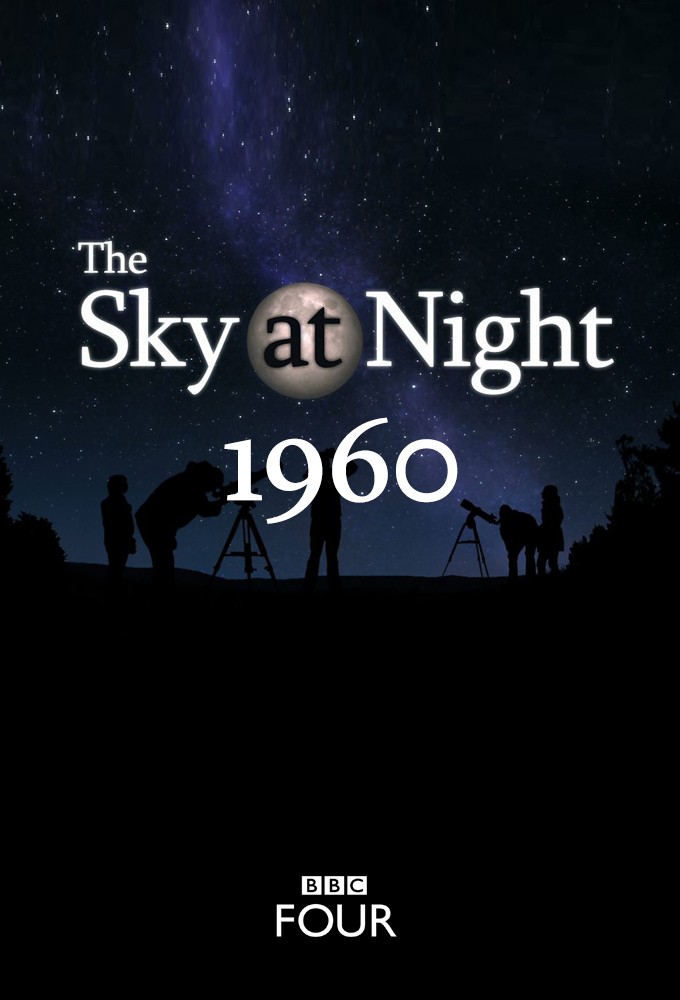
Saison 1960
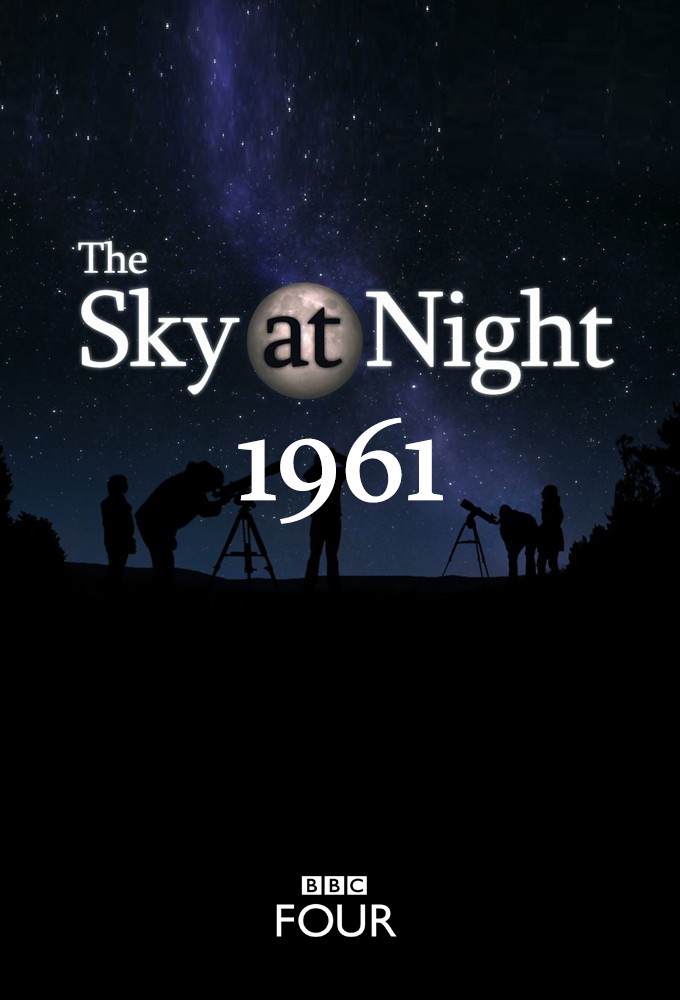
Saison 1961
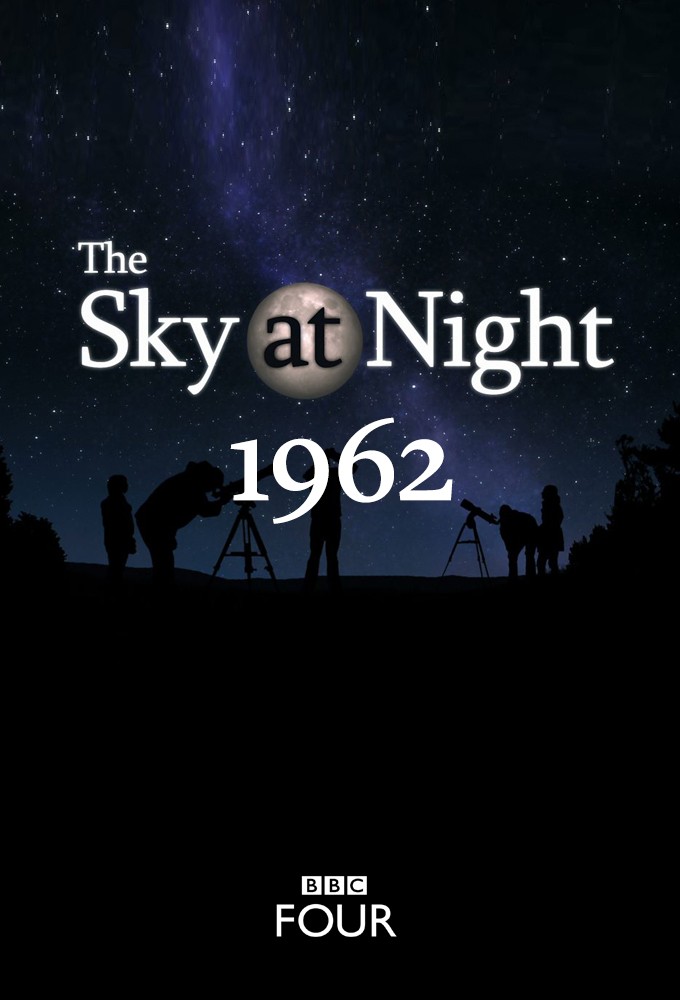
Saison 1962

Saison 1963

Saison 1964
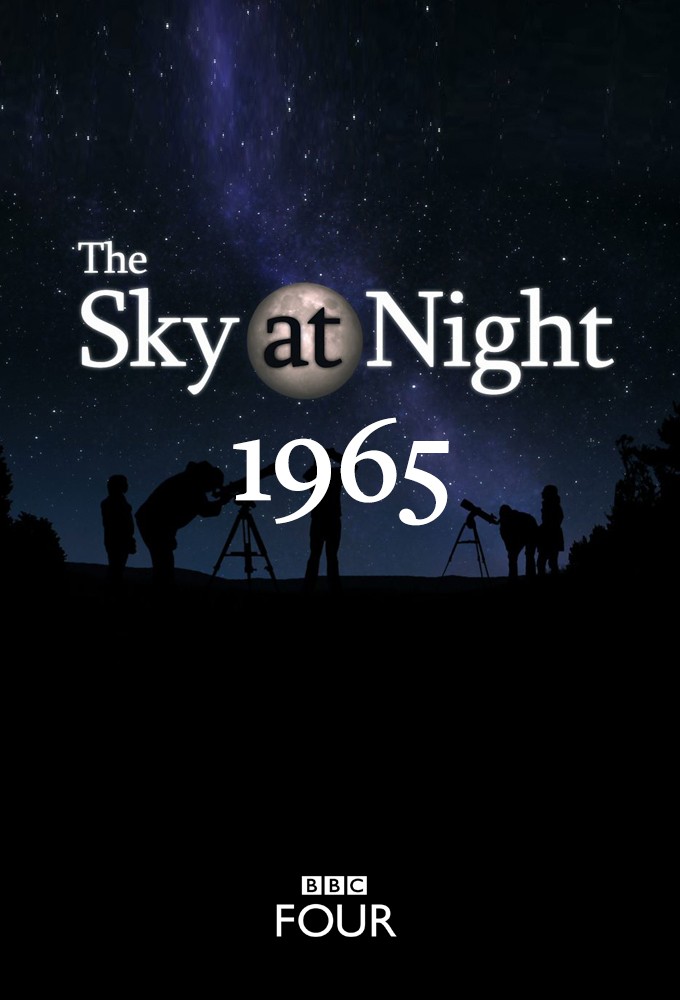
Saison 1965
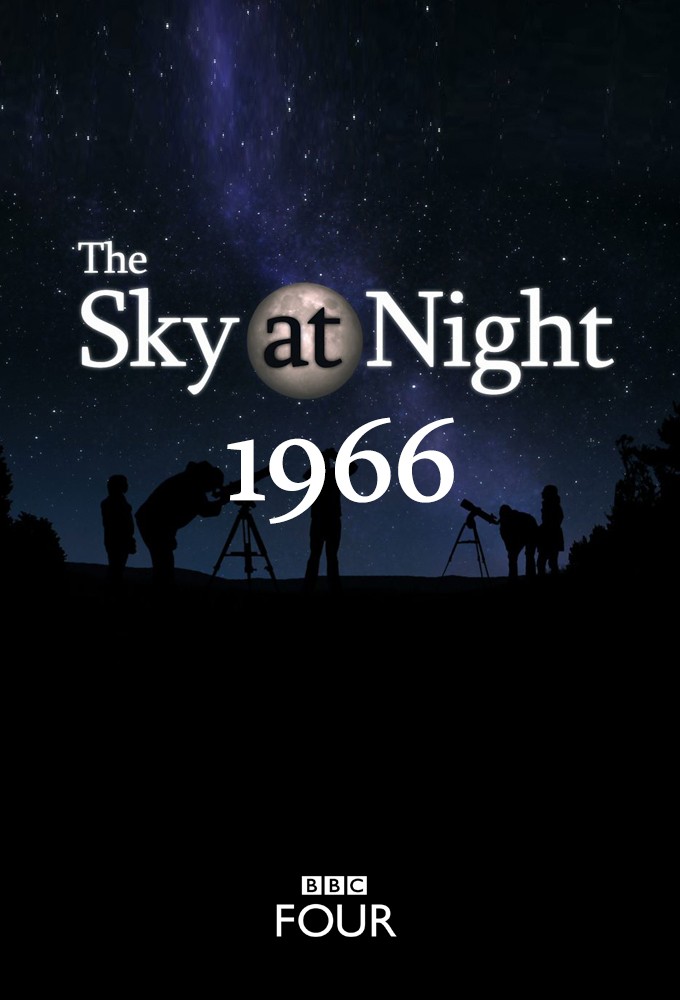
Saison 1966
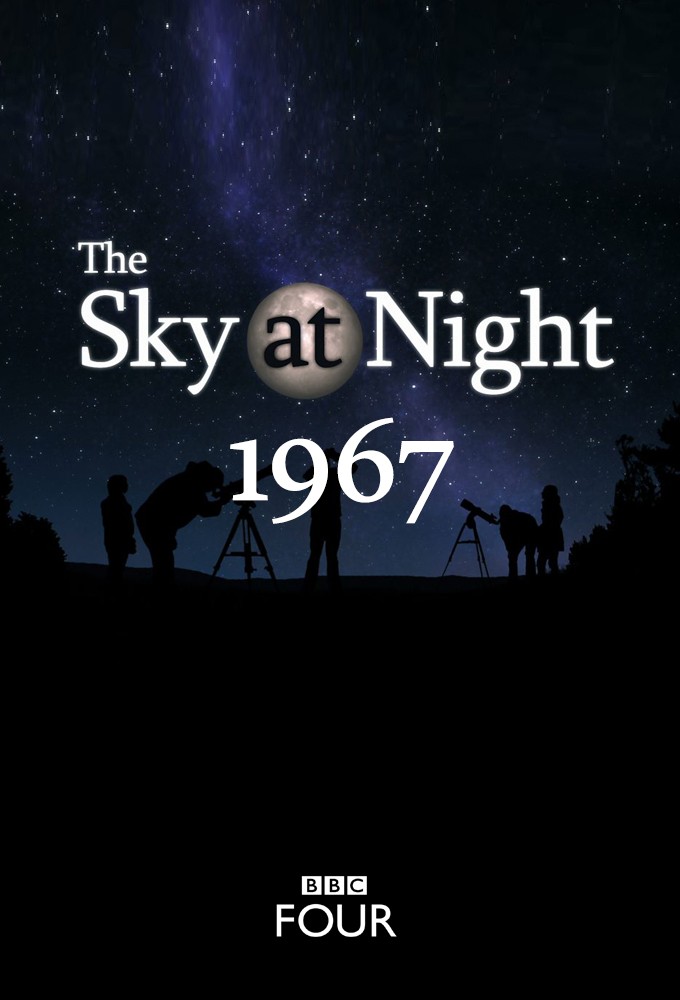
Saison 1967
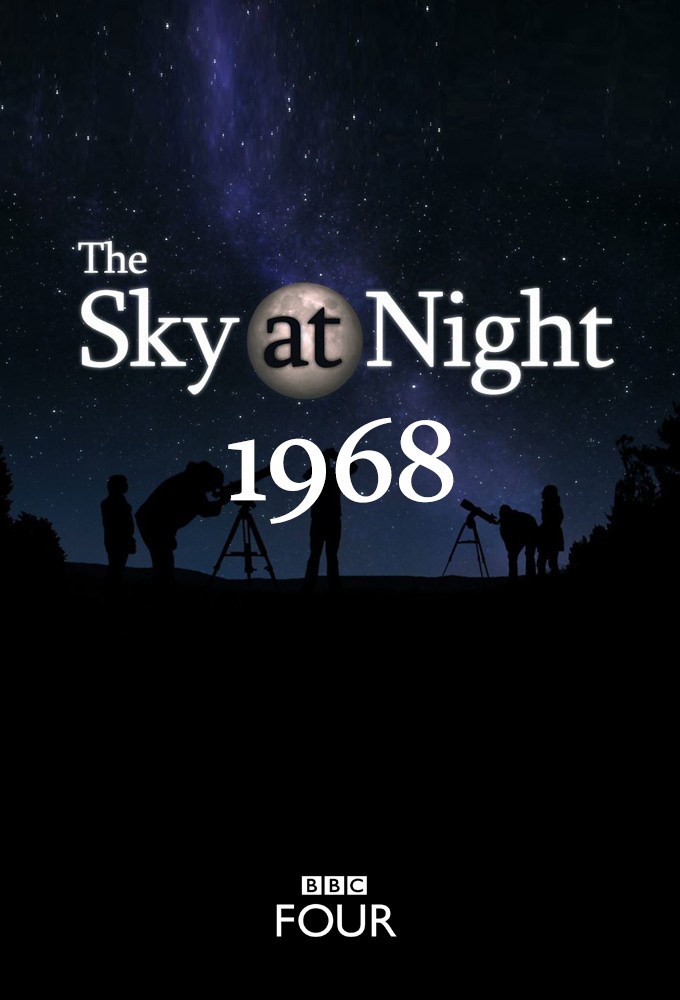
Saison 1968
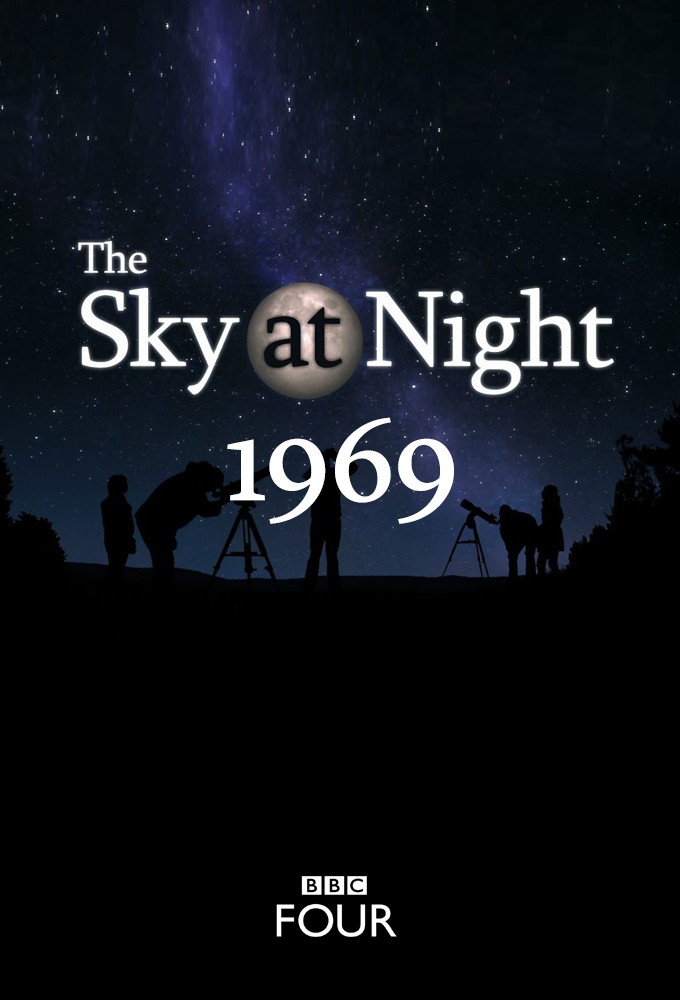
Saison 1969
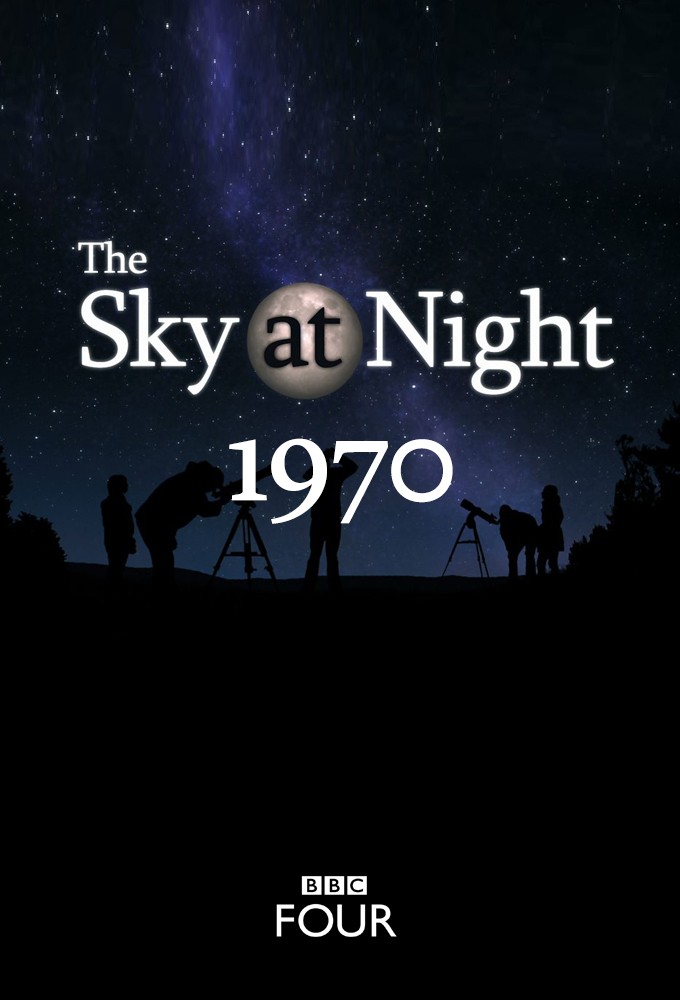
Saison 1970
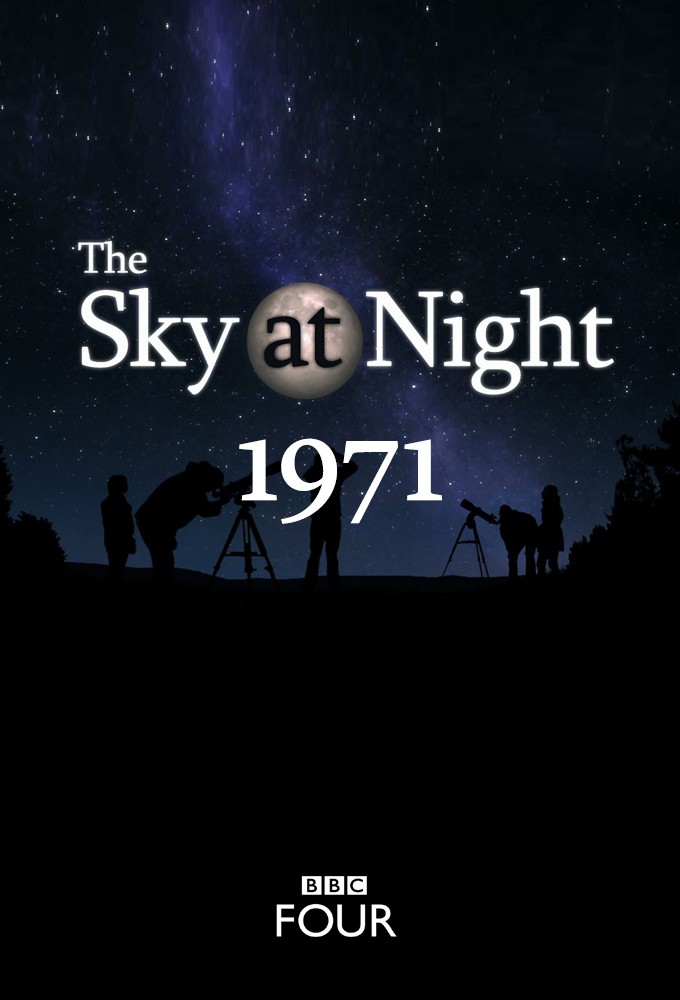
Saison 1971
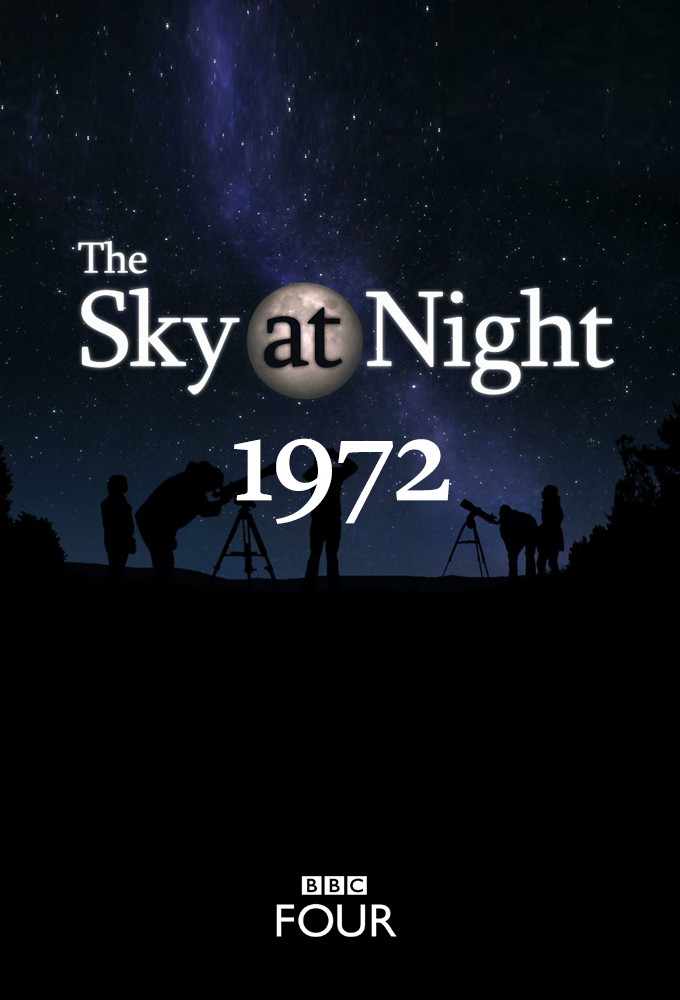
Saison 1972
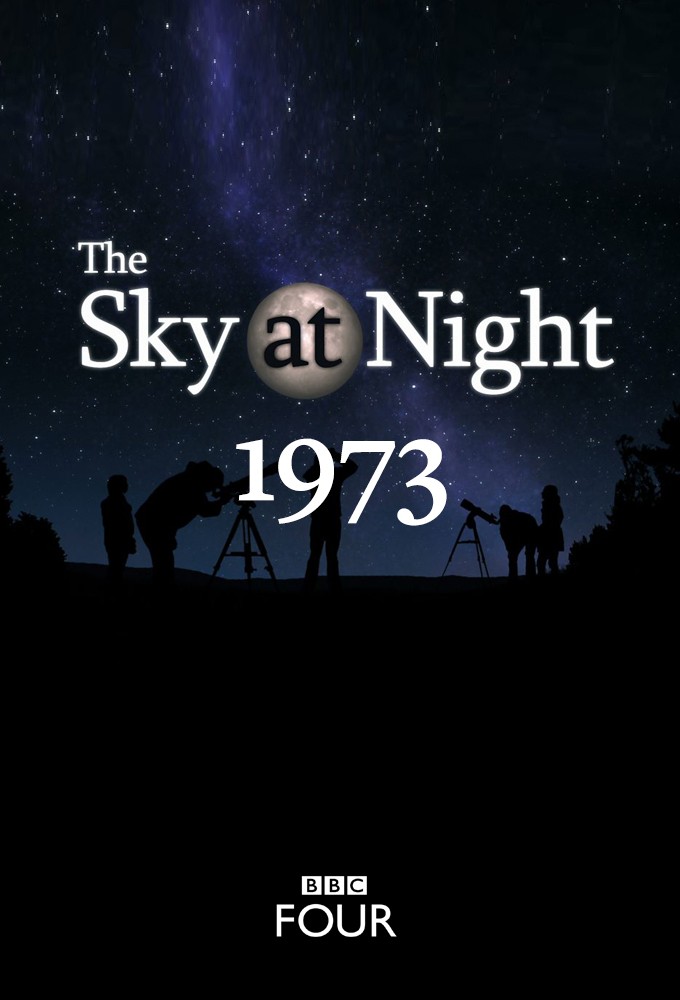
Saison 1973
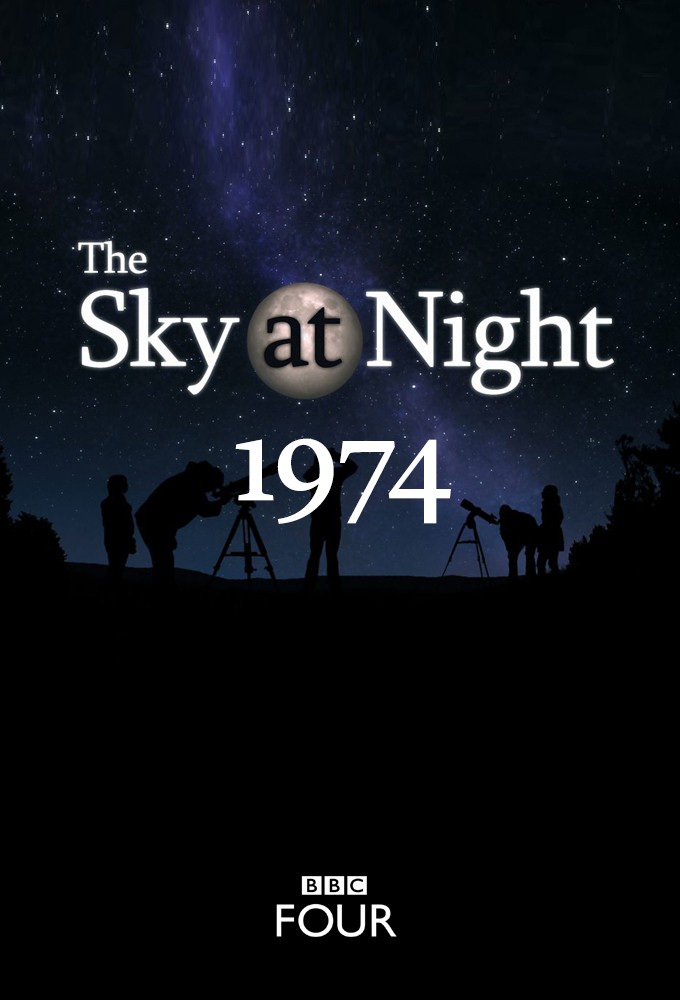
Saison 1974
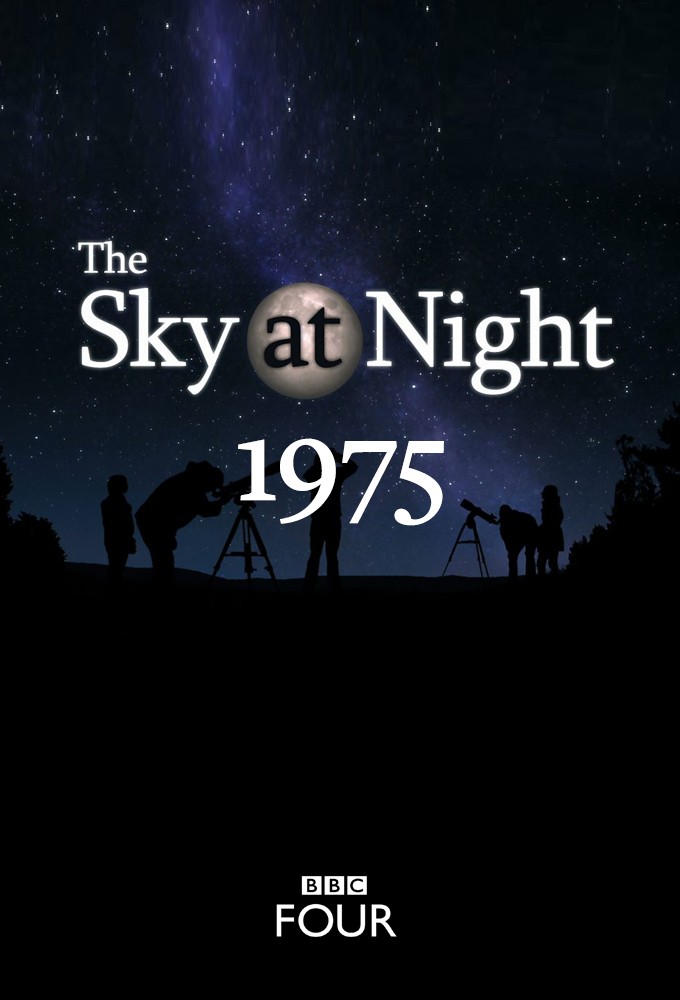
Saison 1975
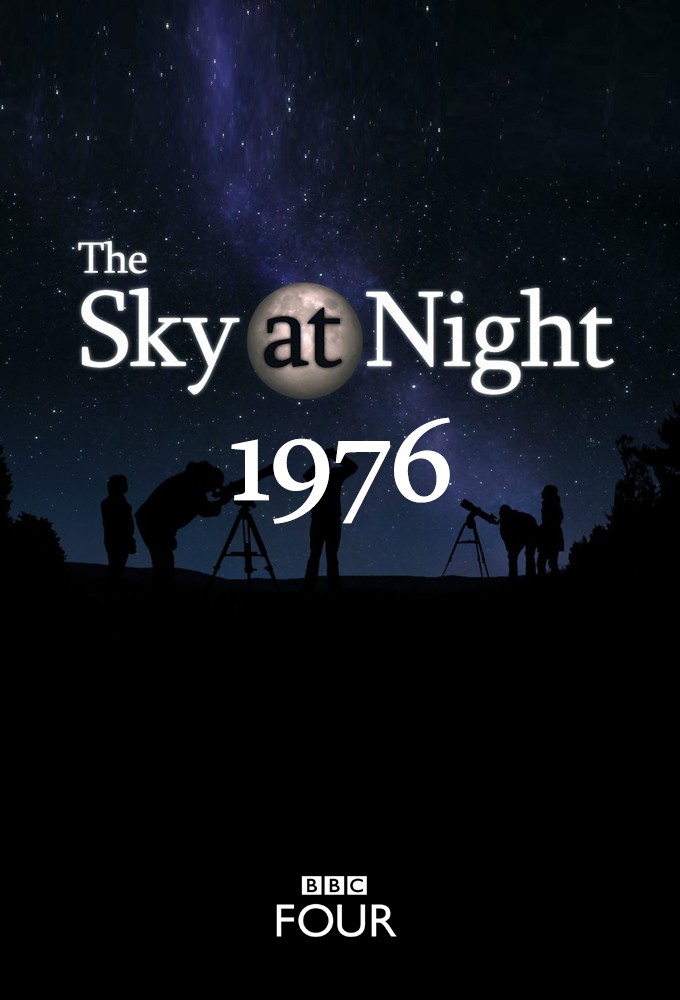
Saison 1976
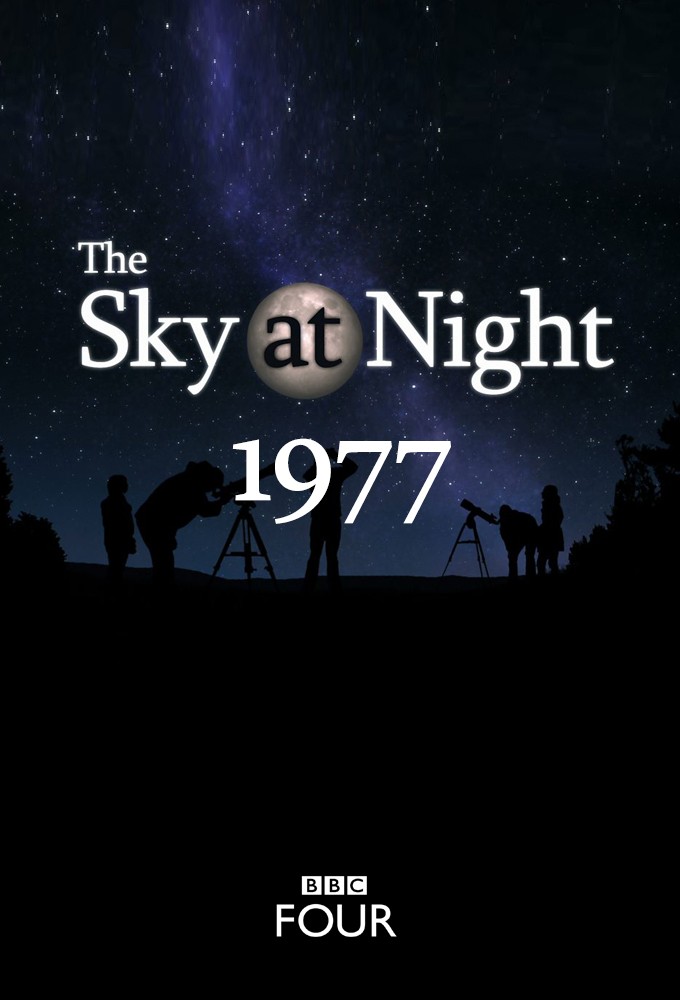
Saison 1977
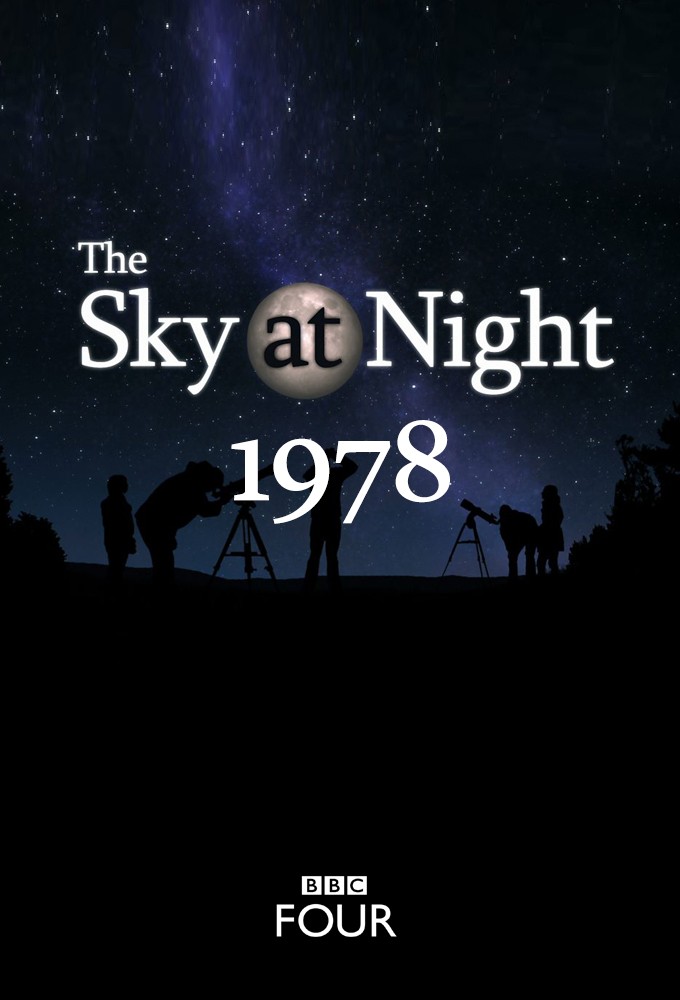
Saison 1978
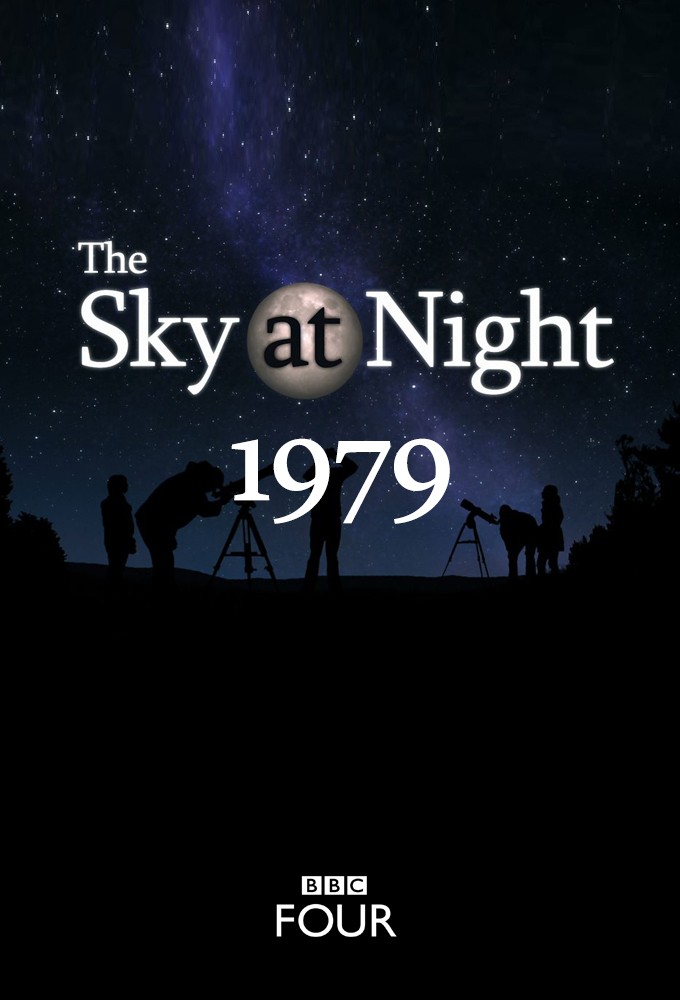
Saison 1979
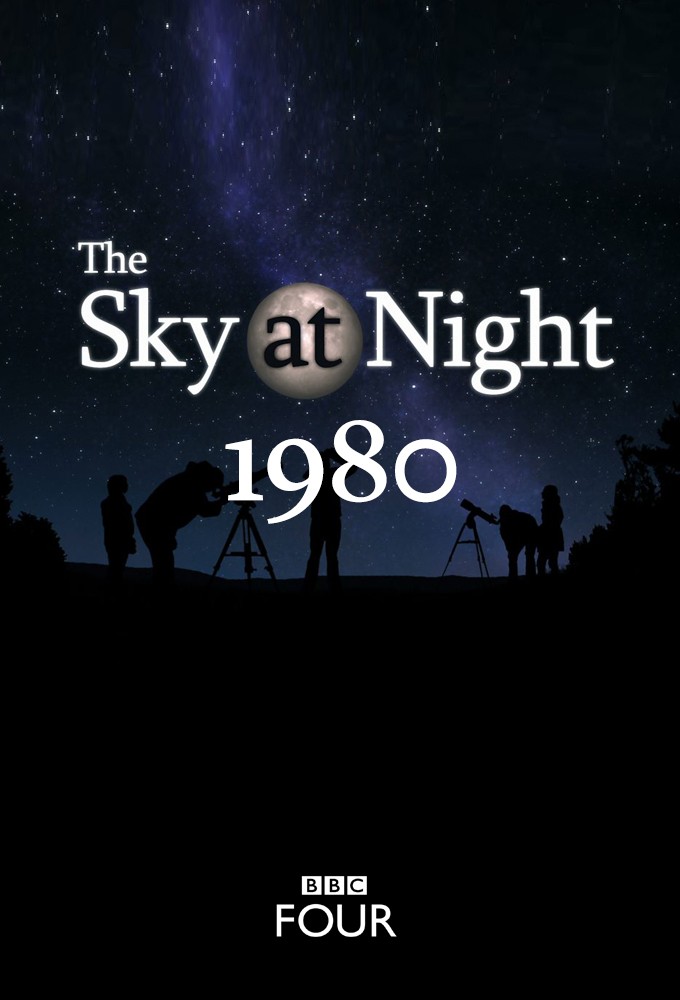
Saison 1980
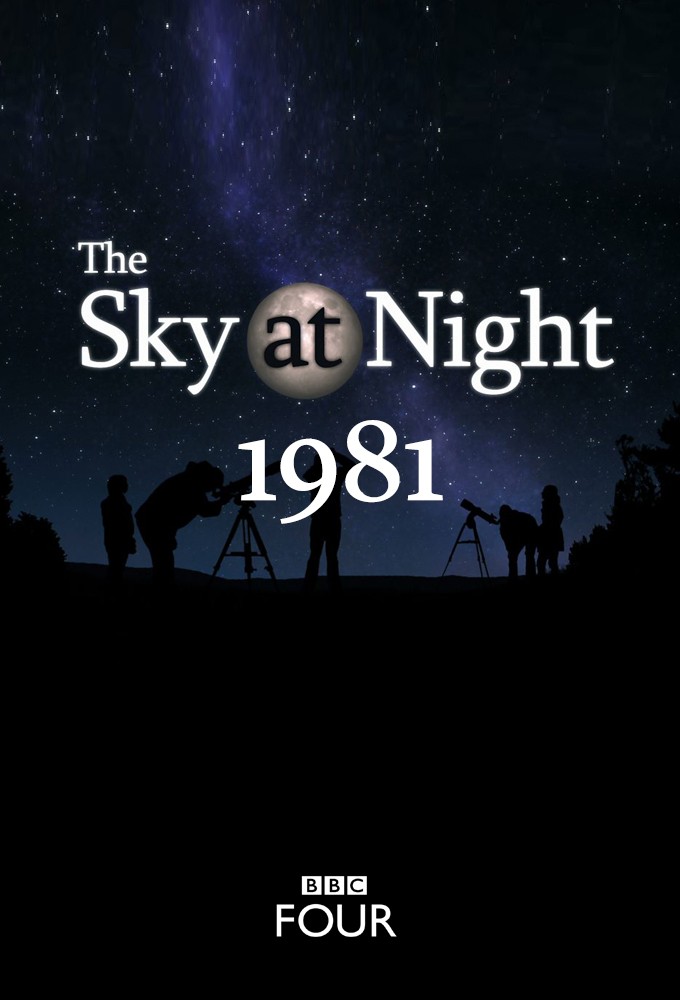
Saison 1981
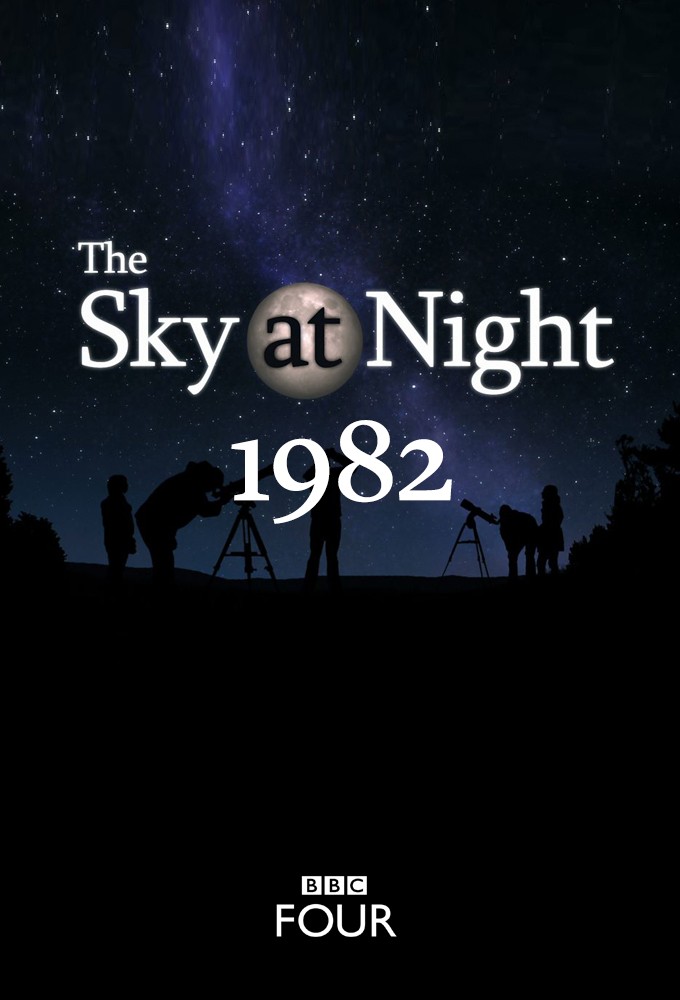
Saison 1982
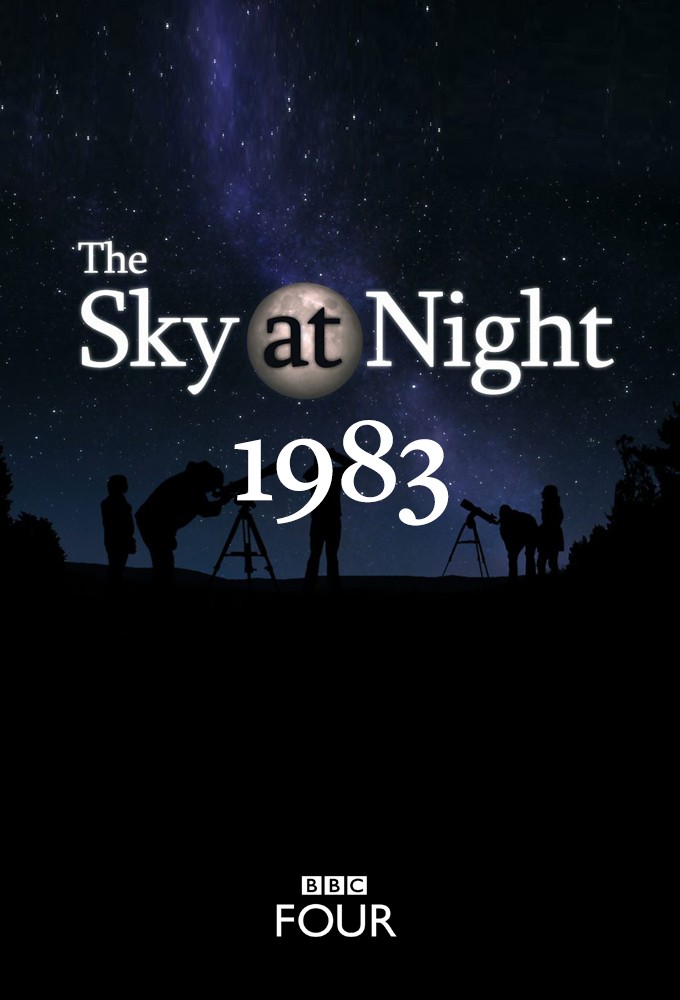
Saison 1983
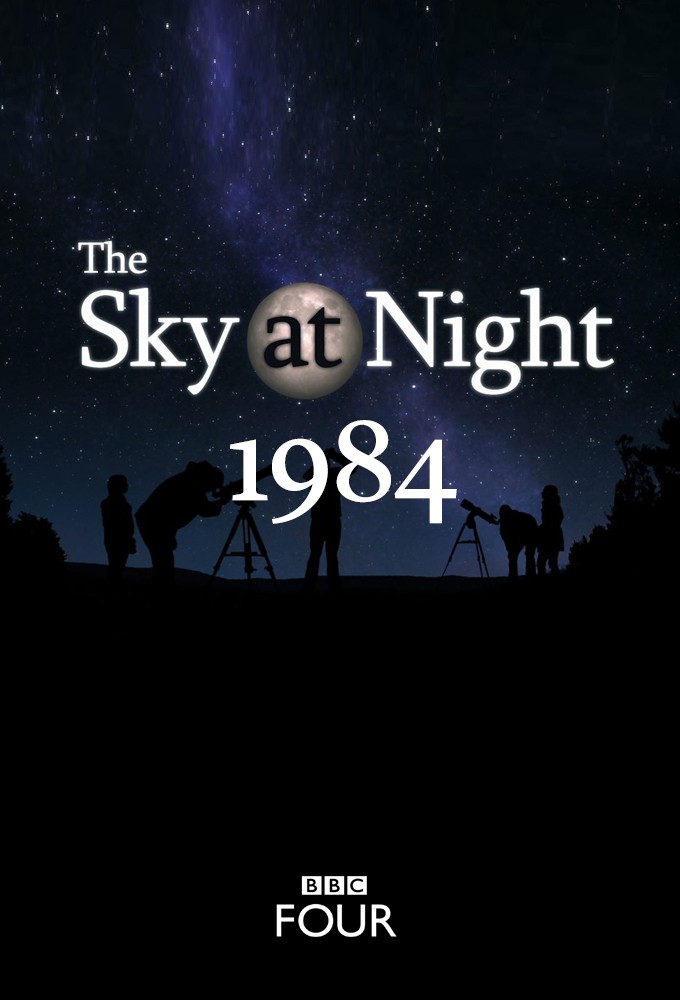
Saison 1984
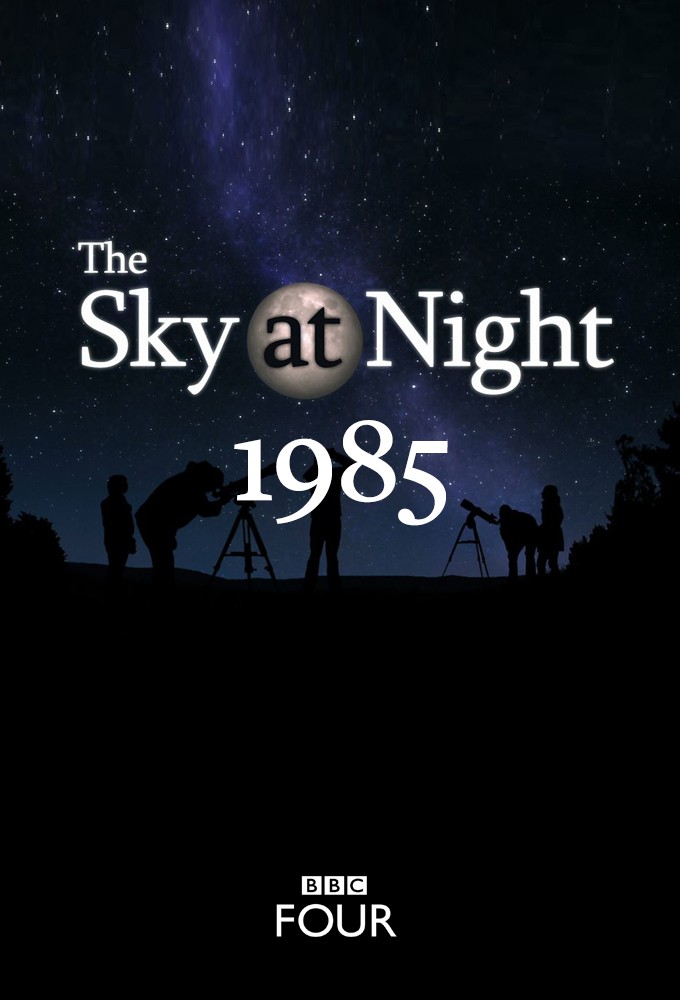
Saison 1985
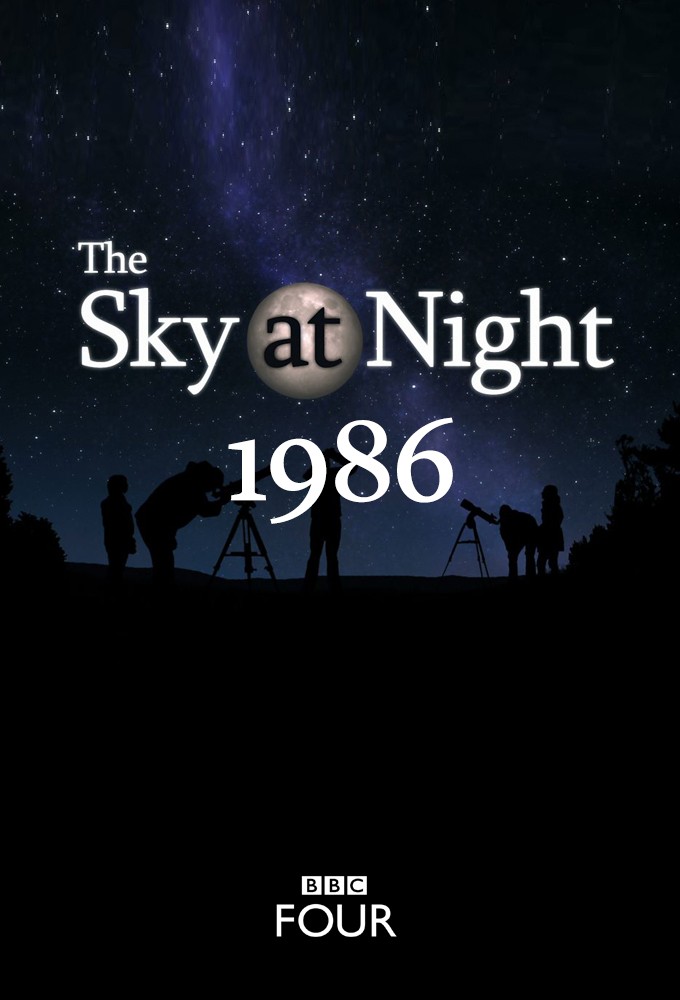
Saison 1986

Saison 1987
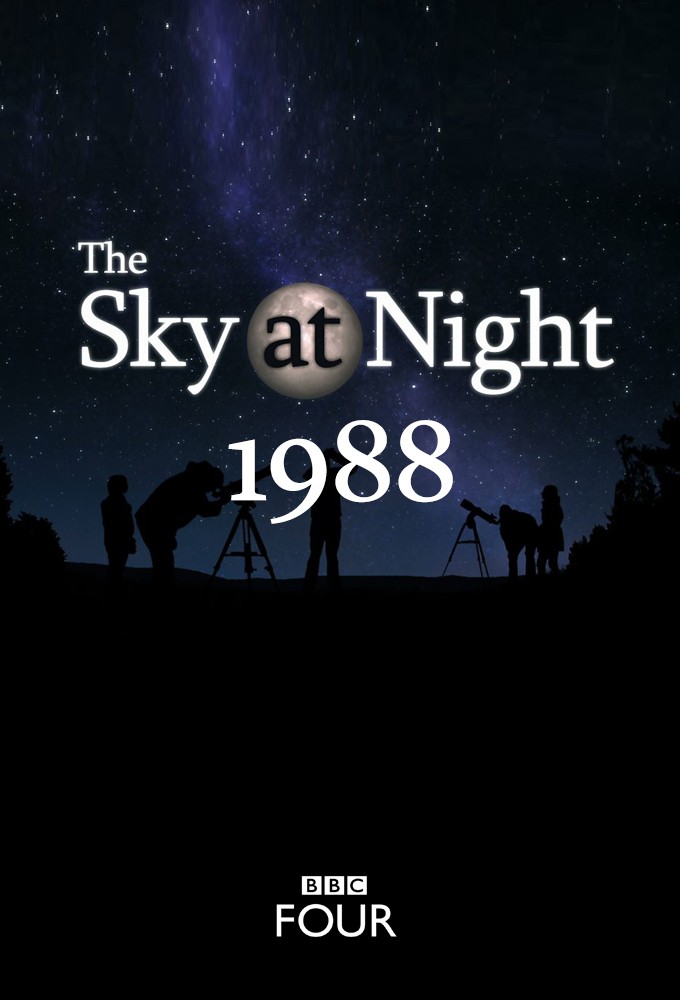
Saison 1988
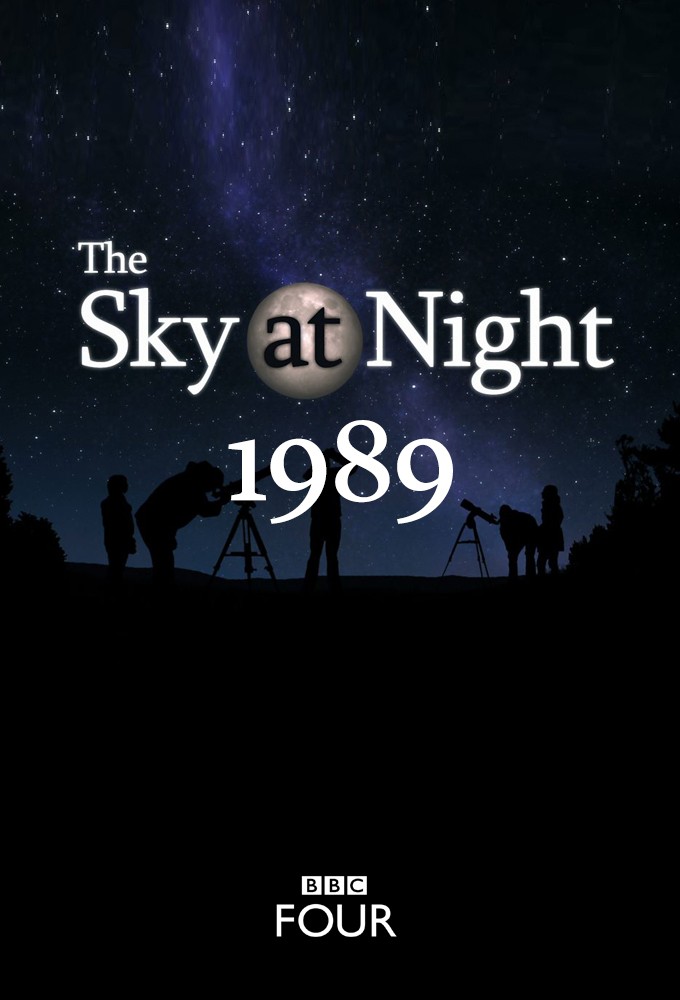
Saison 1989
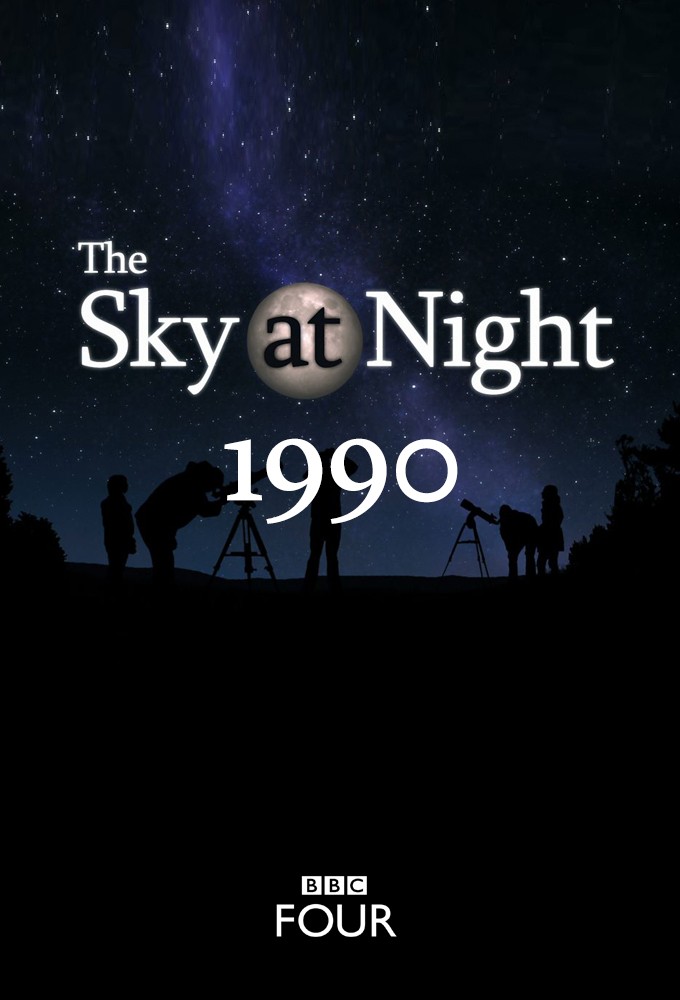
Saison 1990
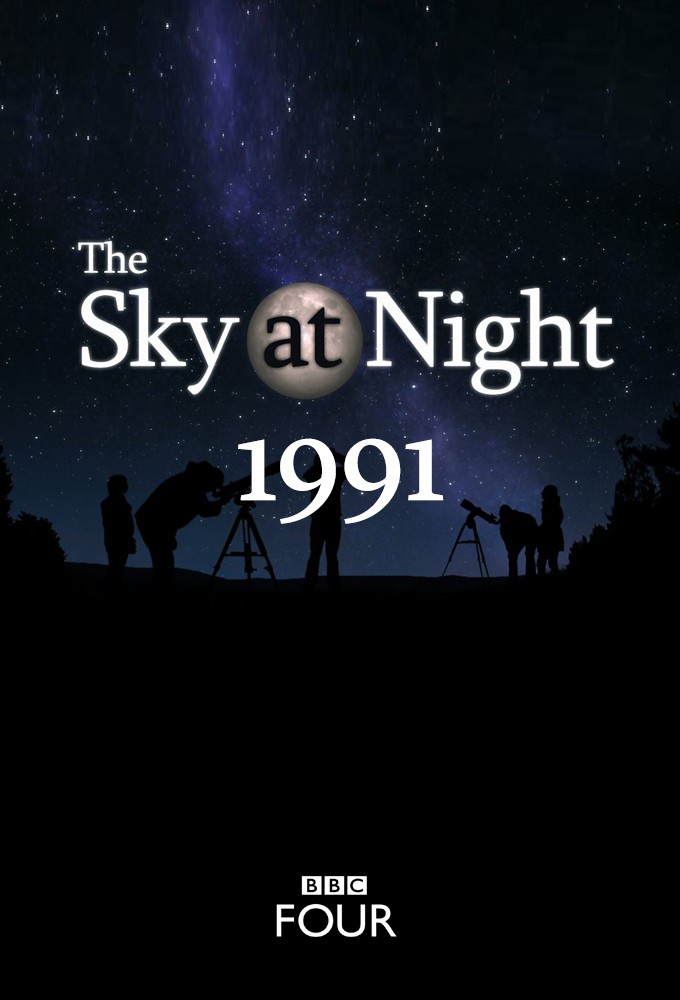
Saison 1991
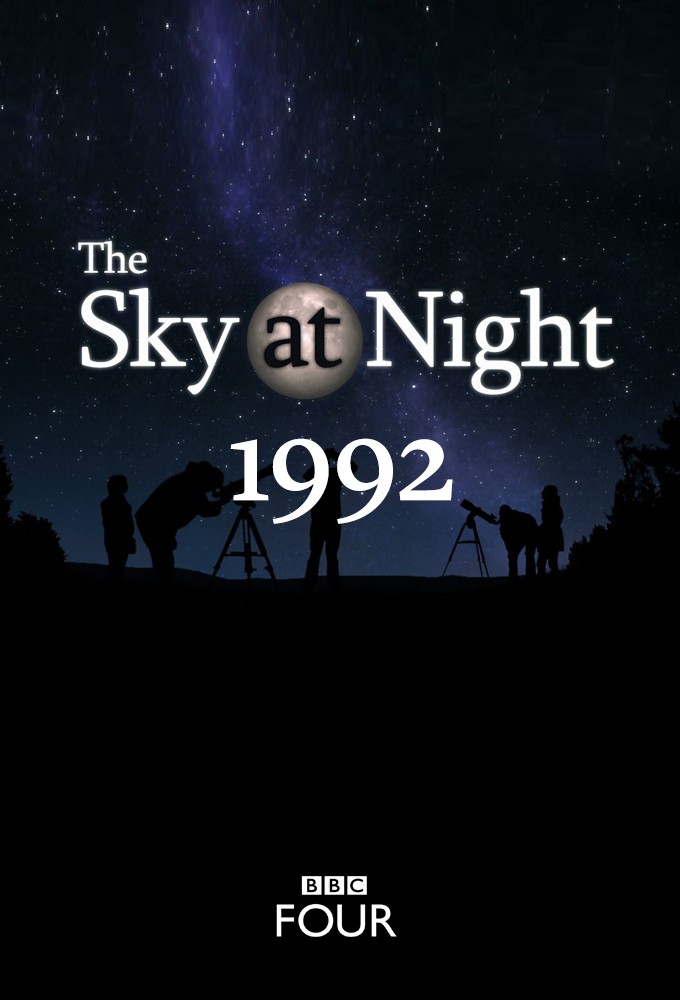
Saison 1992
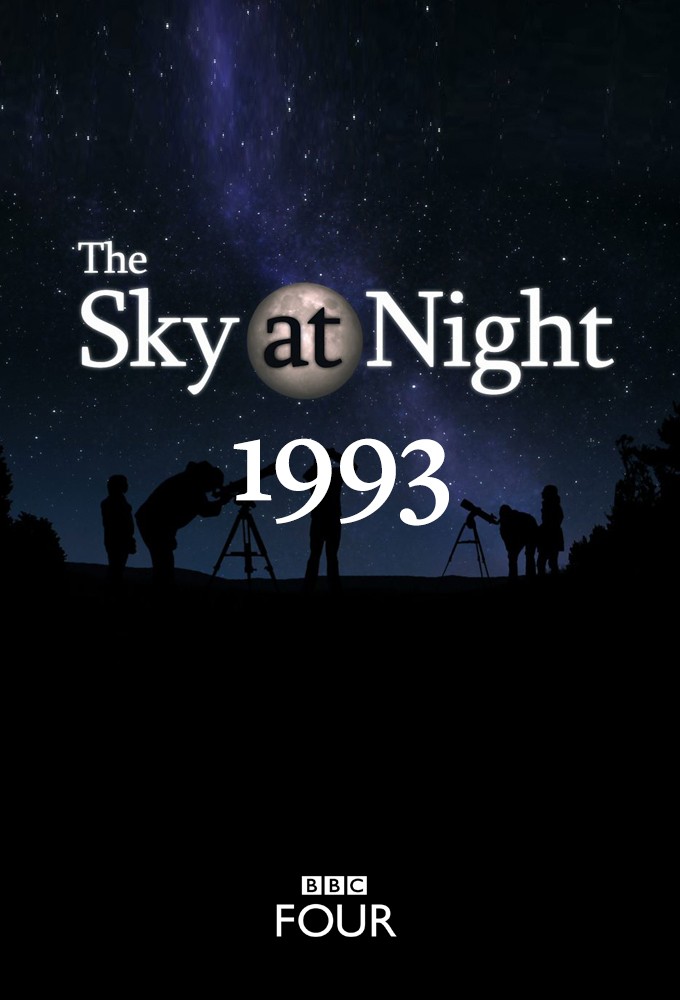
Saison 1993
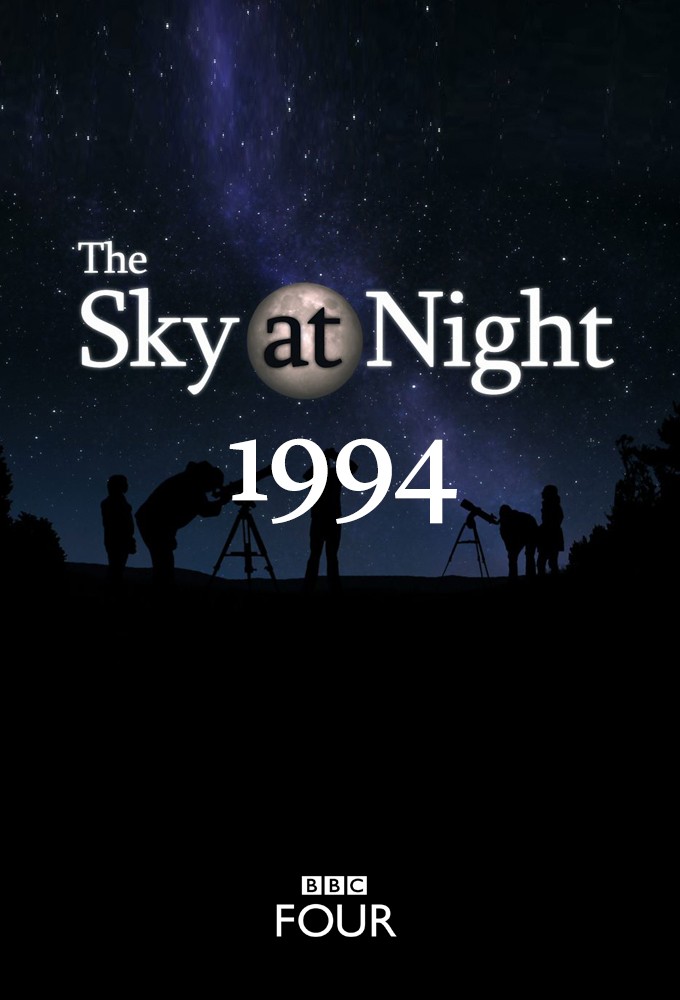
Saison 1994
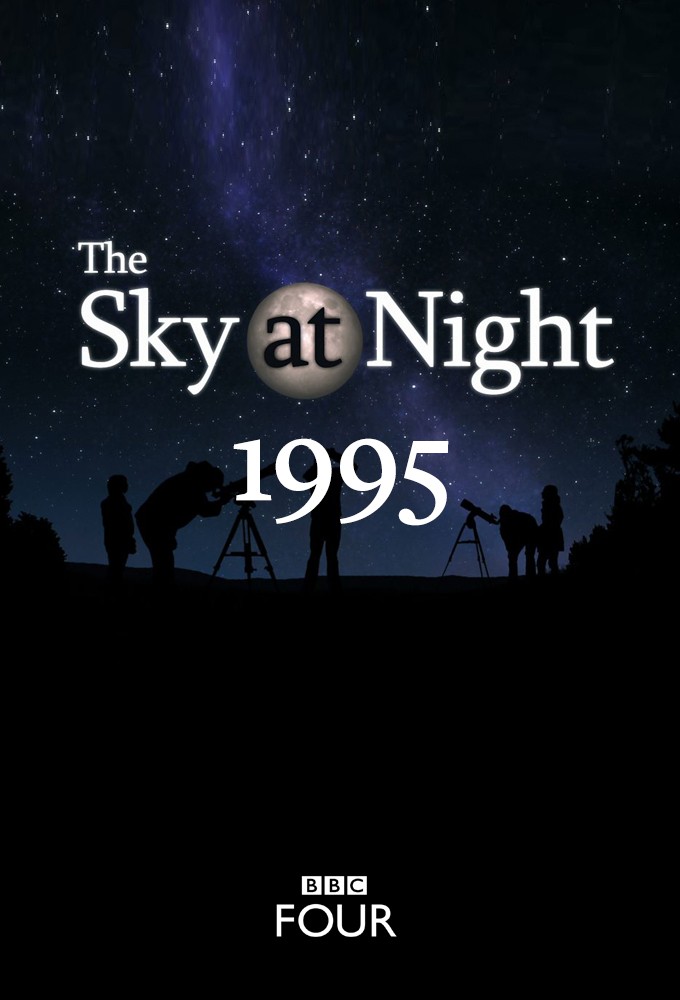
Saison 1995
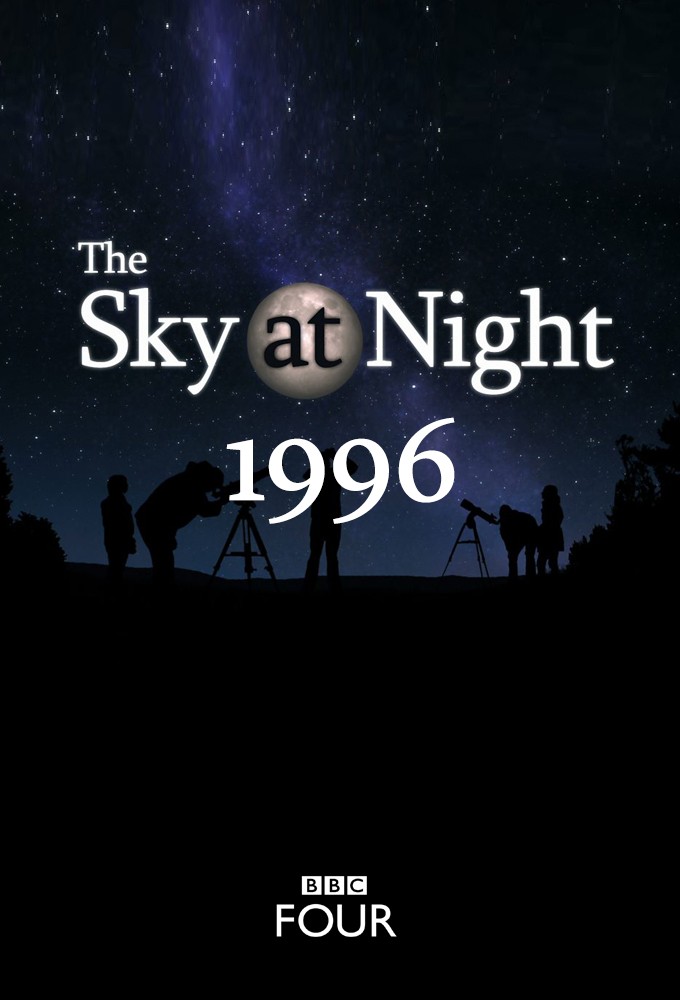
Saison 1996
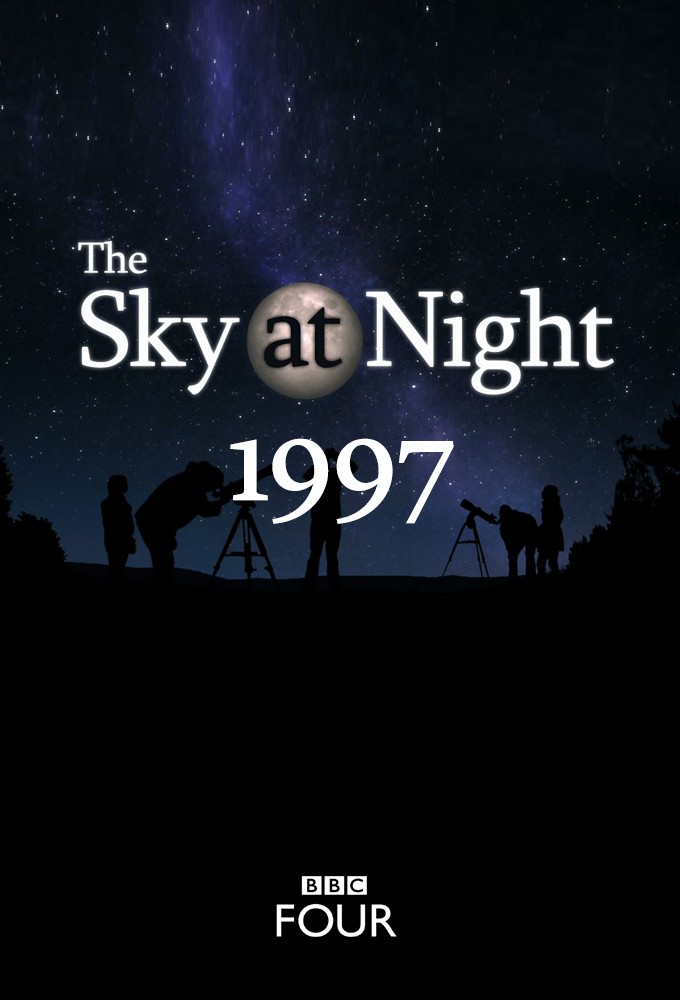
Saison 1997
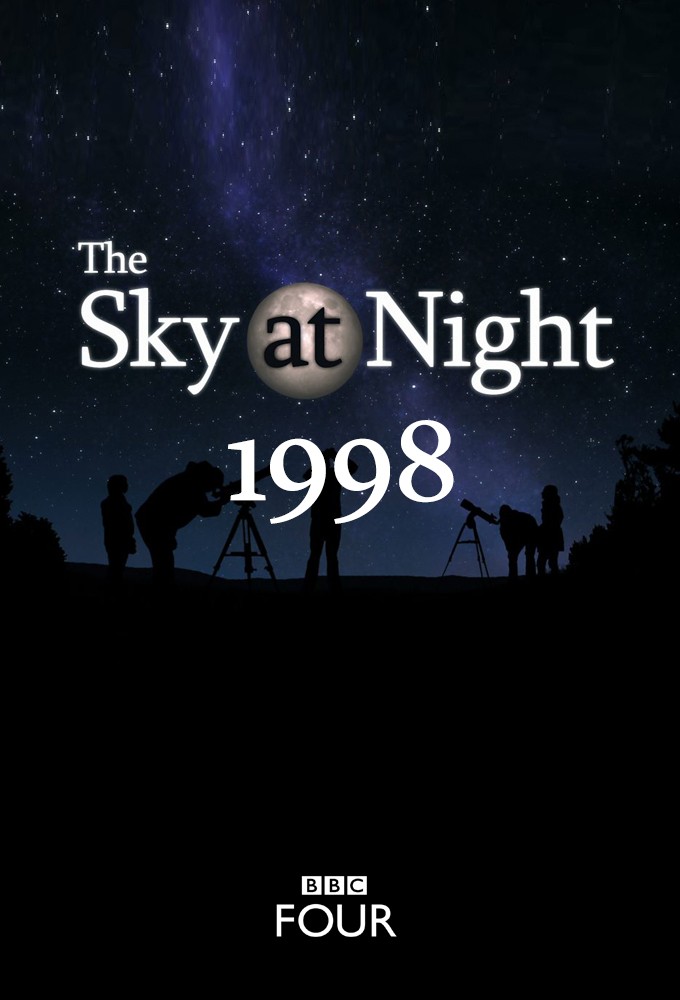
Saison 1998
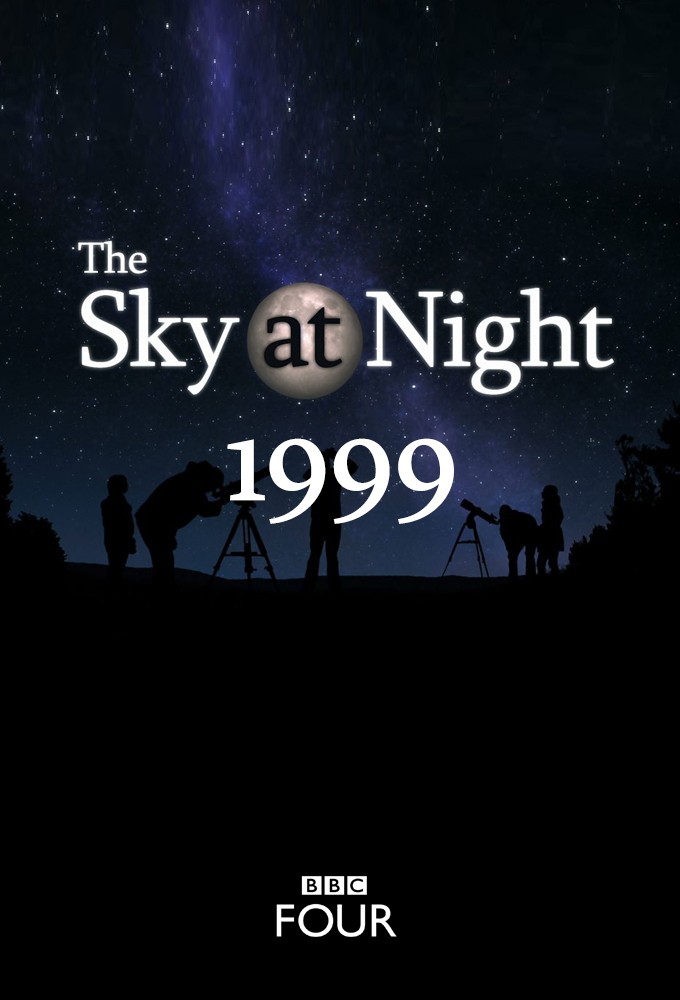
Saison 1999

Saison 2000

Saison 2001
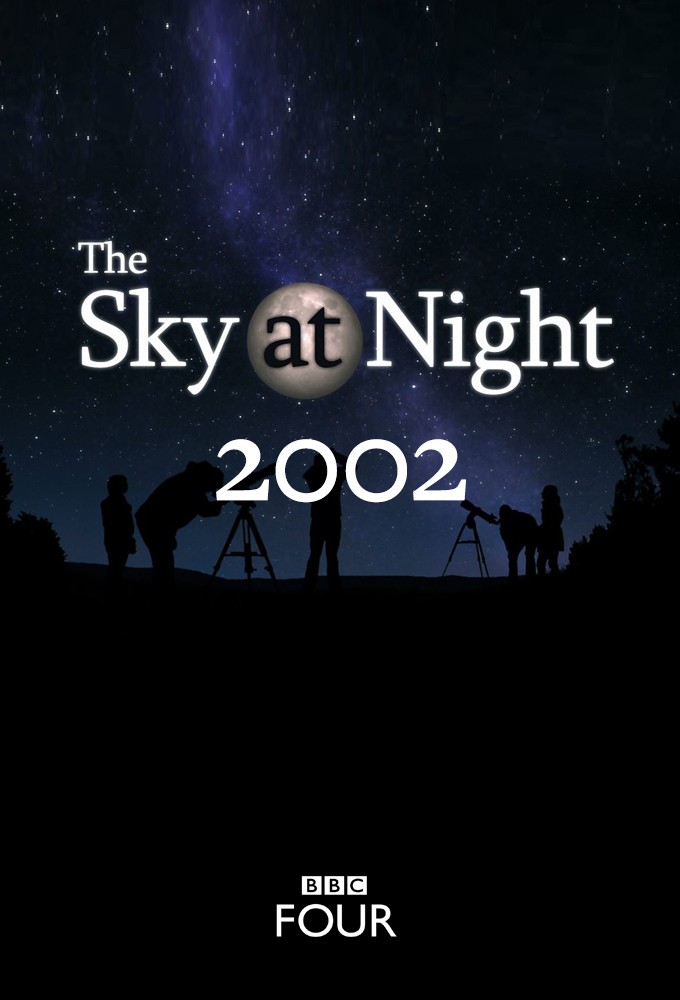
Saison 2002
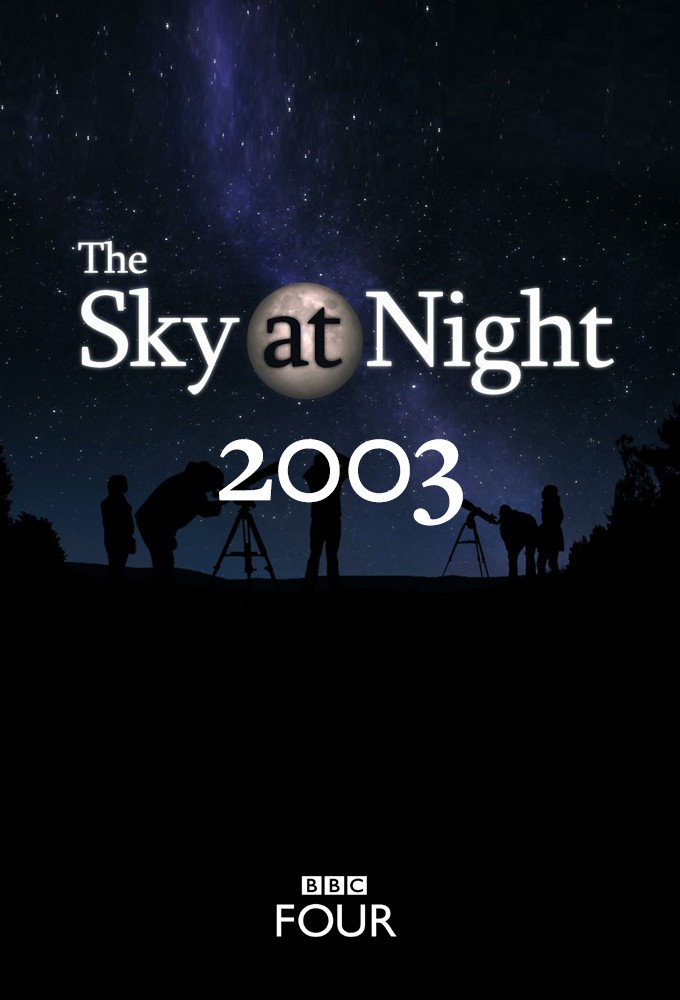
Saison 2003
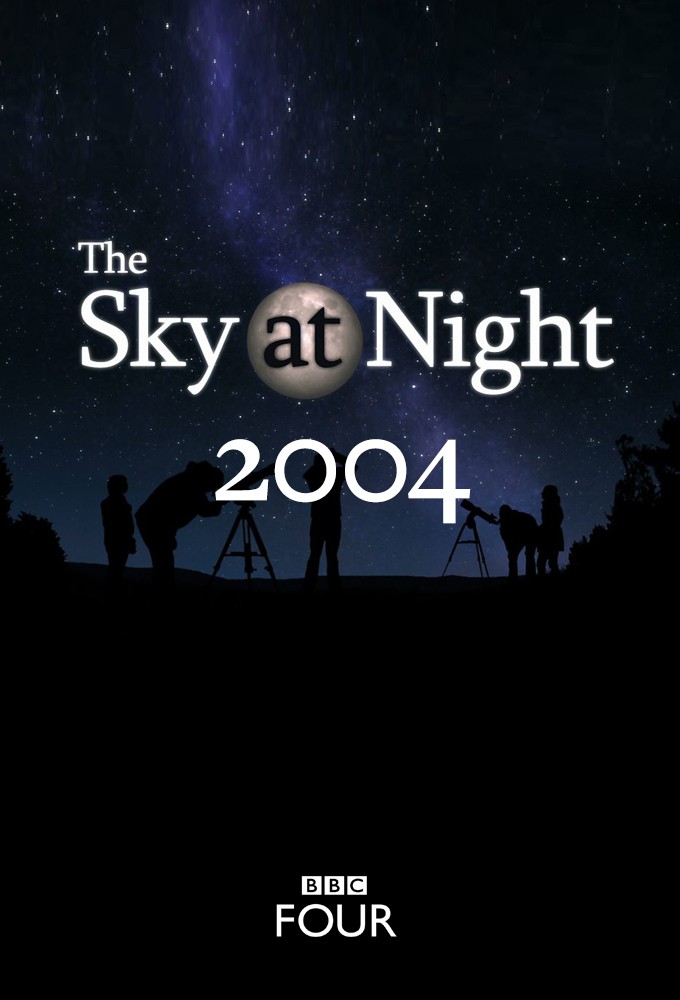
Saison 2004
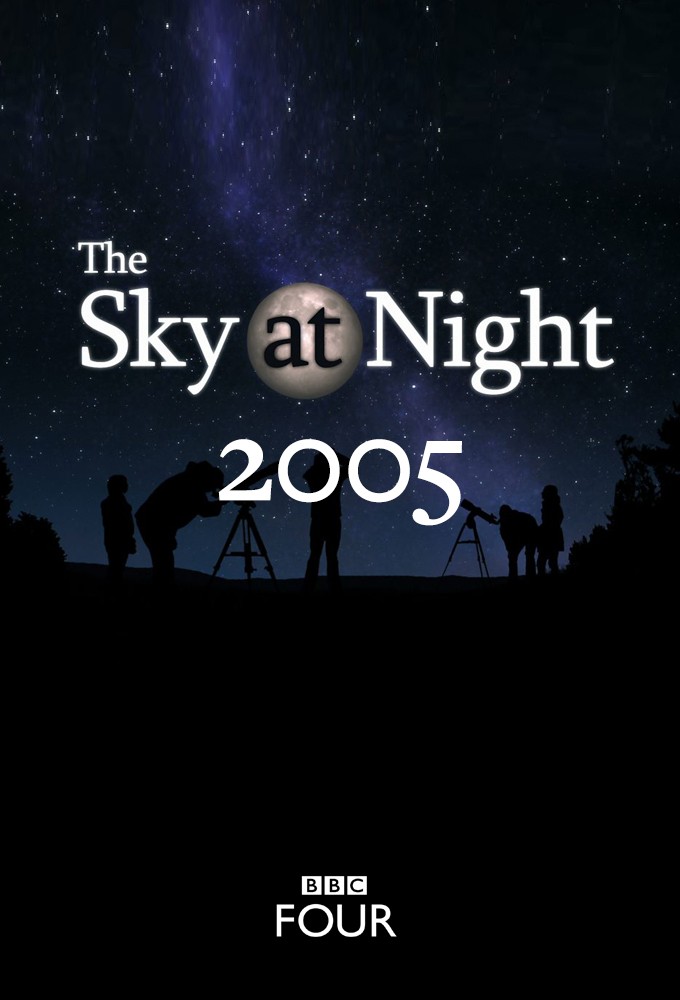
Saison 2005

Saison 2006
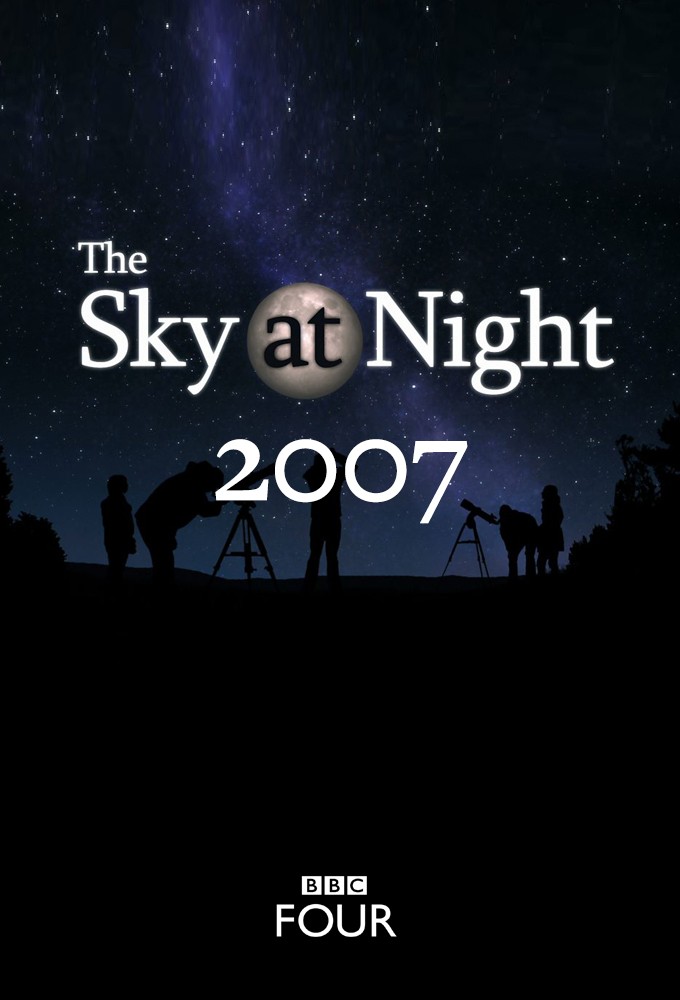
Saison 2007
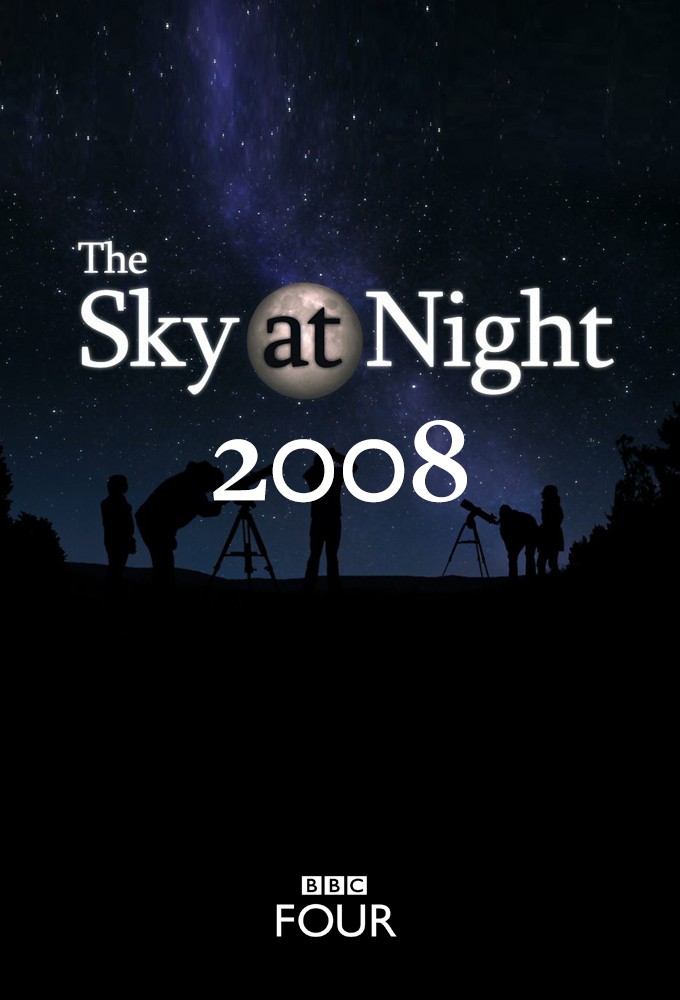
Saison 2008
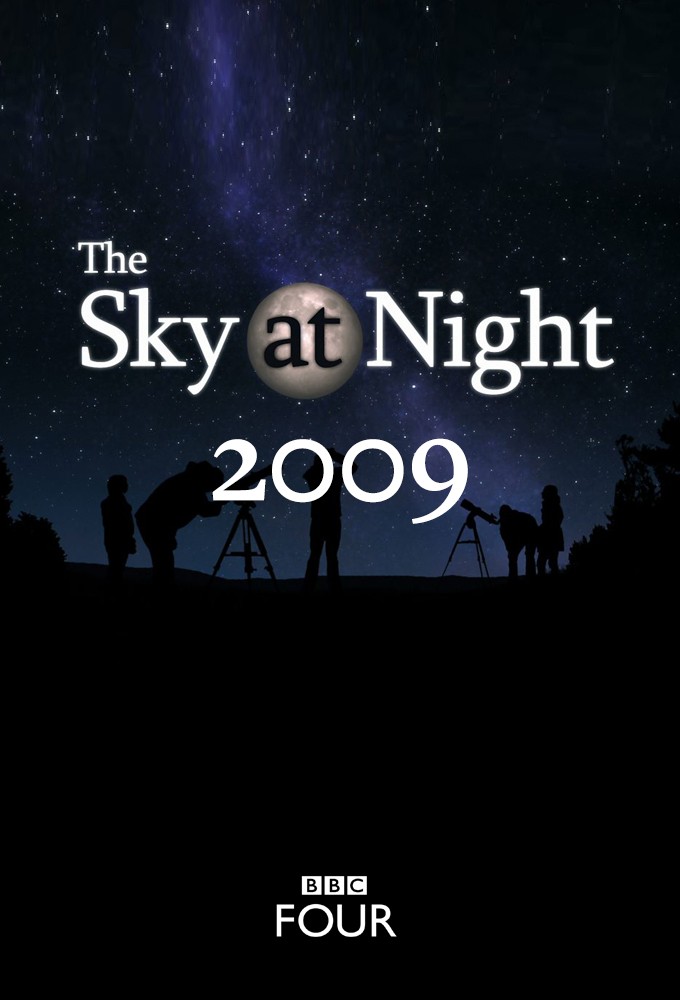
Saison 2009
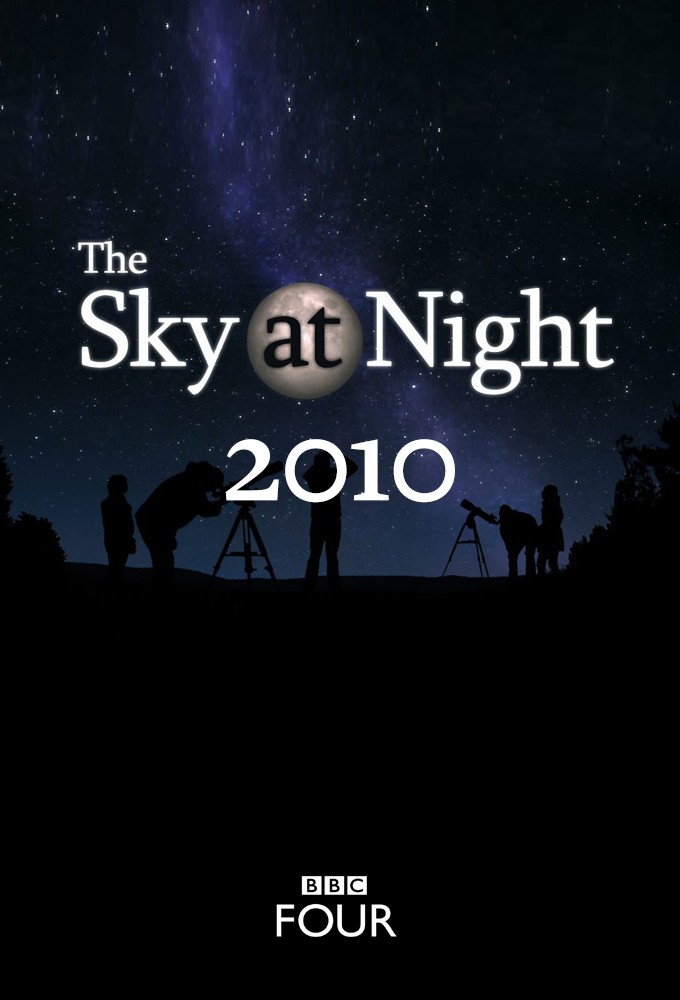
Saison 2010
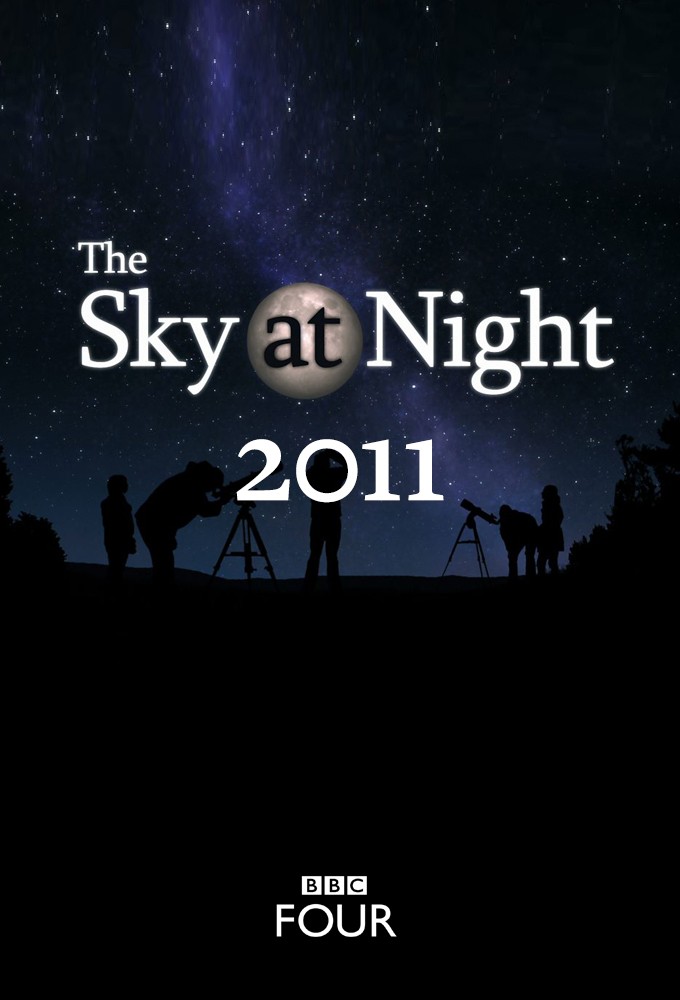
Saison 2011
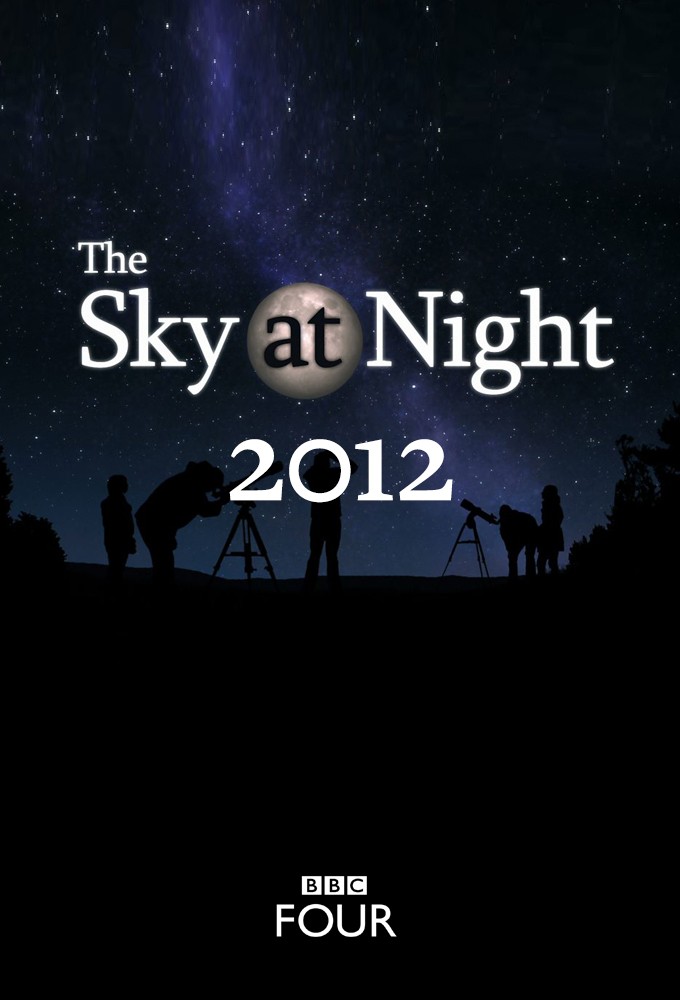
Saison 2012
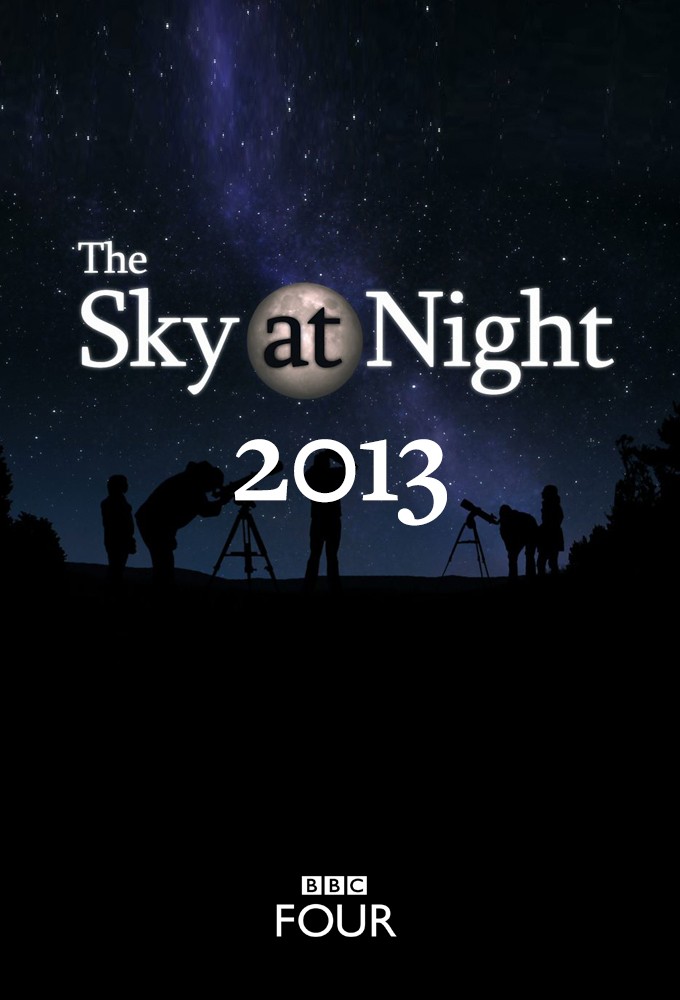
Saison 2013
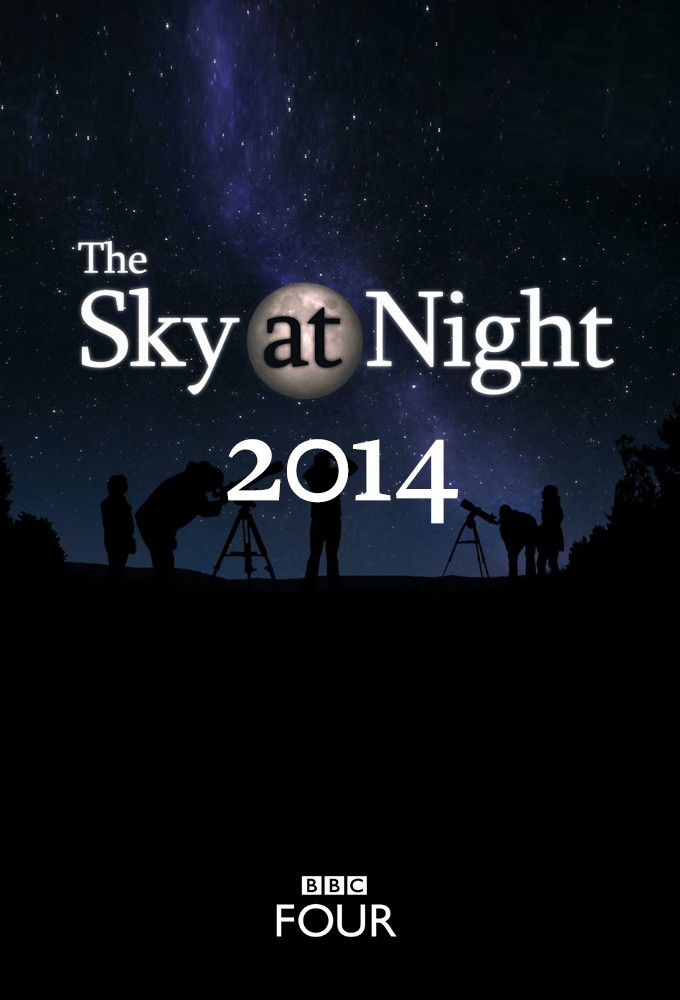
Saison 2014
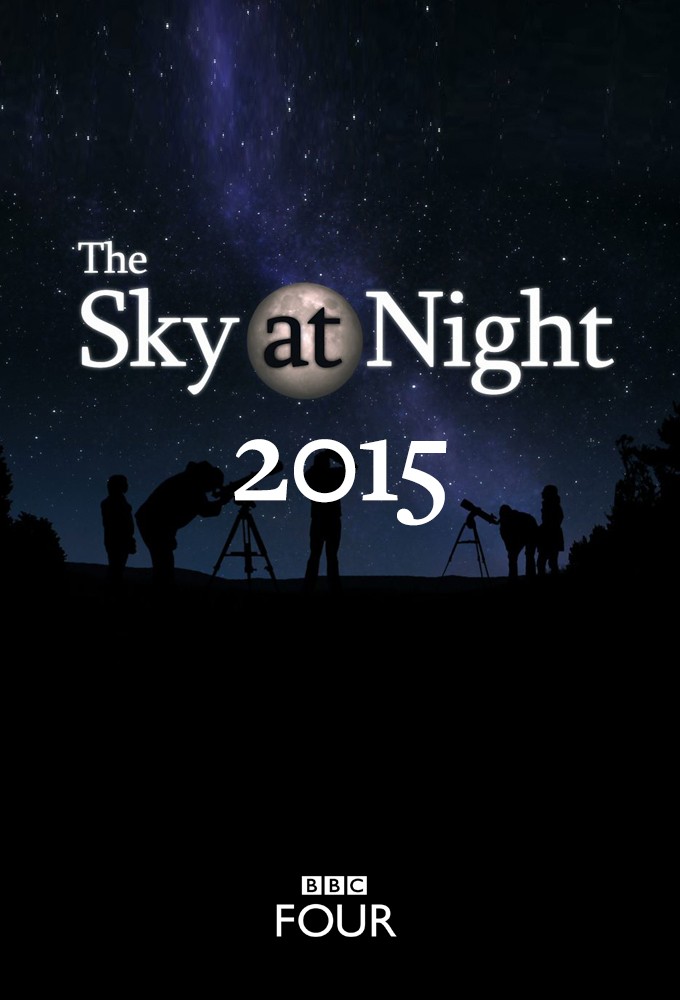
Saison 2015

Saison 2016
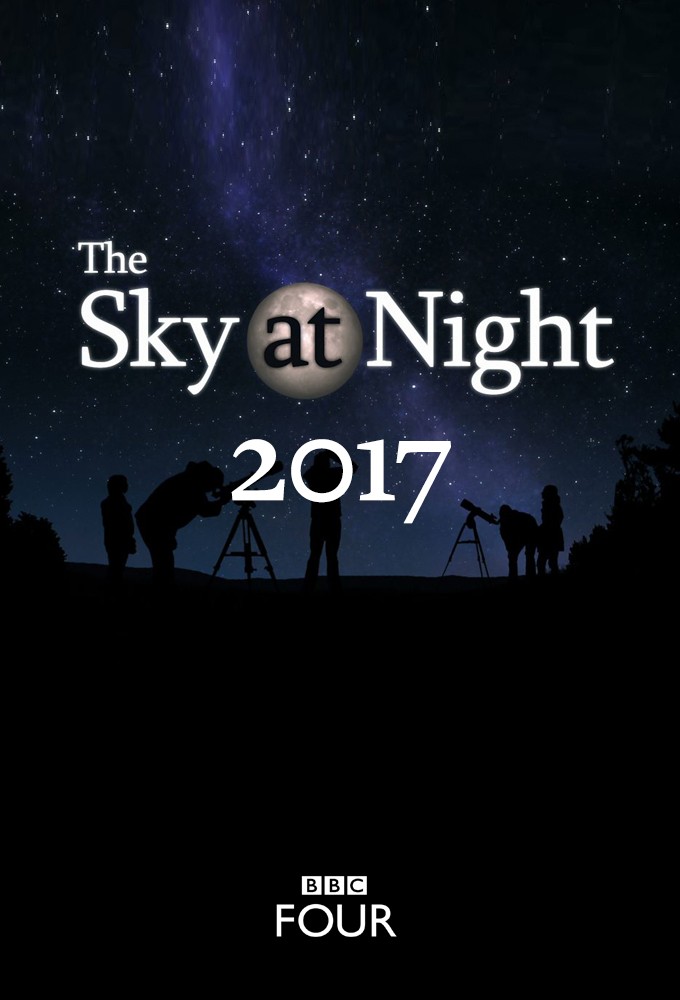
Saison 2017
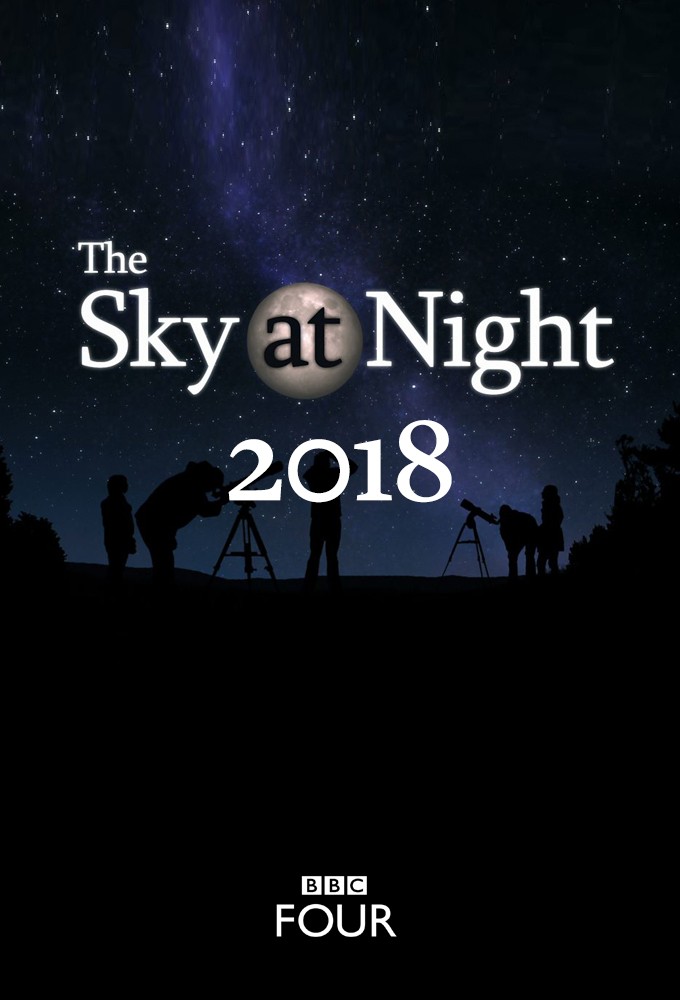
Saison 2018
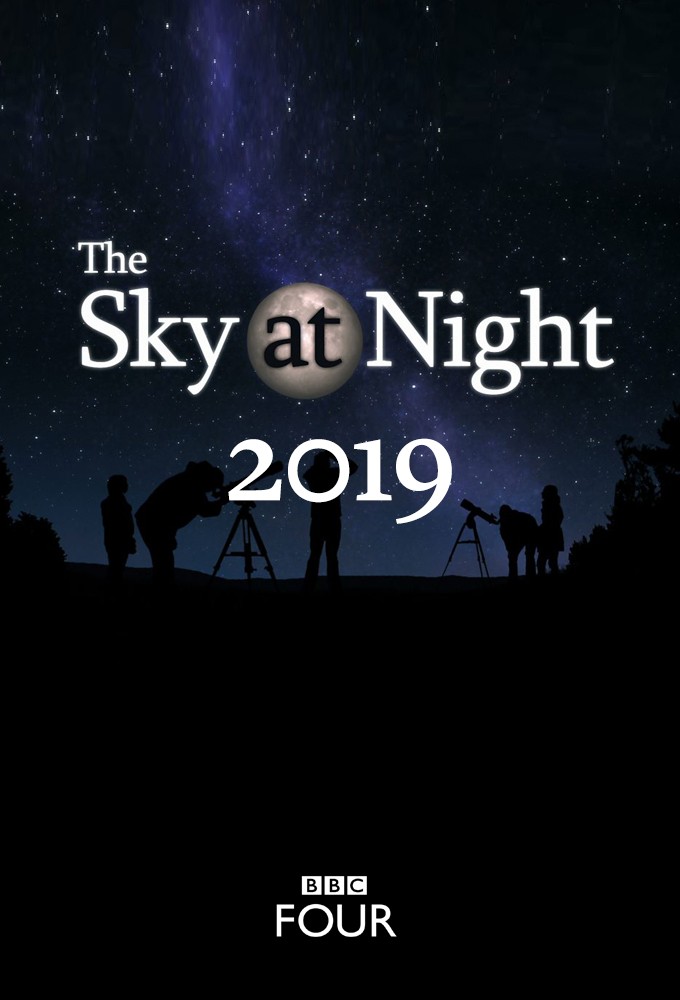
Saison 2019
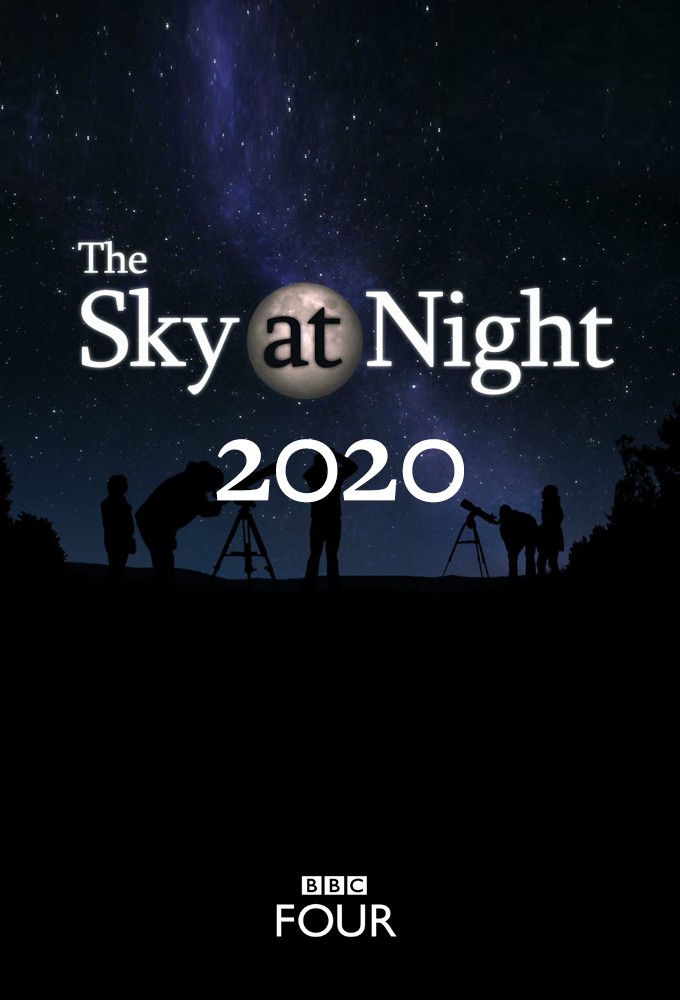
Saison 2020
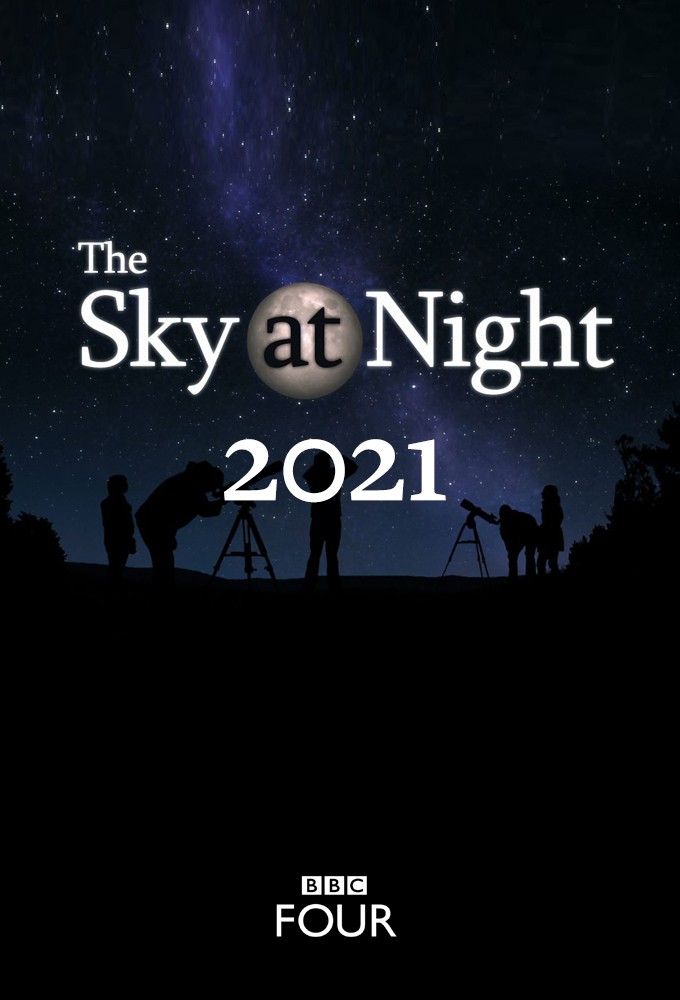
Saison 2021

Saison 2022

Saison 2023

Saison 2024

Saison 2025
Épisodes
Choisissez votre saison au dessus et découvrez les épisodes qui vous attendent !
Épisode 1 - Arend-Roland Comet
24 avril 1957
On 4 April 1957, Patrick Moore was sitting in a BBC studio at Lime Grove. “I was staring at a television monitor,” says Patrick. “On the screen appeared the words ‘The Sky at Night: a regular monthly programme presented by Patrick Moore’. Then I saw myself on the monitor and a thought flashed through my mind: ‘My entire career depends on what I do during the next 20 minutes.’” The first ever episode looked at the discovery of Comet Arend-Roland in November 1956.
Épisode 2 - Unknown
20 juin 1957
Épisode 3 - Unknown
20 juin 1957
Épisode 4 - Unknown
25 juillet 1957
Épisode 5 - Unknown
19 août 1957
Épisode 6 - No title
19 septembre 1957
New comet, first seen by Clive Hare
Épisode 7 - No title
19 octobre 1957
The Sun.
Épisode 8 - Unknown
16 novembre 1957
Épisode 9 - Unknown
14 décembre 1957
Épisode 1 - No title
8 janvier 1958
Sirius
Épisode 2 - No title
5 février 1958
Radio astronomy and Jodrell Bank
Épisode 3 - The Plough
5 mars 1958
Épisode 4 - No title
2 avril 1958
Penumbral eclipse and Mercury
Épisode 5 - The Moon
30 avril 1958
The Moon and Hampstead Observatory
Épisode 6 - Jupiter
28 mai 1958
A look at Jupiter
Épisode 7 - Dwarf and Giant Stars
20 juin 1958
Épisode 8 - No title
23 juillet 1958
Moon craters and rockets
Épisode 9 - No title
20 août 1958
Andromeda and other galaxies
Épisode 10 - Life On Other Planets
17 septembre 1958
Our Glaxy, globular clusters and the possibility of life on other planets.
Épisode 11 - No title
17 novembre 1958
A look at Mars
Épisode 12 - The Craters on the Moon
15 décembre 1958
Volcanic eruptions on the Moon
Épisode 1 - No title
12 janvier 1959
Latest Russian rocket successes and recent volcanic activities on the Moon
Épisode 2 - No title
9 février 1959
Life and death of the Sun
Épisode 3 - No title
9 mars 1959
Mercury and the Moon
Épisode 4 - No title
6 avril 1959
Binary stars
Épisode 5 - No title
4 mai 1959
The shape of our Galaxy
Épisode 6 - Minor Planets
10 juin 1959
The lesser-known bodies of the Solar System
Épisode 7 - No title
8 juillet 1959
Life on Venus
Épisode 8 - No title
5 août 1959
Lights in the sky, sunspot emissions, aurorae
Épisode 9 - No title
31 août 1959
Saturn - the ringed planet
Épisode 10 - No title
28 septembre 1959
Russian rocket hits the Moon and a new comet
Épisode 11 - The Front and Back of the Moon
26 octobre 1959
Russians took first photos of the far side of the Moon
Épisode 12 - Pairs of Suns
16 novembre 1959
Pairs of suns and further photos of the Moon
Épisode 13 - What was the Star of Bethlehem
14 décembre 1959
Various theories for the Star of Bethlehem
Épisode 1 - The Great Spiral
20 janvier 1960
The Andromeda Galaxy
Épisode 2 - Uranus
17 février 1960
Russian astonomy, and tracking Sputnik
Épisode 3 - Why Stars Twinkle
16 mars 1960
Hopes for British satellites
Épisode 4 - Visitor from Space
11 avril 1960
Comets and comet hunting
Épisode 5 - Uranus
11 mai 1960
The giant outer planet
Épisode 6 - Star Clouds of Sagittarius
8 juin 1960
The star clouds of Sagittarius
Épisode 7 - Other Moons of Saturn and Jupiter
11 juillet 1960
The moons of Saturn and Jupiter
Épisode 8 - Celestial Fireworks
8 août 1960
Meteors and meteorites
Épisode 9 - Measuring the Universe
31 août 1960
Measuriing the Universe
Épisode 10 - The Moon
27 septembre 1960
Patrick Moore reviews the historic Soviet mission to launch a manned rocket into space and discusses with Gilbert Fielder, Director of the Lunar Section of the British Astronomical Association, the atmospheric conditions to be faced on the moon and the problems that could be solved by a successful landing of instruments there.
Épisode 11 - Make-up of the Stars
10 octobre 1960
Patrick Moore describes how the modern spectroscope has enabled astronomers to find out what different stars are made of and how bright they actually are.
Épisode 12 - Astronomy in Russia
7 novembre 1960
Épisode 13 - Tektites
5 décembre 1960
Épisode 1 - Storms In The Sun
30 janvier 1961
Sunspots.
Épisode 2 - No title
23 février 1961
The respective theories of Prof Sir Martin Ryle and Prof Fred Hoyle.
Épisode 3 - Life On Mars
20 mars 1961
In this programme, postponed from February, Patrick Moore discusses with Dr. F. L. Jackson, of King's College Hospital Pathology Department, the results of certain experiments carried out specially on behalf of 'The Sky at Night'. In these experiments various living organisms have been subjected to the conditions of atmosphere and temperature which exist on Mars.
Épisode 4 - Life On The Moon
24 avril 1961
Épisode 5 - Venus
15 mai 1961
Venus - a look forward to lunik 4 results.
Épisode 6 - Radio Astronomy and the Amateur
5 juin 1961
Radio astronomy
Épisode 7 - Cosmic Debris
10 juillet 1961
Épisode 8 - 50th Programme
21 août 1961
George Hole's telescope and Royal Observatory, Edinburgh (Three earlier episodes were 'specials', making the '50th Programme' number 54)
Épisode 9 - Astronomy In Space
18 septembre 1961
The mounting of telescopes in satellites.
Épisode 10 - Has The Earth Three Moons?
30 octobre 1961
Épisode 11 - Star Clusters
22 novembre 1961
Épisode 12 - A Telescope For Christmas
20 décembre 1961
Épisode 1 - Volcanoes or Meteorites?
17 janvier 1962
Do volcanoes or meteorites cause Moon craters?
Épisode 2 - Life In The Universe?
21 février 1962
Épisode 3 - The Farthest Planet
14 mars 1962
Pluto, on the boundary of the solar system, is the planet most remote from the earth. Patrick Moore discusses this strange small world whose mysteries have puzzled astronomers ever since its discovery in 1930.
Épisode 4 - Space Needles
25 avril 1962
The recent United States attempt to put millions of fine copper wires into orbit round the earth for communication purposes has aroused fierce objections from some astronomers. Patrick Moore discusses this controversial subject with Colin Ronan.
Épisode 5 - The Space Fog
23 mai 1962
Is space empty? Astronomers used to think so, but nowadays it is believed there is matter spread out between the stars so that we look out through a sort of cosmic fog. Patrick Moore talks about what astronomers have learned by studying this matter.
Épisode 6 - Astronomy And The Ancients
27 juin 1962
Every year many people watch the midsummer sun rise over the avenue at Stonehenge. Patrick Moore discusses how much the ancient peoples knew of astronomy and how far the old Stone Circles of Britain were aligned astronomically.
Épisode 7 - Signals From Jupiter
16 juillet 1962
Frank Hyde's radio observatory.
Épisode 8 - Saturn
13 août 1962
A look at Saturn
Épisode 9 - Keeping Space Clean
10 septembre 1962
The first interplanetary rockets could carry with them bacteria from earth which might contaminate other planets. Returning spacemen might bring back new and dangerous bacteria which could endanger our existence here. Patrick Moore, Sir Bernard Lovell, and Dr. Francis Jackson give their views on this vital aspect of space travel.
Épisode 10 - Algol, The Demon Star
17 octobre 1962
Épisode 11 - Journey to Venus
21 novembre 1962
The American spacecraft Mariner II should be at its nearest to Venus on about December 14. Patrick Moore discusses with Howard Miles, Director of the Artificial Satellite Section of the British Astronomical Association, what it may reveal about the mysterious cloud-covered planet.
Épisode 12 - The Moving Earth
19 décembre 1962
Épisode 1 - Space 63
23 janvier 1963
Épisode 2 - Space Stations For Mars
20 février 1963
Épisode 3 - Venus Revealed
20 mars 1963
Results of Mariner 2.
Épisode 4 - No title
5 avril 1963
Jodrell Bank.
Épisode 5 - Exploding Stars
17 avril 1963
Épisode 6 - Science Fact & Science Fiction
17 mai 1963
Including a report on the discovery of Barnard's Star.
Épisode 7 - The Birth Of The Planets
12 juin 1963
Épisode 8 - The Active Moon
16 juillet 1963
Russian report on traces of volcanic activity.
Épisode 9 - Eclipse Of The Sun
21 juillet 1963
Special edition.
Épisode 10 - Sunspots (The Sun In Action)
13 août 1963
Cosmic ray flare on the Sun of 16 July 1959.
Épisode 11 - Manned Bases On The Moon
10 septembre 1963
Many of the early Sky at Night programmes were destroyed or lost from the BBC library. Recently this early and very rare programme from 1963 with Arthur C Clarke, was discovered in an African TV station. Patrick and Arthur were both members of the British Interplanetary Society and here they discuss bases on the Moon and Mars. Arthur C Clarke made very few interviews, so this really is a broadcasting gem- once lost, but now found.
Épisode 12 - Measuring The Universe
11 octobre 1963
Épisode 13 - Jupiter Disturbed
6 novembre 1963
Épisode 14 - Star Myths
13 décembre 1963
Épisode 1 - Ghosts Of The Universe
10 janvier 1964
Épisode 2 - Signals From Jupiter
7 février 1964
Jupiter research and Lunik 6.
Épisode 3 - The Surface Of The Moon - Rock Or Dust?
6 mars 1964
Recent Flight of Ranger 6 to the Moon.
Épisode 4 - Space Navigation
3 avril 1964
Épisode 5 - Ancient And Modern
1 mai 1964
Armagh Observatory and the Magellanic Clouds.
Épisode 6 - Moon Gathering
5 juin 1964
New York symposium on the structure of the Moon.
Épisode 7 - Midsummer Sense
26 juin 1964
Stonehenge and Egyptian theories of the Sun and planets.
Épisode 8 - Quasars
24 juillet 1964
Description given to recently discovered objects.
Épisode 9 - Red Gient, Yellow Planet, Blue Sun
21 août 1964
Épisode 10 - Explosions In Space
18 septembre 1964
Épisode 11 - Planet Earth
30 octobre 1964
Épisode 12 - The Leonid Meteors
13 novembre 1964
Épisode 13 - How Old Is The Earth
11 décembre 1964
Current evidence on formation of Solar System.
Épisode 1 - Unwelcome Atmospheres
15 janvier 1965
Épisode 2 - Lava Or Dust?
12 mars 1965
Ranger 8 photos of Moon's surface.
Épisode 3 - Ancient Lore
2 avril 1965
Mythology of stars.
Épisode 4 - Naked Eye Astronomy
30 avril 1965
Useful observations without instruments.
Épisode 5 - How Long Is A Day?
4 juin 1965
Épisode 6 - Space Weather
25 juin 1965
Épisode 7 - Communicating With Other Worlds
23 juillet 1965
Épisode 8 - Mars In Shot
20 août 1965
Mariner 4 photos.
Épisode 9 - Rethinking The Universe
17 septembre 1965
Quasars, recently discovered, have cast doubt on existing knowledge.
Épisode 10 - Ninety Eight Inches
8 octobre 1965
The lsaac Newton Telescope.
Épisode 11 - The Comet - Special Edition
21 octobre 1965
Épisode 12 - The Unsteady Universe
5 novembre 1965
Theories on the origin of the Universe.
Épisode 13 - The Extra Planet
3 décembre 1965
Épisode 1 - The Moons Of Jupiter
14 janvier 1966
Épisode 2 - Russian Moon Shot - Special Edition
11 février 1966
Épisode 3 - The Barwell Meteorite
11 février 1966
The village of Barwell is hit by a meteorite.
Épisode 4 - Man Of The Moon
11 mars 1966
Épisode 5 - Stars In Their Courses
12 avril 1966
Is astronomy a good basis for further education?
Épisode 6 - Solar Eclipse
6 mai 1966
The partial eclipse of 20.5.1966
Épisode 7 - American Moon Soft Landing
3 juin 1966
Épisode 8 - The Royal Observatory
3 juin 1966
The History of the Astronomers Royal.
Épisode 9 - Activity On The Moon
8 juillet 1966
Épisode 10 - Sun Time
5 août 1966
Use of sundials in modern astronomy and Surveyor 1.
Épisode 11 - The Outer Galaxies
9 septembre 1966
Distant galaxies, Lunar Orbiter 1, Lunik 2 and comets.
Épisode 12 - The Planet With Rings
14 octobre 1966
A dose look at Saturn.
Épisode 13 - Fireworks From Space
11 novembre 1966
The Leonid Meteor Shower.
Épisode 14 - The End Of The World
9 décembre 1966
Report of a meteor shower in America.
Épisode 1 - The Giant Planet
6 janvier 1967
Jupiter and the latest Moon pictures
Épisode 2 - Oberving Earth Satellites
3 février 1967
How amateurs can track satellites
Épisode 3 - Gas Clouds In Space
3 mars 1967
Planetary nebulae where new stars are forming, and Lunar Orbiter 3
Épisode 4 - Craters On The Moon
21 mars 1967
Épisode 5 - The Past 10 Years Of The Sky At Night
28 avril 1967
Clips of the solar eclipse (15.2.61); Sir R Woolley (3.6.66); Martian experiment (20.3.61); 50th programme (21.8.61)
Épisode 6 - A New Look At Mars
26 mai 1967
The possibility of life on Mars
Épisode 7 - Vega
23 juin 1967
One of the bright stars in the Summer Triangle
Épisode 8 - Lord Rosse's Great Telescope
21 juillet 1967
A history of the telescope, filmed At Birr Castle
Épisode 9 - Exploding Stars
18 août 1967
The discovery of Nova Delphini
Épisode 10 - Invisible Astronomy
15 septembre 1967
Épisode 11 - Cameras Around The Moon
13 octobre 1967
How photos are sent back from the Moon
Épisode 12 - Venus Observed
10 novembre 1967
Épisode 13 - Lumps From Outer Space
8 décembre 1967
Meteors
Épisode 1 - Home Build Observatories
5 janvier 1968
Henry Hatfield's Observatory
Épisode 2 - Calendars Of Other Worlds
2 février 1968
The length of days on other planets
Épisode 3 - The New Planetarium
1 mars 1968
Armagh Planetarium
Épisode 4 - Black Clouds In The Galaxy
29 mars 1968
Épisode 5 - Flights Of Space Fancy
26 avril 1968
Épisode 6 - A Close Pass By Icarus
24 mai 1968
The nature and movement of asteroids
Épisode 7 - The Unquiet Sun
21 juin 1968
Sunspots
Épisode 8 - Pulsars
19 juillet 1968
Épisode 9 - The Structure Of The Moon
16 août 1968
Épisode 10 - The Siberian Eclipse Of The Sun
9 septembre 1968
Épisode 11 - The Total Eclipse Of The Sun
7 octobre 1968
Épisode 12 - The Clock Of Space
4 novembre 1968
Épisode 13 - Venus - The Hot Planet
2 décembre 1967
Épisode 14 - The Moon And The Earth
30 décembre 1968
Superstitions associated with Moon and Apollo 8 orbit
Épisode 1 - The Moon - A New Era
27 janvier 1969
The future of space research; possible contamination of Mars by space probes
Épisode 2 - How Much Can You See?
24 février 1969
Studying stars with a telescope
Épisode 3 - Jupiter - The Giant Planet
24 mars 1969
Épisode 4 - The Moon And The Earth
21 avril 1969
The possible effect of the Moon on weather
Épisode 5 - Mars: Target Two
19 mai 1969
The possibility of plant life on Mars
Épisode 6 - Recent Moon Pictures
30 mai 1969
Épisode 7 - When Venus Crosses The Sun
16 juin 1969
The transit of Venus from Tahiti in 1769
Épisode 8 - The Needles Of Space
14 juillet 1969
Possible danger of meteorites hitting Moon spacecraft
Épisode 9 - Mariner To Mars
3 août 1969
Patrick Moore takes a look at the close up pictures of Mars taken by the American Mars probe, Mariner 6.
Épisode 10 - The Weather of Mars
11 août 1969
Does it ever rain on Mars? Are there clouds, winds, and storms? The Mariner probes have sent back new, fascinating information about the Red Planet, but even now there are many problems to be solved. Patrick Moore talks about the Martian climate and what future astronauts may expect to find there.
Épisode 11 - Moonquakes
18 septembre 1969
Épisode 12 - Relativity
9 septembre 1969
Épisode 13 - Stars That Come And Go
7 octobre 1969
Variable stars
Épisode 14 - The Moons Of Saturn
4 novembre 1969
Épisode 15 - The Grand Tour
2 décembre 1969
The plan to visit all the major planets
Épisode 16 - 1969 Year of Space
24 décembre 1969
Épisode 1 - Wanderers In Space
12 janvier 1970
Épisode 2 - Moonrock
12 janvier 1970
Moon marbles
Épisode 3 - Galaxy Machine
27 janvier 1970
Orion and galaxy-measuring machine
Épisode 4 - The Crab Nebula
24 février 1970
Épisode 5 - Total Eclipse In Mexico
7 mars 1970
Épisode 6 - Photography Of The Moon
23 mars 1970
Épisode 7 - When Mercury Crosses The Sun
28 avril 1970
Épisode 8 - Back Garden Observatories
26 mai 1970
Épisode 9 - Steering By The Stars
16 juin 1970
The history of early navigation
Épisode 10 - The Moons Of Mars
14 juillet 1970
Épisode 11 - Astronomers In The Space Age
25 août 1970
Épisode 12 - Moon Quakes
15 septembre 1970
Épisode 13 - Rockets To The Planets
14 octobre 1970
Lunar 16 and the Grand Tour and the IAU conference on Tombough's discovery of Pluto
Épisode 14 - Infrared Astronomy & Neil Armstrong
18 novembre 1970
In this episode Patrick talked to the first man on the Moon, Neil Armstrong. The astronaut discussed what it was like to walk on the surface and the possibility of future Moon bases. Since the Moon landings, Armstrong has famously shied away from the media spotlight, making this a very rare and interesting interview
Épisode 15 - Planets Of Other Suns
16 décembre 1970
Épisode 1 - The Approach Of Mars
13 janvier 1971
Épisode 2 - Russian And American Space Achievements
3 février 1971
Épisode 3 - Sirius The Dog Star
3 mars 1971
Épisode 4 - A Black Hole In Space
1 avril 1971
Épisode 5 - Jupiter - The Other Magnetic Planet
27 avril 1971
Épisode 6 - Orbiting Space Stations
8 juin 1971
Épisode 7 - Tracking The Stars
30 juin 1971
Épisode 8 - How Far Are The Stars?
21 juillet 1971
Demonstration of star distances
Épisode 9 - Mars Comes Close
18 août 1971
Épisode 10 - The Life And Death Of A Star
15 septembre 1971
Épisode 11 - Kepler - Genius And Mystic
13 octobre 1971
Épisode 12 - Target Mars
17 novembre 1971
Drawings of the surface and dust storms of Mars
Épisode 13 - A Telescope Comes Home
7 décembre 1971
Épisode 1 - The Great Bear
12 janvier 1972
Épisode 2 - X-Ray Stars
2 février 1972
Épisode 3 - Mars - A Dynamic World
1 mars 1972
Épisode 4 - What Do You Want To Know?
27 mars 1972
Viewers' questions answered
Épisode 5 - 15th Anniversary Programme
12 avril 1972
Épisode 6 - The 10th Planet
24 mai 1972
Épisode 7 - Midsummer and Megaliths
24 mai 1972
Patrick Moore is at Stonehenge to watch the midsummer sun rise over the Heel Stone, and to discuss with Professor Gerald Hawkins the evidence that ancient monuments were built as observatories or eclipse computers.
Épisode 8 - Jupiter - The Colossal Planet
19 juillet 1972
Épisode 9 - The Andromeda Galaxy
16 août 1972
Épisode 10 - An Exploded Planet
18 septembre 1972
Épisode 11 - Mars
2 octobre 1972
Épisode 12 - Collapsing Stars
30 octobre 1972
Épisode 13 - Tycho's Star
4 décembre 1972
The story of a supernova seen 400 years ago
Épisode 1 - 1973 - An Exciting Year
8 janvier 1973
Épisode 2 - Practical Work In The Observatory
7 février 1973
Épisode 3 - Sirius - The Brightest Star
19 mars 1973
Épisode 4 - The Eclipse Of The Century
2 avril 1973
Preparations for the June total eclipse
Épisode 5 - How Big Are The Planets?
30 avril 1973
Measurements of the planets with infrared
Épisode 6 - The Colours Of The Stars
4 juin 1973
Épisode 7 - The African Eclipse
11 juillet 1973
The total eclipse of 30 June
Épisode 8 - Navigational Astronomy
1 août 1973
Épisode 9 - Venus - A Cratered World
29 août 1973
Significance of new radar maps showing craters
Épisode 10 - The Moon Illusion
18 septembre 1973
The optical illusion that affects the size of the Moon
Épisode 11 - The Volcanoes Of Mars
17 octobre 1973
Épisode 12 - When Mercury Crosses The Sun
7 novembre 1973
A transit of Mercury
Épisode 13 - Jupiter
12 décembre 1973
Pioneer 10 space probe
Épisode 14 - Kohoutek's Comet
28 décembre 1973
Épisode 1 - Positional Astronomy
27 janvier 1974
Épisode 2 - Saturn And Its Satellites
19 février 1974
Épisode 3 - Milky Way & Mars Probes
30 mars 1974
Failure of Russian Mars probes to send back pictures
Épisode 4 - Messenger To Mercury
24 avril 1974
Épisode 5 - Life In The Universe
15 mai 1974
The possibility of life existing elsewhere in the Universe
Épisode 6 - The Daylight Star
17 juin 1974
Épisode 7 - The Heart Of The Scorpion
10 juillet 1974
The red star, Antares
Épisode 8 - Shooting Stars
7 août 1974
The Perseid Meteor Shower and how to photograph it
Épisode 9 - Choosing A Telescope
4 septembre 1974
Épisode 10 - Lord Rosse's Telescope
2 octobre 1974
Épisode 11 - The Changing Force Of Gravity
30 octobre 1974
Épisode 12 - Eros - The Wanderer In Space
26 novembre 1974
Épisode 13 - The Year Of The Planets
18 décembre 1974
Review of space missions
Épisode 1 - Orion The Hunter
6 janvier 1975
Épisode 2 - New Northern Hemisphere Laboratory
6 février 1975
Épisode 3 - Algol - The Winking Demon
5 mars 1975
Épisode 4 - Astronomy Of The Infrared
7 avril 1975
Épisode 5 - The Outer Planets
30 avril 1975
Patrick Moore focuses on the planets Uranus, Neptune and Pluto, identifying points of interests about these remote members of the solar system.
Épisode 6 - The Mysterious X-Rays
30 mai 1975
X-Ray sources discovered by Ariel 5
Épisode 7 - The Hot Clouds Of The Sun
1 juillet 1975
Film of amateur spectrohelioscope at Commander Hatfield's observatory
Épisode 8 - The New Moon
28 juillet 1975
Sixth anniversary of the first manned Moon landing
Épisode 9 - The Galilean Satellites
28 août 1975
Jupiter's four largest moons
Épisode 10 - The Origin Of The Universe
23 septembre 1975
Remote objects studied from balloon
Épisode 11 - New Star In Cygnus
22 octobre 1975
Épisode 12 - The Rocks On Venus
12 novembre 1975
Russian landing on Venus
Épisode 13 - The Search For Life In The Universe
10 décembre 1975
Épisode 1 - The Changing Face Of Mars
21 janvier 1976
Look forward to Viking probe
Épisode 2 - The Pole Star
18 février 1976
Épisode 3 - Black Holes In Space
18 mars 1976
Épisode 4 - The Rings Of Saturn
21 avril 1976
A look forward to the pass of Pioneer 11
Épisode 5 - The Sun And The Earth
20 mai 1976
Épisode 6 - Neutron Stars
14 juin 1976
X-Ray results from Ariel 5
Épisode 7 - Viking To Mars
15 juillet 1976
Before Viking 1 mode its landing on Mars, The Sky At Night examined what kind of surface the lander would encounter. Enter the expertise of model maker Mat lrvine: "There were three small landers that I mode reasonably heavy, and I built up a base that incorporated three surfaces on which to drop them," recoils Mat.
Épisode 8 - Viking On Mars
11 août 1976
Viking 1 lands on the surface of Mars
Épisode 9 - How Far Can You See?
10 septembre 1976
Épisode 10 - Viking - The End Of The Beginning
28 septembre 1976
Results of the Viking mission
Épisode 11 - A New Look From Greenwich
28 octobre 1976
Épisode 12 - Quasars - The Remotest Objects In The Universe
24 novembre 1976
Épisode 13 - The Evening Star
15 décembre 1976
Venus
Épisode 1 - Sirius - The Dog Star
17 janvier 1977
The density of Sirius and the former state of the Pup
Épisode 2 - Travel In Space And Time
17 février 1977
Astronomers' terms to describe the size of the Universe.
Épisode 3 - The Mapping Of Mercury
16 mars 1977
Using photos sent back from Mariner 10
Épisode 4 - 20th Anniversary Programme
20 avril 1977
Épisode 5 - The Solar Cycle
18 mai 1977
Épisode 6 - Uranus - The Second Ringed Planet
15 juin 1977
The newly discovered ring system
Épisode 7 - The New Infrared Telescope
20 juillet 1977
A look forward to UKIRT, the new telescope in Hawaii.
Épisode 8 - The Swan In The Sky
10 août 1977
Cygnus and NGC 349 may have a planetary system.
Épisode 9 - The Voyager Missions
10 août 1977
Épisode 10 - Stars Of The Far South
28 septembre 1977
Results of the Anglo-Australian telescope to date.
Épisode 11 - The Amateur Astronomer
24 octobre 1977
A tour of Paul Doherty's home-built observatory
Épisode 12 - Why Do Planets Shine?
23 novembre 1977
Épisode 13 - Sun, Spaceships and Bug-Eyed Monsters
16 décembre 1977
Science fiction and space exploration.
Épisode 1 - Exploring The Night Sky With Binoculars
11 janvier 1978
Épisode 2 - The Nearest Galaxies
8 février 1978
The local group of galaxies
Épisode 3 - The New Mars
8 mars 1978
A review of the Viking space probes
Épisode 4 - The Asteroids
5 avril 1978
The origin and nature of the minor planets
Épisode 5 - Birth Of A Star
17 mai 1978
Stellar evolution
Épisode 6 - Astronomers' View Of The Earth
9 juin 1978
Earth as it would appear From space
Épisode 7 - Gamma-Ray Astronomy
28 juin 1978
Épisode 8 - The Edge Of The Solar System
26 juillet 1978
Épisode 9 - Questions And Answers
23 août 1978
Viewers' letters answered
Épisode 10 - Does Anything Ever Happen On The Moon?
14 septembre 1978
Transient lunar phenomena
Épisode 11 - Where Did Life Begin?
11 octobre 1978
Theory that organisms from space brought life to Earth
Épisode 12 - Exploded Star
15 novembre 1978
Supernovae
Épisode 13 - The Alignment Of The Planets
12 décembre 1978
The effect that the Forthcoming alignment might have on the Earth
Épisode 1 - Venus Explored
10 janvier 1979
Results from eight spacecraft to have visited Venus - six American, two Russian
Épisode 2 - The Man Who Mapped The Nebulae
5 février 1979
Profile of Charles Messier and his catalogue
Épisode 3 - Is Life On Earth Unique?
8 mars 1979
Theory that life elsewhere is a remote possibility
Épisode 4 - The Space Between The Stars
4 avril 1979
Interstellar material
Épisode 5 - Voyager To Jupiter
2 mai 1979
Results of the recent fly-by
Épisode 6 - Looking At The Weather From Space
30 mai 1979
Earth weather satellites and how they work
Épisode 7 - X-Rays From Space
27 juin 1979
Results from Ariel 6
Épisode 8 - Down To Earth - The End Of Skylab
9 juillet 1979
Skylab expected to fall to Earth
Épisode 9 - Voyager 2 Reaches Jupiter
24 juillet 1979
Épisode 10 - The Zodiac
21 août 1979
Myths surrounding the constellations
Épisode 11 - Pioneer To Saturn
19 septembre 1979
Patrick Moore and Dr Garry Hunt discuss the American probe Pioneer II's attempt at surveying Saturn and its rings from close range.
Épisode 12 - Observing The Sun
18 octobre 1979
How the amateur can study the Sun
Épisode 13 - The Message Of Starlight
22 novembre 1979
Stellar spectroscopy
Épisode 14 - UFOs - Fact Or Fantasy?
11 décembre 1979
Épisode 1 - Mapping The Sky
10 janvier 1980
Épisode 2 - Saturn - The Disappearing Rings
7 février 1980
Features that con be seen when the rings are edge-on
Épisode 3 - The Man Who Discovered A Planet
20 mars 1980
For this programme, Patrick Moore flew to Arizona to meet Professor Tombaugh and to ask him what he now thought about the curious planet he discovered half a century ago.
Épisode 4 - The Multiple-Mirror Telescope
17 avril 1980
The MMT on Mount Hopkins, Arizona
Épisode 5 - Journey To The Centre Of The Galaxy
13 mai 1980
The possible black hole at the centre of our Galaxy
Épisode 6 - Kitt Peak Observatory
10 juin 1980
America's national observatory, including the solar telescope (McMath)
Épisode 7 - Quasars
10 juillet 1980
Recent investigations using new instruments
Épisode 8 - The Mapping Of Venus
6 août 1980
First maps achieved with radar results from Pioneer 1
Épisode 9 - Meteor Crater
4 septembre 1980
Origins and formation of Meteor Crater, Arizona
Épisode 10 - The Autumn Equinox
1 octobre 1980
Difference of seasons on Earth and other planets
Épisode 11 - The Scintars
28 octobre 1980
SS 433, a scintar, and supernovae and pulsars
Épisode 12 - Voyager 1 Reaches Saturn
20 novembre 1980
Voyager's closest approach to Saturn
Épisode 13 - The Quadrantids
7 décembre 1980
The meteor shower seen in January each year
Épisode 1 - The 200-Inch Telescope At Mount Palomar
11 janvier 1981
History and current research of the Hale reflector
Épisode 2 - The Sword Of Orion
8 février 1981
Latest discoveries of the Orion Nebula and a new comet and new nova
Épisode 3 - Mr Herschel's Planet
8 mars 1981
Bicentenary of discovery of Uranus
Épisode 4 - The Spring Sky
5 avril 1981
Constellations and planets visible in April
Épisode 5 - In The Beginning
3 mai 1981
Looking forward to studying very distant galaxies with the La Palma telescopes
Épisode 6 - Neptune - The Mysterious Giant
31 mai 1981
Look forward to Voyager encounter
Épisode 7 - Bombardment From Space
28 juin 1981
History and future possibility of asteroid collisions
Épisode 8 - The Summer Sky
26 juillet 1981
Double stars seen with a small telescope
Épisode 9 - The Perseids
23 août 1981
Results from a French expedition of August meteors.
Épisode 10 - Voyager 2 - A Second Opinion Of Saturn
20 septembre 1981
Voyager 2's pictures of Saturn
Épisode 11 - A Tribute to Sir Bernard Lovell
18 octobre 1981
Tribute to Sir Bernard Lovell, recently retired as Director of the Radio Astronomy Observatory, Jodrell Bank. In this programme he talks to Patrick Moore about the radio telescope at Jodrell Bank.
Épisode 12 - The Autumn Sky
15 novembre 1981
Pegasus and other constellations
Épisode 13 - The Star Of Bethlehem
13 décembre 1981
Attempt to solve the mystery of the Star of Bethlehem
Épisode 1 - The Winter Sky
10 janvier 1982
Patrick Moore talks about lunar eclipses, looking in particular at the eclipse of 6 January 1982, and describes features in the January night sky.
Épisode 2 - The Changing Face Of Venus
7 février 1982
Evidence of current active volcanoes
Épisode 3 - The Largest Star?
14 mars 1982
Epsilon Aurigae
Épisode 4 - When Planets Loop The Loop
4 avril 1982
The retrograde motion of Mars, Jupiter and Saturn
Épisode 5 - The Unfolding Universe (25th Anniversary)
25 avril 1982
A look back at a special programme marking the 25th anniversary of The Sky at Night. Patrick Moore reports on what is happening at great observatories all over the world.
Épisode 6 - The Depths Of Space
16 mai 1982
New quasar discovered 13,000 million lightyears away
Épisode 7 - A Night with the I.N.T.
6 juin 1982
A visit to the new Isaac Newton Telescope observatory in the Canary Islands.
Épisode 8 - The Hunt For The Tenth Planet
18 juillet 1982
Possibility of a 10th planet waiting to be discovered
Épisode 9 - Siding Spring
22 août 1982
Report on the Anglo-Australian Observatory, its discoveries and photographs
Épisode 10 - The Mystery Of The Spiral Arm
26 septembre 1982
Powerful stars inside arms affect the Milky Way and other star systems
Épisode 11 - The Return Of Halley's Comet
21 octobre 1982
The comet was rediscovered by astronomers at Palomar
Épisode 12 - The Cosmic Serpent
31 octobre 1982
Theories that comets hitting the Earth could have caused extinction of dinosaurs
Épisode 13 - The Last Man On The Moon
5 décembre 1982
Apollo 17 landed on the Moon 10 years ago
Épisode 1 - The Winter Sky
9 janvier 1983
Winter constellations and news from La Palma
Épisode 2 - IRAS - A New Frontier
6 février 1983
The hopes of the Infrared Astronomical Satellite launched in January
Épisode 3 - Mauna Kea - Half Way To Space
6 mars 1983
Visit to the observatory in Hawaii, and UKIRT - the UK Infra-Red Telescope
Épisode 4 - The Quickest Pulsar
10 avril 1983
A newly found pulsar 'Flashes' 600 times per second
Épisode 5 - Neutrino Hunting
8 mai 1983
The search for neutrinos from a gold mine in South Dakota
Épisode 6 - Speckles Of Light
5 juin 1983
Using speckle interferometry can show detail an the surface of stars
Épisode 7 - Pioneering The Heliosphere
3 juillet 1983
Pioneers 10 and 11 sending back information about the edges of the Solar System
Épisode 8 - Illuminating Quasars
31 juillet 1983
Story of quasars and current work
Épisode 9 - Unlocking The Secrets Of Vega
4 septembre 1983
IRAS discovered planetary system around Vega
Épisode 10 - The Autumn Sky
25 septembre 1983
Objects in the autumn sky and dust tail of Comet Tempel 2, another IRAS discovery
Épisode 11 - The Mount Wilson Observatory
23 octobre 1983
History of the observatory and its founder
Épisode 12 - Discoveries In Space
20 novembre 1983
Look back over the discoveries made by IRAS
Épisode 13 - The Black Hole Weigh-In
11 décembre 1983
Recent ability to 'weigh' black holes helps to understand the nature of them
Épisode 1 - The Winter Sky
8 janvier 1984
A look around the winter sky
Épisode 2 - At The Castle Gate
5 février 1984
Work being done and planned at the Royal Greenwich Observatory, Herstmonceux, includes Starlink
Épisode 3 - Venus Unveiled
11 mars 1984
Recent findings by mapping surface using radar
Épisode 4 - The Secret Lives Of The Stars
1 avril 1984
Evolution of stars seen with small telescopes
Épisode 5 - New Life For Solar Max
29 avril 1984
Satellite repaired in space
Épisode 6 - Cooking The Elements
20 mai 1984
Elements built up from hydrogen hove been 'cooked' inside stars that have since exploded.
Épisode 7 - A Night With The INT
10 juin 1984
A commissioning run on the telescope; the firsl colour video picture of on object outside the Solar System - the Ring Nebula in Lyra
Épisode 8 - Missions To Comets
15 juillet 1984
A look ahead to the Halley's Comet encounter
Épisode 9 - The Orange World Of Titan
19 août 1984
Saturn's largest moon
Épisode 10 - Shells Around Stars
16 septembre 1984
Recent discoveries of possible planet-forming material around some stars
Épisode 11 - Once Upon A Time
14 octobre 1984
Centenary of Greenwich Mean Time
Épisode 12 - Reflection Nebulae
18 novembre 1984
Photos taken with the AAT
Épisode 13 - Forgotten Constellations
9 décembre 1984
Constellations from old star maps that no longer exist
Épisode 1 - Worlds Apart
13 janvier 1985
The possibility of planetary material forming around Beta Pictoris and VB8B
Épisode 2 - Colours Of The Stars
10 février 1985
Method of taking photographs of remote star systems
Épisode 3 - The Year Of The Comet
10 mars 1985
When and where to see Halley's Comet
Épisode 4 - The Infrared Sky
31 mars 1985
More results from IRAS
Épisode 5 - Moon Rills
5 mai 1985
Crack-like features on surface of the Moon
Épisode 6 - Little Worlds
2 juin 1985
Galileo probe to survey asteroid Amphitrite
Épisode 7 - Summer Sky
30 juin 1985
A look around the sky - repeat on 6.7.85 has shots of Giotto launch
Épisode 8 - Infrared At Siding Spring
28 juillet 1985
Research being done with AAT
Épisode 9 - Mizar
18 août 1985
The second star in the 'handle' of the Plough
Épisode 10 - The Computerised Amateur
8 septembre 1985
Computer-controlled telescope set up to follow Halley's Comet
Épisode 11 - Red Shift - Or Red Herring?
13 octobre 1985
Discrepancy in the redshift of two galaxies
Épisode 12 - The Comet Returns
12 novembre 1985
Latest news of Halley's Comet; how to photograph it
Épisode 13 - How Wrong We Were
15 décembre 1985
Modern discoveries prove old theories wrong
Épisode 1 - Our Nearest Star
5 janvier 1986
Latest research on the Sun
Épisode 2 - Voyager To Uranus
4 février 1986
Patrick Moore is joined by the leading NASA experts to give the latest news and pictures of what Voyager 2 has to tell us about this mysterious green world of Uranus. (1986)
Épisode 3 - Halley's Comet - The Encounter
13 mars 1986
Live from Germany and Greenwich, the arrival of Giotto at the nucleus of the comet
Épisode 4 - The Spring Sky
6 avril 1986
The night sky, including where to find Halley's Comet
Épisode 5 - The Story Of Saturn
27 avril 1986
History of its observation and current views
Épisode 6 - Halley - The End Of The Tale?
25 mai 1986
Latest results announced from the Giotto mission
Épisode 7 - The Summer Sky
29 juin 1986
A look around the sky
Épisode 8 - The Death Of A Star
27 juillet 1986
Discovery of supernova in Centaurus A
Épisode 9 - The Innermost Planet
17 août 1986
A study of Mercury
Épisode 10 - The Furthest Depths Of The Universe
14 septembre 1986
latest most distant quasar discovered
Épisode 11 - The Autumn Sky
12 octobre 1986
Main features of autumn sky, eclipse of the Moon on 17 October and latest pictures of Halley's Comet
Épisode 12 - The Cosmic Lawn Sprinkler
9 novembre 1986
Galaxy SS 433
Épisode 13 - The Galilean Moons
21 décembre 1986
The satellites of Jupiter
Épisode 1 - Photographing The Sky
18 janvier 1987
Objects to photograph with inexpensive equipment.
Épisode 2 - The Study Of Variable Stars
8 février 1987
Where variable stars are found and how they behave.
Épisode 3 - Stellar Catastrophe
15 mars 1987
Discovery of Supernova 1987A.
Épisode 4 - A Celebration (30th Anniversary)
24 avril 1987
Thirty years of the programme, including clips and new film of JCMT and the William Herschel Telescope.
Épisode 5 - Air On Other Worlds
17 mai 1987
Atmospheres and weather on neighbouring planets.
Épisode 6 - High Moon
14 juin 1987
Why the Moon appears higher and sometimes lower.
Épisode 7 - The William Herschel Telescope
12 juillet 1987
The world's third largest telescope is nearly finished.
Épisode 8 - The Roof Of The World
9 août 1987
On Hawaii with the James Clerk Maxwell Telescope, studying objects in the submillimetre waveband.
Épisode 9 - The Hunt For Planet Ten
6 septembre 1987
Theories and searches for tenth planet.
Épisode 10 - The Exploding Star
27 septembre 1987
AAT findings on Supernova 1987A.
Épisode 11 - Jodrell - The Listening Bank
18 octobre 1987
The 30th anniversary of telescope now renamed the Lovell Telescope.
Épisode 12 - A Telescope For Christmas
15 novembre 1987
Advice on which telescopes to buy or not to buy.
Épisode 13 - Where Are The Stars
13 décembre 1987
Accurate maps of the stars to be made by Hipparcos, set for launch in 1989.
Épisode 1 - The Winter Sky
17 janvier 1988
A look around and results of the photo competition
Épisode 2 - The Brilliant Planets
21 février 1988
Venus and Jupiter well placed for viewing
Épisode 3 - Yerkes Observatory
20 mars 1988
The largest refracting telescope and its history
Épisode 4 - The Awakening Sun
10 avril 1988
Recently discovered 'quivering' of the solar globe
Épisode 5 - Quasars, Redshifts And Controversy
8 mai 1988
Controversial theory that quasars might not be as remote as most astronomers believe
Épisode 6 - Planets Revisited
5 juin 1988
Past and future planetary probes
Épisode 7 - The Summer Sky
10 juillet 1988
Variable stars to be seen in the summer sky
Épisode 8 - Cosmic Fireworks
31 juillet 1988
In this episode of Sky at night from August 1988 Sir Patrick Moore discusses the Perseid meteors with Dr John Mason.
Épisode 9 - Watch This Space
21 août 1988
Latest theories on interstellar matter - the space between stars
Épisode 10 - Mars In Close-Up
11 septembre 1988
An update on what is known about Mars.
Épisode 11 - Observing The Autumn Sky
16 octobre 1988
A guide on how to record observations
Épisode 12 - Radio Stars
13 novembre 1988
Radio astronomy and hopes for the new Australia Telescope
Épisode 13 - Close Encounters
11 décembre 1988
'Earth-grazing' asteroids
Épisode 1 - Mysteries of the Winter Sky
15 janvier 1989
A look around the winter sky and some of its mysteries
Épisode 2 - Icebergs and Crouching Giants
12 février 1989
lt now seems there are many more star systems or galaxies than was believed
Épisode 3 - Cosmic Lighthouse
12 mars 1989
The discovery of a possible pulsar produced by the supernova of 1987
Épisode 4 - Observing from La Silla
9 avril 1989
The European Southern Observatory at La Silla
Épisode 5 - Exploring the Ultraviolet Sky
7 mai 1989
The International Ultraviolet Explorer Satellite (IUE)
Épisode 6 - Telescopes for the 90s
4 juin 1989
The new generation of astronomical telescopes
Épisode 7 - The Curious Little World Of Pluto
2 juillet 1989
A summary of what is known and what we hope to find out about Pluto
Épisode 8 - Eclipse Of The Moon
30 juillet 1989
The lunar eclipse of 17 August and how to take good photographs of it with an ordinary camera
Épisode 9 - Observing from the Atacama
20 août 1989
A look around two of Chile's observatories: Cerro Tololo and Los Campanas
Épisode 10 - Neptune: Voyager's Last Planet
10 septembre 1989
Voyager 2 has now passed Neptune, sending back remarkable new information about this distant planet. Patrick Moore and guests summarise what has been discovered. (1989)
Épisode 11 - The Making Of An Astronomer
15 octobre 1989
A visit to Birmingham University to look at their course for would-be professional astronomers
Épisode 12 - The Bull in the Sky
12 novembre 1989
A look at Taurus
Épisode 13 - Voyager's Grand Tour
10 décembre 1989
A summary of all the information sent back by Voyager 2 on its journey through the Solar System
Épisode 1 - Tales Of The Unexpected
21 janvier 1990
A look at astronomical 'tales of the unexpected': bright comets, new stars, outbreaks on planets and displays of aurorae
Épisode 2 - Window On The Universe
18 février 1990
The New Technology Telescope at the La Silla Observatory in Chile
Épisode 3 - Visitor From Space
11 mars 1990
Austin's Comet
Épisode 4 - The Lion And The Crab
8 avril 1990
A look at the constellations of Leo, Cancer and Virgo
Épisode 5 - When Is A Star Not A Star?
6 mai 1990
Brown dwarfs
Épisode 6 - Looking Back In Time
3 juin 1990
The William Herschel Telescope on La Palma
Épisode 7 - Our Daylight Star
1 juillet 1990
Épisode 8 - Mission To Titan
29 juillet 1990
The Cassini mission to Titan
Épisode 9 - The Unveiling Of Venus
26 août 1990
The Magellan mission to Venus
Épisode 10 - Europe In Space
23 septembre 1990
The work of the European Space Agency
Épisode 11 - Armagh's 'Flare' For Astronomy
21 octobre 1990
The bicentenary of Armagh Observatory
Épisode 12 - New Maps Of The Universe
18 novembre 1990
New work which has disproved the theory of 'the great attractor'
Épisode 13 - ROSAT Space Telescope
9 décembre 1990
The ROSAT Space Telescope looks at X-ray sources in the sky
Épisode 1 - Mars - The Red Planet
20 janvier 1991
Épisode 2 - The Fastest Clocks In The Universe
17 février 1991
Millisecond pulsars
Épisode 3 - Jupiter And Family
10 mars 1991
Observing Jupiter
Épisode 4 - Bombardment From Space
31 mars 1991
Cosmic rays
Épisode 5 - Wanderers In Space
28 avril 1991
A study of comets
Épisode 6 - Guarding Their Secrets
26 mai 1991
Active galaxy BL Lacs
Épisode 7 - Saturn - The Ringed Planet
30 juin 1991
A look at the ringed world
Épisode 8 - Soviet Space Astronomy
28 juillet 1991
The latest developments in Soviet space science
Épisode 9 - The Pole Star
25 août 1991
How to find Polaris
Épisode 10 - A Galaxy In Creation?
22 septembre 1991
The most luminous object ever discovered
Épisode 11 - Hubble - A New View Of The Universe?
20 octobre 1991
The Hubble Space Telescope - achievements so far
Épisode 12 - Nothing But Blue Skies?
17 novembre 1991
The problems of light pollution
Épisode 13 - The Strangest Planet
8 décembre 1991
The discovery by a team at Jodrell Bank of a planet moving round a neutron star
Épisode 1 - Outposts Of The Universe
12 janvier 1992
The Keck Telescope on Mauna Kea in Hawaii
Épisode 2 - Sky-Watcher
23 février 1992
A 'Guided Tour' Of The Skies
Épisode 3 - Vermin Of The Skies?
15 mars 1992
Asteroids
Épisode 4 - Shooting The Stars
5 avril 1992
David Malin's photography
Épisode 5 - Space For Astronomy - 35Th Anniversary Programme
26 avril 1992
Looking at the achievements of astronomy during the last 35 years of the Space Age
Épisode 6 - Background Of The Universe
31 mai 1992
Discovery by COBE of variations in the 'background radiation'
Épisode 7 - Our Outer Giants
28 juin 1992
Summary of what has been discovered about Neptune and Uranus
Épisode 8 - Comets - A Second View
19 juillet 1992
The Giotto Extended Mission (GEM) - a discussion of the results obtained
Épisode 9 - The First Telescope?
16 août 1992
Did Leonard Digges invent the telescope?
Épisode 10 - The Great Spiral
11 octobre 1992
What is known about the Andromeda Spiral and how to find it.
Épisode 11 - Venus-A New View
8 novembre 1992
The latest infrared findings from the Anglo-Australian Telescope.
Épisode 12 - Six Into One Will Go
6 décembre 1992
The six mirrors of the Multiple Mirror Telescope are to be replaced with a single new 6.5m mirror.
Épisode 13 - A Glitch In The System
6 décembre 1992
Recent studies of the Crab Pulsar, which shows a 'glitch' in its timing.
Épisode 1 - The Night Sky In Winter
10 janvier 1993
A look at the winter sky, comparing Mars and Venus.
Épisode 2 - Radio Watchers
31 janvier 1993
A visit to US radio observatories - mainly the VLA.
Épisode 3 - Just A Moment
7 mars 1993
Latest on the Big Bang following COBE's results.
Épisode 4 - The Cambridge Telescope
4 avril 1993
A look at plans for the telescope to go on Cerro Pochon, Chile.
Épisode 5 - Town Astronomy
2 mai 1993
Astronomical objects that people living with light pollution can look at.
Épisode 6 - Star Death
30 mai 1993
New supernova in spiral galaxy M81.
Épisode 7 - A Star And Its Costar
27 juin 1993
A look ahead to the servicing mission, and latest results from Hubble Space Telescope.
Épisode 8 - Planetary Nebulae
25 juillet 1993
The history and latest information on various planetary nebulae, mainly M57, the Ring.
Épisode 9 - Swarm Around The Solar System
22 août 1993
New discoveries made in outer Solar System.
Épisode 10 - Merlin - Radio Wizard
19 septembre 1993
MERLN'S findings on Nova Cygni 1992.
Épisode 11 - Tubes Of Light
17 octobre 1993
The use of fibre optics in astronomy.
Épisode 12 - Aerial Display
14 novembre 1993
Taunton School's radio observatory.
Épisode 13 - Galactic Dustbins
12 décembre 1993
Latest understanding of the nature of black holes.
Épisode 1 - The Cosmic Charioteer
9 janvier 1994
A look at the constellation of Auriga.
Épisode 2 - What's In A Name?
6 février 1994
How celestial bodies got their names.
Épisode 3 - Return To The Moon
6 mars 1994
Clementine spacecraft orbiting Moon.
Épisode 4 - Studies Of The Southern Sky
3 avril 1994
Current work at Australian observatories.
Épisode 5 - Celestial Hide And Seek
1 mai 1994
When to watch and how to photograph the May eclipses.
Épisode 6 - The Royal Observatory Edinburgh
29 mai 1994
ROE celebrates its centenary. The programme looks at development and current work.
Épisode 7 - The Swan's Nest
26 juin 1994
Discoveries of X-ray binary systems in Cygnus.
Épisode 8 - Target Jupiter
31 juillet 1994
Review of the results of Comet Shoemaker-Levy impact on Jupiter.
Épisode 9 - Radio Network Australia
1 septembre 1994
A visit to the Australia Telescope at Parkes and Narrabri.
Épisode 10 - The Autumn Sky
18 septembre 1994
A look at the autumn sky concentrating on Pegasus.
Épisode 11 - Lenses In The Universe
16 octobre 1994
New research on distant bodies using foreground bodies as lenses.
Épisode 12 - Planets Around Pulsars
13 novembre 1994
latest discoveries suggest there may be planets associated with pulsars.
Épisode 13 - A Year In The Life Of Hubble
11 décembre 1994
A round-up of the first year's results.
Épisode 1 - The Youthful Universe?
8 janvier 1995
Hubble Telescope discovery of stars in M100 that appear older than the Universe.
Épisode 2 - Belt Round the Sun
5 février 1995
More discoveries of objects coming from the Kuiper Belt and Oort Cloud.
Épisode 3 - Onward to Mars
5 mars 1995
A summary of what is known about Mars.
Épisode 4 - Spring In The Sky - The 500th Programme
2 mars 1995
A 'look around the sky' plus clips of weather problems from old programmes.
Épisode 5 - Star Cradles
30 avril 1995
Areas where stars are born.
Épisode 6 - Edge On Saturn
28 mai 1995
The search for new satellites and details in the rings as Earth crosses the plane.
Épisode 7 - The Flying Observatory
25 juin 1995
The Kuiper Airborne Observatory - soon to be replaced - is the only 'Flying telescope'.
Épisode 8 - Comet Crash Update
23 juillet 1995
A review of what has been discovered since lost July's comet crash on Jupiter.
Épisode 9 - Is Anyone Out There?
20 août 1995
A look at other stars with possible planet-forming material. Also news of Comet Hale-Bopp and a tribute to model-maker Eric llett, who died on 9 August 1995.
Épisode 10 - The Far Planets
17 septembre 1995
How the outer planets were found.
Épisode 11 - Fibres Of Light
15 octobre 1995
A new instrument, the 2 Degree Field, is to go into service on the AAT next month.
Épisode 12 - Fireworks Night
12 novembre 1995
History and expectations for this year and the next few years of the leonid Meteor Shower.
Épisode 13 - Mission To Jupiter
11 décembre 1995
The Galileo probe to Jupiter is now due to send back information on the giant planet. Professor Garry Hunt joins Patrick Moore for an update.
Épisode 1 - The Night Sky In Winter
7 janvier 1996
A look around the winter sky.
Épisode 2 - What's The Matter Between The Stars?
4 février 1996
The findings of studies on cold dust in the Universe.
Épisode 3 - News From Space
3 mars 1996
The latest information from Galileo, ISO And SOHO.
Épisode 4 - The March Comet - Extra Programme
24 mars 1996
Where to find Comet Hyakutake over the next few days and weeks.
Épisode 5 - Exploding Stars
31 mars 1996
Classical novae and what is being done to find out more about them.
Épisode 6 - The End Of The Universe
28 avril 1996
Current theories on how the Universe will end.
Épisode 7 - The Lives Of The Galaxies
26 mai 1996
A discussion of the deep-field photo taken by the Hubble Space Telescope.
Épisode 8 - Hydrogen Hunters
23 juin 1996
New neutral hydrogen studies to be undertaken by Jodrell and Porkes.
Épisode 9 - A Tale Of Three Planets
14 juillet 1996
latest news of Galileo's pass of Ganymede, Saturn and Pluto.
Épisode 10 - Cool Stars Matter
18 août 1996
Main ISO results. Also news of past life on Mars.
Épisode 11 - Hunt The Planet
15 septembre 1996
The story of the discovery of Neptune 150 years ago.
Épisode 12 - Star Remains
13 octobre 1996
Supernova remnants.
Épisode 13 - Target - The Red Planet
10 novembre 1996
On the three spacecraft due to be launched to Mars.
Épisode 14 - Galileo At Jupiter
8 décembre 1996
The discoveries Galileo has mode in its first year.
Épisode 1 - Centre Of The Galaxy
26 janvier 1997
Recent research into the area suggests the possibility of a black hole.
Épisode 2 - The Quasar Chasers
23 février 1997
A discussion about why there seem to be no quasars beyond redshift 4.6.
Épisode 3 - Zodiacal Light
23 mars 1997
What it is, what it looks like, and how to photograph it. Includes Hale-Bopp pics.
Épisode 4 - Eyes On The Universe - 40Th Anniversary Programme
27 avril 1997
For the 40th anniversary episode, Patrick traced the story of the telescope, from Galileo's 16th century optik' tube to the Hubble Space Telescope and beyond. Patrick travels the world in the programme, thanks to producer Pieter Morpurgo's clever editing of 10 years' worth of carefully planned clips. lt meant Patrick could start a sentence in Africa and finish it in Greenwich.
Épisode 5 - The Great Comet Of '97
1 juin 1997
A review of the recent Hale-Bopp comet.
Épisode 6 - Roving On Mars
29 juin 1997
Discussing the Pathfinder spacecraft landing on 4 July.
Épisode 7 - Planets On View
27 juillet 1997
Results of Pathfinder and a look at other planets visible.
Épisode 8 - Hipparcos - Star Plotter
24 août 1997
The findings in the Hipparcos Catalogue.
Épisode 9 - Saturn Visitor
21 septembre 1997
The Cassini/Huygens mission due to be launched.
Épisode 10 - Instruments Of Change
26 octobre 1997
New instruments being used on old and new telescopes.
Épisode 11 - Star Qualities
16 novembre 1997
A look a round the night sky, concentrating on the different colours of stars.
Épisode 12 - Diamonds In The Sky
14 décembre 1997
White dwarfs stars and a tribute to Paul Doherty, who died on 26 November.
Épisode 1 - Ring Of Moons
11 janvier 1998
The discoveries of Saturn's moons. Lunar Prospector sent to Moon.
Épisode 2 - The Art Of Deep Space
8 février 1998
An exhibition of astronomical photos at the Science Museum and other places.
Épisode 3 - The Total Experience
8 mars 1998
The total solar eclipse in the Caribbean on 26 February.
Épisode 4 - A Cold View Of Space
5 avril 1998
ISO, Infrared Space Observatory, is due to finish. A review of its work.
Épisode 5 - The Sky With Chips
3 mai 1998
CCDs are now being used extensively by amateurs.
Épisode 6 - Planets Of Other Suns
31 mai 1998
Hubble's release of the first photo of a planet outside the Solar System. A discussion of other candidates and what they might be like.
Épisode 7 - The Sun Awakes
28 juin 1998
The Sun is becoming more active in its 11-year cycle.
Épisode 8 - The Uk Schmidt - The First Quarter Century
26 juillet 1998
The history and current work of the UK Schmidt Telescope at Siding Spring, New South Wales.
Épisode 9 - Flaring Stars
23 août 1998
An explanation of the requirements and mechanisms of a binary star system required to produce novae, a spectacular class of varying star.
Épisode 10 - The Flying Horse Of Autumn
27 septembre 1998
A look around the autumn skies with emphasis on the constellation of Pegasus.
Épisode 11 - Cosmic Fireworks
18 octobre 1998
Épisode 12 - The Royal Greenwich Observatory - 1675-1998
15 novembre 1998
Highlights from the 300-year history of the RGO on the occasion of its closure.
Épisode 13 - Timekeeping By Starlight
13 décembre 1998
A report on the 1998 Leonids and how to make a nocturnal clock to tell the time at night.
Épisode 1 - Is There Anybody Out There?
10 janvier 1999
The search for extraterrestrial intelligence.
Épisode 2 - Looking For Trouble
7 février 1999
Asteroid hunting and near-Earth asteroids.
Épisode 3 - As Stars Grow Old
7 mars 1999
Stellar evolution using the HR Diagram as a 'roadmap' to how stars will end their lives.
Épisode 4 - Seeing Red
4 avril 1999
The latest two NASA probes on their way to Mars, the latest images from Mars Global Surveyor and the latest thoughts and theories on the planet as it reaches its 1999 opposition.
Épisode 5 - The Skies of Summer
9 mai 1999
Patrick looks at what to see in the summer nights.
Épisode 6 - Capturing the Sun
6 juin 1999
The subject of solar photography is discussed with particular emphasis on how to photograph an eclipse.
Épisode 7 - When the Moon Hides the Sun
4 juillet 1999
Brian May joins Patrick to discuss the various phenomena of a total solar eclipse.
Épisode 8 - Countdown to the Eclipse
7 août 1999
A discussion of the forthcoming eclipse.
Épisode 9 - The Eclipse from Cornwall
15 août 1999
A report on our activities in Cornwall plus a round-up of the European eclipse.
Épisode 10 - Autumn Skies
12 septembre 1999
A look at what's on view in the skies at the moment, and a catch-up with the summer's astronomical news and a review of the eclipse.
Épisode 11 - There's No Escape
10 octobre 1999
Our current understanding of black holes.
Épisode 12 - A Night to Remember
7 novembre 1999
Épisode 13 - A Telescope for Christmas
5 décembre 1999
A review of the exciting range of telescopes available to the amateur astronomer.
Épisode 1 - Millennium Astronomy
16 janvier 2000
A trip back in time to what on episode might have looked like in AD 1000, and a discussion of the astronomical achievements of the last 1,000 years.
Épisode 2 - A Glimpse Of A New World
6 février 2000
The first direct sighting of a planet orbiting the star Tau Bootis 55 lightyears away.
Épisode 3 - Two Of A Kind
5 mars 2000
Binary star systems of varying types discussed.
Épisode 4 - X-Ray Vision
2 avril 2000
The XMM·Newton X-Roy Observatory is discussed and early calibration images examined with a look forward to the planned XEUS mission.
Épisode 5 - A Massing Of Planets
30 avril 2000
The planetary massing of May 2000 is discussed with a look at other massings past and present.
Épisode 6 - The Moon In Focus
21 mai 2000
A look at the Moon and how to photograph it.
Épisode 7 - Caldwell's Catalogue
25 juin 2000
Patrick takes us through his Caldwell Catalogue showing some of his favourite objects.
Épisode 8 - Back To Basics
23 juillet 2000
Some basic definitions of terms used in astronomy - mainly concerned with what can be seen from Earth.
Épisode 9 - Back To Basics - Into Deep Space
20 août 2000
Some more basic definitions of terms used in astronomy - mainly concerned with objects beyond our Solar System and Galaxy.
Épisode 10 - Wimps & Machos
10 septembre 2000
The subject of dark matter is explored with a look at brown dwarves, WIMPs and MACHOs.
Épisode 11 - The Darkness Of The Universe
15 octobre 2000
More on the subject of dark matter and dark energy.
Épisode 12 - Worlds Apart
5 novembre 2000
An update on the various techniques used to discover extra-solar planets.
Épisode 13 - An Astronaut's View
10 décembre 2000
What the night skies and Earth look like when observed from space.
Épisode 1 - Genesis - Earth & Moon
7 janvier 2001
The Moon, Earth and their formation.
Épisode 2 - Cassini - Next Stop Saturn
4 février 2001
The progress and prospects for the Cassini·Huygens mission as it passes its last slingshot planet, Jupiter, before its rendezvous with Saturn.
Épisode 3 - A New View Of Mars
4 mars 2001
The first of a two-part look at some of the latest images that Mars Global Surveyor has sent back.
Épisode 4 - Pictures From The Red Planet
1 avril 2001
The second of a two-part look of some of the latest images that Mars Global Surveyor has sent back.
Épisode 5 - Meet The Neighbours
29 avril 2001
A look at what it takes for life to exist and where it may be found elsewhere in the Solar System.
Épisode 6 - Eye Spy …
27 mai 2001
A visit to the Crendon Observatory where Gordon Rogers has an amateur setup to die for.
Épisode 7 - Our Star
24 juin 2001
An exploration of our star, the Sun, together with a look at the African total solar eclipse of 21 June 2001.
Épisode 8 - Crash & Burn
22 juillet 2001
More African total solar eclipse pictures and the first of a two-part discussion about Near Earth Objects and Potentially Hazardous Objects.
Épisode 9 - Great Balls Of Fire
19 août 2001
Further discussion about Near Earth Objects and Potentially Hazardous Objects.
Épisode 10 - Evolving Universe - Beginnings
16 septembre 2001
Discussion about how the Universe began.
Épisode 11 - Evolving Universe - Modern Views
14 octobre 2001
Further discussion about our current view of the Universe with thoughts about the cosmological constant, dark energy and supernova findings.
Épisode 12 - The Lion's Storm
4 novembre 2001
The prospects of a meteor storm from the Leonids.
Épisode 13 - The Star Of Bethlehem
9 décembre 2001
Three wise men debate what astronomical phenomena might have caused the Star of Bethlehem.
Épisode 1 - The Signature For Life
6 janvier 2002
Techniques such as Roman spectroscopy, perfected in Antarctica, that may one day find life on Mars.
Épisode 2 - Galactic Whirlpools
3 février 2002
From weather systems on Earth to spiral galaxies, helices are often found in the Universe.
Épisode 3 - A Tale of Two Bears
3 mars 2002
Patrick looks at perhaps the two most familiar of constellations, Ursa Major and Ursa Minor, to find what can be seen in that area of the sky.
Épisode 4 - Twelve Men on the Moon
31 mars 2002
A programme to dispel suggestions that the Apollo Moon landings were fake, and convince us that 12 men have indeed set foot on the Moon.
Épisode 5 - Forty-Five Years of Star-Gazing
28 avril 2002
look back over 45 years of the programme.
Épisode 6 - Southern Eyes
26 mai 2002
Developments at Siding Spring.
Épisode 7 - The Birth of the Universe
23 juin 2002
How the Universe started.
Épisode 8 - The Indoor Sky
21 juillet 2002
South Downs Planetarium.
Épisode 9 - Apocalyptic Asteroids
18 août 2002
The threat of Near Earth Objects.
Épisode 10 - The Long Wave
15 septembre 2002
Part 1 of a two-part special on the 45th anniversary of Jodrell Bank.
Épisode 11 - Picture Perfect
13 octobre 2002
Photographing the night sky.
Épisode 12 - Radio Revolution
10 novembre 2002
Part 2 of a two-part special on the 45th anniversary of Jodrell Bank.
Épisode 13 - A Royal Celebration
8 décembre 2002
600th edition, interview with the Astronomer Royal.
Épisode 1 - Hot Stuff
5 janvier 2003
The Sun and recent eclipse from Australia.
Épisode 2 - Astro Art
2 février 2003
Artists for the past 100 years have visualised and drawn how they imagine our Solar System and Universe look. NASA scientists used lunar art work before going to the moon. Now we are able to confirm many of these astronomical artistic interpretations. Patrick Moore talks to leading astro-artist David A Hardy about the importance of space art and its modern development.
Épisode 3 - The Hidden Universe
2 mars 2003
We don't know what it is, we can't see it and yet staggeringly it makes up 90% of our Universe. For astrophysicists, dark matter has proved to be an elusive and mysterious substance. In this episode, Patrick Moore talks to Professor Carlos Frenk about the Universe's darkest secret.
Épisode 4 - Life On Mars
6 avril 2003
British lander craft Beagle 2.
Épisode 5 - The Shadow
4 mai 2003
Transit of Mercury, lunar eclipse and annular eclipse.
Épisode 6 - Highland Ring
1 juin 2003
Gamma-ray bursts, plus Patrick reports from north Scotland on last month's annular eclipse, lunar eclipse and transit of Mercury.
Épisode 7 - Space Scouts
6 juillet 2003
A new era of discovery is taking place with satellites and probes being sent out into space.
Épisode 8 - Mars: The Next Frontier
3 août 2003
A discussion about terraforming planets.
Épisode 9 - Out of the Dark Ages
7 septembre 2003
The evolution of galaxies.
Épisode 10 - The Smart Way To The Moon
5 octobre 2003
In a new era of space age discoveries, Europe sends its first rocket to the Moon.
Épisode 11 - Jupiter and Galileo
2 novembre 2003
Galileo reaches the end of its mission to Jupiter and provides stunning images of the gas giant.
Épisode 12 - Cosmic Wanderers
7 décembre 2003
Épisode 1 - Music of the Spheres
4 janvier 2004
Patrick explores the link between music and astronomy.
Épisode 2 - Roving On Mars
1 février 2004
Latest news from the Mars rovers Spirit and Opportunity
Épisode 3 - Cosmic Vision
7 mars 2004
Patrick Moore talks to Prof David Southwood about Europe's space missions. Also the latest on Mars.
Épisode 4 - Digging for Dark Matter
4 avril 2004
Patrick visits Europe's deepest mine, where scientists search for dark matter 1,300m below ground.
Épisode 5 - Star Birth
1 mai 2004
Patrick discusses how stars are created from the galactic maternity wards of dust we call nebulae.
Épisode 6 - The 2004 Transit of Venus
6 juin 2004
This episode previewed a rare transit of Venus across the Sun, which took place on 8th June 2004. Featuring footage of Patrick and a host of guests watching the event from his garden in Selsey. "lt was one of those moments when you're looking at something that people hadn't seen for over 100 years," says episode producer Jane Fletcher.
Épisode 7 - Moons of Saturn
4 juillet 2004
Chris Lintott reviews the latest results of Cassini's spectacular flyby of the Saturnian moon Phoebe and the Huygens probe destined for Titan.
Épisode 8 - Cassini at Saturn
1 août 2004
The spacecraft Cassini has been orbiting Saturn for just a month and has already sent back stunning images and amazing results.
Épisode 9 - Robotic Telescope
5 septembre 2004
New robotic telescopes observe the Rashes of the Universe's biggest explosions. Chris Lintott visits the Liverpool John Moores telescope on La Palma.
Épisode 10 - Planet Quest
3 octobre 2004
Patrick talks to planet hunter Prof Barrie Jones and Chris Lintott finds out about SuperWASP.
Épisode 11 - Star Death
7 novembre 2004
Patrick discusses the death of stars.
Épisode 12 - Wide Eyed
5 décembre 2004
Patrick finds out how the world's largest telescope in Chile is unlocking the secrets to our Universe.
Épisode 1 - Lord of the Rings
2 janvier 2005
The Cassini spacecraft has been at Saturn for six months. Patrick also discusses Cassini's probe Huygens, which will be sent to Titan on Christmas Day.
Épisode 2 - Unveiling Titan
6 février 2005
Having hitched a ride on the Cassini spacecraft, the Huygens lander touched down on Saturn's moon Titan on 14 January 2005. On its way to the surface, radar images revealed seas of liquid methane and ethane. Chris visited ESA's headquarters in Darmstadt, Germany, to witness the arrival of the first results, while Patrick marvelled at the incredible images of Titan's shores, rivers and lakes that look remarkably like those on Earth.
Épisode 3 - Strangers in the Night
6 mars 2005
Comets are thought to come from the Kuiper Belt and the Oort Cloud at the edge of our Solar System.
Épisode 4 - Star Party
3 avril 2005
Sir Patrick hosts a star party at his house in Selsey.
Épisode 5 - Eye on the Universe
1 mai 2005
In its 15 years, Hubble has revolutionised astronomy with its amazing insight into our Universe. Patrick looks back on its highs and lows.
Épisode 6 - The Shocking Sun
5 juin 2005
Patrick talks to Scotland's Astronomer Royal, Prof John Brown, about the latest solar mission RHESSI, which is observing violent outbursts from the Sun.
Épisode 7 - Deep Impact
3 juillet 2005
NASA is sending an explosive probe into Comet Tempell on 4 July. This is a unique event, from which we hope to find out how comets are constructed.
Épisode 8 - Fallout From Deep Impact
10 juillet 2005
July 4th 2005 a small copper impactor from the NASA Deep Impact spacecraft was released in the path of Comet Tempel 1, causing a collision that released fresh ice and dust, allowing astronomers for the first time to study pristine material from the formation of our solar system. Sir Patrick Moore is joined by leading comet experts who describe the science and importance of this historic achievement. While co-host Chris Lintott interviews British astronomer Richard Ellis at Palomar Mountain, California who is in charge of the observatory where professional astronomers using the historic Hale 200-inch telescope, and a team of amateur astronomers including Scott Roberts, Tony Cook, Russ and Stephanie Tanton, Dan Dickerson, John Downs, Mike West, and others who visually and photographically witnessed the actual point of impact.
Épisode 9 - The Search for Life
7 août 2005
Planets around distant stars have recently been discovered and Solar Systems like our own could be widespread, but is life on Earth unique?
Épisode 10 - Mapping The Sky (Sky Survey)
4 septembre 2005
Discussing two of the most comprehensive surveys for mapping stars: 2dF and the Sloan Digital Sky Survey.
Épisode 11 - The Planets (Converge On Cambridge)
2 octobre 2005
Earlier this month, astronomers from around the world converged on Cambridge to discuss the latest planetary research. Chris Lintott reports.
Épisode 12 - Mars and the Ring of Fire
6 novembre 2005
Patrick hosts a Mars party, while Chris reports from Madrid on the dramatic annular eclipse.
Épisode 13 - Celestial Zoo
4 décembre 2005
The Celestial Zoo contains stars as small as Earth and others tens of thousands of times brighter; Patrick celebrates 10 years of SOHO.
Épisode 1 - Journey to the Edge
1 janvier 2006
Patrick talks to Mike A'Hearn, the NASA scientist behind the Deep Impact mission.
Épisode 2 - On Top of the World
5 février 2006
A look at Hawaii's Mauna Kea observatories; Chris looks at the telescopes, while Patrick talks to British scientists who use them.
Épisode 3 - Mapping the Moon
27 février 2006
Patrick Moore presents a guide to the most familiar body in the night sky, whilst Chris Lintott gives tips on how to observe the moon.
Épisode 4 - The Loveliest Planet
5 mars 2006
Tips on finding Saturn; Patrick talks to Prof John Zarnecki about the latest from the Cassini mission.
Épisode 5 - A Spin Around the Sun
6 mars 2006
Patrick Moore offers advice on how to observe the sun and its many brilliant features. Chris Lintott demonstrates how to split light into a spectrum.
Épisode 6 - Turkish Delight
2 avril 2006
On 29 March, a total eclipse of the Sun passes over Antalya in Turkey. Patrick hopes for a glimpse of the partial eclipse to be seen from the UK.
Épisode 7 - Glorious Galaxies
7 mai 2006
How galaxies are formed.
Épisode 8 - Bangs in the Night
4 juin 2006
Discussing gamma-rays that the spacecraft Swift has shown are far more varied than at first thought. Chris Lintott also tracks down the supernovae hunters.
Épisode 9 - Wandering Giants
2 juillet 2006
Uranus and Neptune, which four billion years ago were much closer to the Sun, regularly swap orbits. Chris lintott takes a closer look at Jupiter.
Épisode 10 - Return to the Red Planet
7 août 2006
UK scientists hope to find Martian life with the innovative 'life marker chip'; Chris lintott goes in search of the rover that will climb Martian mountains.
Épisode 11 - The Sun and Moon
3 septembre 2006
SMART-1 project scientist Bernard Foing on the spacecraft's pioneering technology; Chris looks at the STEREO and Solar-B missions to the Sun.
Épisode 12 - Autumn Sky
2 octobre 2006
What to look for over the next few months; Lucie Green visits the Autumn Equinox star party at Kelling Heath; Chris talks to cosmologist Jim Gunn.
Épisode 13 - The Evil Twin
6 novembre 2006
The latest findings of Venus Express, currently scrutinising Earth's 'evil twin' Venus, known for its searing temperatures.
Épisode 14 - The Sounds of Stars
3 décembre 2006
Patrick finds out how scientists are making sounds and music from the changes within stars. Chris Lintott looks at variable stars.
Épisode 1 - Spaceman
7 janvier 2007
British astronaut Piers Sellers on orbiting the Earth and the future of the manned space programme; NASA's upcoming Hubble rescue mission.
Épisode 2 - Martian Adventures
4 février 2007
Celebrating the success of Martian rovers Spirit and Opportunity; NASA's Phoenix mission; Lucie Green visits the ExoMars rover in Aberystwyth.
Épisode 3 - Stunning Saturn
4 mars 2007
Chris shows us how to see Saturn with a small telescope, while Patrick finds out the latest from the Cassini mission currently orbiting the planet.
Épisode 4 - Time Lord - 50Th Anniversary
1 avril 2007
Celebrating 50 years of The Sky at Night, Patrick 'travelled' back to the show's first ever recording in 1957. The episode then jumped forward to 2057 where the 'virtual' Patrick talked to Dr Chris Lintott and Dr Brian May on Mars. Jon Culshaw's turn as a younger Patrick was uncanny as he recreated Patrick's first words on The Sky at Night.
Épisode 5 - We Love the Sky at Night (50Th Anniversary)
6 mai 2007
The Sky at Night 50th birthday party. Patrick reflects on how astronomy has changed over the last half century, with amusing clips from the archives.
Épisode 6 - Home From Home
3 juin 2007
Patrick learns more about the exciting discovery of a planet that seems similar to Earth.
Épisode 7 - Sting in the Tail
1 juillet 2007
Patrick looks at the summer constellation Scorpius, and the black hole lurking at the centre of the Galaxy.
Épisode 8 - Robonet
4 août 2007
A look at Robonet, the robotic network of telescopes spanning the globe, able to react to cosmic phenomena such as gamma-ray bursts at any time.
Épisode 9 - Black Holes and Black Magic
2 septembre 2007
Patrick uses magic to explain the mysteries of the Universe.
Épisode 10 - Jodrell Bank
7 octobre 2007
A look back at the completion of the world's largest steerable radio telescope in 1957, just in time to pick up the signal from Sputnik.
Épisode 11 - The Grand Collision
4 novembre 2007
Patrick anticipates the cataclysmic day, in two billion years, when our Milky Way will collide with Andromeda, and the role dark matter will play.
Épisode 12 - Meteor Mania
25 novembre 2007
In his garden, Patrick Moore is joined by Dr Brian May and Jon Culshaw to watch the cosmic firework display known as the Perseid meteor shower.
Épisode 13 - Sputniks Children
2 décembre 2007
Dr Chris Lintott finds out how British technology is leading the way in satellite science, while Sir Patrick Moore investigates the threat from space debris that astronauts face in space.
Épisode 14 - Last Man on the Moon
3 décembre 2007
A visit to the Johnson and the Goddard space centres and NASA's Ames research centre; a chat with Eugene Cernan, the last man on the Moon.
Épisode 1 - Cosmic Debris
1 janvier 2008
Patrick Moore investigates comet tails, meteorites and asteroids and discovers the terrible consequences of a cosmic collision with the Earth.
Épisode 2 - Messenger to Mercury
1 février 2008
Mercury is a world of extremes and enigmas - the closest one to the Sun. The spacecraft Messenger, which has just reached it after a four year journey, now offers enthralling pictures of its hidden side, which has never been seen before. Sir Patrick Moore looks at the latest images from this exciting mission, while Dr Chris Lintott looks forward to the lunar eclipse this month.
Épisode 3 - Return to the Moon
1 mars 2008
With a new era of lunar exploration dawning as more probes are launched to try to unlock the Moon's darkest secrets, Patrick Moore finds out about British ambitions to get there. Dr Chris Lintott travels to NASA to hear about plans to blast a crater in the lunar surface and and meets the astronauts who may be the next men on the Moon.
Épisode 4 - The Sun Revealed
7 avril 2008
It's the start of a new solar cycle, and the spacecraft Ulysses faces retirement, but solar missions Stereo and SOHO are still revealing our nearest star in a new light.
Épisode 5 - We Just Don't Know
5 mai 2008
Celebrating the 666th edition of The Sky At Night. Patrick talks to cosmologists about what we know of the Universe, and what we 'just don't know'.
Épisode 6 - Battle of the Giants
2 juin 2008
Patrick relays breaking news of the Phoenix Mars landing, then referees a debate about which of the two gas giants, Jupiter or Saturn, we should return to.
Épisode 7 - Rise of the Phoenix
7 juillet 2008
The latest from the Mars Lander - now on the Red Planet for a month - including the first ever images of the Red Planet's frozen ice caps.
Épisode 8 - Double Vision
5 août 2008
Arizona's new Large Binocular Telescope. Its two 8.5m mirrors will provide images from beyond our Solar System, giving a glimpse of the dawn of time.
Épisode 9 - Galaxy Zoo
9 septembre 2008
The Galaxy Zoo project: 150,000 volunteers have classified a fraction of the Universe's billions of galaxies; plus a Dutch teacher on her unique find.
Épisode 10 - Astral Autumn
6 octobre 2008
Patrick hosts an autumn equinox party in his garden and talks to Dr John Mason about what to observe.
Épisode 11 - Big Bangs
3 novembre 2008
The world of astronomy. Gamma ray bursts are some of the largest explosions in the universe, and Sir Patrick Moore discovers how some of these monstrous events mark the spectacular deaths of the first stars. Also, Dr Chris Lintott visits the NASA Phoenix team fo find out the latest from the Mars Polar explorer.
Épisode 12 - Other Worlds
8 décembre 2008
Chris visits Hawaii's Keck Telescope and SETI's Alien Telescope Array in California to see how astronomers are searching for signs of alien life.
Épisode 1 - Light Fantastic
5 janvier 2009
This first Sky at Night of 2009 is a celebration of the humble (and Hubble) telescope, which is now 400 years old. It all began with Galileo . . . or did it? Patrick Moore furrows his brow over the news that an Englishman may have invented the first. Over the last 50 years Patrick has visited almost all of the worlds large telescopes, and there is some archive footage of some of these visits. Meanwhile, Chris Lintott visits some mighty examples in the USA, and astronaut Jeff Hoffman describes how he repaired the Hubble Space Telescope. Preparations are underway in NASA's watertanks for the next repair/update mission, which NASA hopes to be the last, because the next space telescope, the James Webb Space Telescope is scheduled to succeed it. In a unique visite we get to see how 10m glass mirrors are cast and polished under the Arizona Wildcats Football stadium, and talks about the future of Extremely Large Telescopes.
Épisode 2 - The Merry Dancers
2 février 2009
Chris lintott visits northern Norway to see how the Aurora Borealis is created; Patrick discovers how the Sun calls the tune for these 'merry dancers'.
Épisode 3 - The Fountains of Enceladus
2 mars 2009
Saturn's mysterious moon Enceladus has startled astronomers with its amazing ice geysers, which spew out material into space. Sir Patrick Moore talks to the scientists who are trying to unlock the secrets of this tiny world. Dr Chris Lintott visits the Open University to find out the latest on our own Moon. He meets scientists from the Japanese Kaguya mission and the Indian Chandrayaan mission, with its British instrument CIXS.
Épisode 4 - Herschel in the Red
6 avril 2009
Patrick Moore discusses what Herschel, Europe's biggest and most expensive space satellite, will do once it begins its infrared exploration of the universe. Dr Chris Lintott gets a rare chance to see the Herschel mirror, which at 3.5 metres will be the biggest astronomical mirror ever to be sent into space.
Épisode 5 - Close Encounters
4 mai 2009
Every day, asteroids whiz past the Earth on their journey through space. Sir Patrick Moore discusses the chances of a close encounter with an asteroid, after telescopes recently got a unique view of an asteroid disintegrating in our atmosphere.
Épisode 6 - Neighbourhood Watch
1 juin 2009
Containing trillions of stars, Andromeda is the largest galaxy in our neighbourhood. It is 2.5 million light years away, yet is still visible to the naked eye. Sir Patrick Moore and his guests unravel some of the mysteries in the star systems that surround us and look at the latest discoveries from our local galaxies.
Épisode 7 - The Apollo Miracle
6 juillet 2009
Forty years on, Patrick Moore and guests discuss the achievements of the Apollo programme.
Épisode 8 - Coronae of the Sun
3 août 2009
Sir Patrick Moore, with the help of Pete Lawrence and the latest pictures, investigates the longest total eclipse of the sun for many years, which took place in India and China in July 2009. In orbit around Saturn, the Cassini probe has sent back amazing new images, and there's a new discovery on the moon Enceladus. Chris Lintott reports from the latest Cassini conference in London and finds out why there is a sprinkling of table salt in the rings of Saturn.
Épisode 9 - Jupiter Rising
7 septembre 2009
In July 2009, a mysterious large object crashed into Jupiter, the largest planet in the solar system, leaving behind a scar in the gas cloud the size of the Earth. Sir Patrick Moore examines this new feature with Jupiter experts John Rogers and David Rothery. Imaging experts Pete Lawrence and Paul Abel compete to capture the best images of the gas giant, while Chris Lintott has this month's news notes.
Épisode 10 - The Great Observatories
5 octobre 2009
Following the Hubble space telescope's overhaul, Sir Patrick Moore and Chris Lintott examine its latest findings and the data from NASA's other telescopes, Spitzer and Chandra. Pete Lawrence observes the spiral galaxies M31 and M33 and explains how they owe their enigmatic names to an 18th-century French comet hunter.
Épisode 11 - Lunar Impact
2 novembre 2009
Observers now know there is water on the Moon, but how much? NASA's new LCROSS probe into the lunar surface will find out. Chris Lintott visits the Palomar observatory in California to witness the probe's impact, while Patrick Moore views it with friends from his home in Selsey. Can the Moon really support life?
Épisode 12 - Exploring Mars
15 novembre 2009
For centuries, astronomers, writers and philosophers have speculated about life on the planet Mars, but we have learned more about our near neighbour in the last 30 years than at any time in human history. Sir Patrick Moore and Chris Lintott explore the Red Planet.
Épisode 13 - The Winter Sky
7 décembre 2009
Winter is approaching and, with longer nights, it is the perfect time to get outside to enjoy the wonders of the night sky. Sir Patrick Moore is joined by Dr Chris Lintott and Pete Lawrence, plus a host of stargazers searching for the best the winter skies have to offer.
Épisode 1 - Twinkle Twinkle
4 janvier 2010
January provides the perfect opportunity to observe stars, planets and galaxies. Sir Patrick Moore takes us on a tour of the winter sky, looking at twinkling 'variable stars' with Dr John Mason, and at planets and galaxies with Pete Lawrence and Paul Abel. Sir Patrick and Dr Chris Lintott also point out the best objects to observe if you've had a telescope for Christmas.
Épisode 2 - The Spirit of Mars
9 février 2010
Mars is the brightest thing in the sky and is at its closest to Earth for the next four years. With NASA announcing that its Martian rover Spirit is to rove no more on the red planet, there is an interview with Prof Steve Squyres, the principal investigator of the Mars Exploration Rover Mission, about the attempts to get it out of the sand dune which ensnared it in May 2009 and the agonising decision to stop the rescue.
Épisode 3 - Life
8 mars 2010
Half a century ago, scientists were speculating about the possibility of planets outside our solar system. Since then over 400 such extra-solar planets have been discovered. Is there anything living on them and if so, is it intelligent? Sir Patrick Moore debates the question of life in the universe with today's planet hunters and astrobiologists, while at the Royal Society Dr Chris Lintott searches for evidence of alien life.
Épisode 4 - The Sun in Splendour
7 avril 2010
We can never see our nearest star at night, only by day. Looking at it directly will blind us - because our nearest star is the Sun. Sir Patrick Moore is joined by the Astronomer Royal for Scotland, Professor John Brown and by Dr Chris Davis. They take us on a tour of the Sun, Earth's primary source of energy and without which life would not exist. Pete Lawrence and Paul Abel demonstrate safe ways to look at the Sun from Sir Patrick's observatory in Sussex.
Épisode 5 - Ring World
4 mai 2010
Saturn is one of the largest planets and the beautiful system of rings surrounding it makes it the most distinctive in the solar system. But how were the rings formed and what effect do Saturn's many moons have upon them? Sir Patrick Moore is joined by Professor Michele Dougherty and Professor Carl Murray, while Pete Lawrence and Paul Abel demonstrate the best way to observe Saturn during May.
Épisode 6 - Star Birth
6 juin 2010
The many star-forming areas of our galaxy are obscured by interstellar dust, but Herschel, a new space telescope, can see these areas in infrared light. Sir Patrick Moore is joined by Professor Derek Ward-Thompson and Dr Chris North to examine the latest stunning images from Herschel.
Épisode 7 - The Universe from Atlantis
5 juillet 2010
The Space Shuttle Atlantis has returned from its final flight to the International Space Station. With the shuttle fleet soon to be decommissioned, Sir Patrick Moore and Dr Chris Lintott meet the crew of Atlantis to talk about the future of spaceflight, the legacy of the Space Shuttle - and how to prepare to go into space.
Épisode 8 - Monster Star
2 août 2010
Patrick takes a look at 136a, the most massive star discovered to date.
Épisode 9 - Events on Jupiter
7 septembre 2010
In July 2009 a large object crashed into Jupiter, and in May 2010 one of the most prominent features of the planet, the southern equatorial belt, disappeared. But where did it go? Sir Patrick Moore is joined by Dr John Rogers and Dr Leigh Fletcher to discuss the latest events on Jupiter. Pete Lawrence and Paul Abel observe the planet and explain what features can be seen through a telescope.
Épisode 10 - Light Echoes
5 octobre 2010
Light echoes are reflections of light from distant objects in space. But what do they look like and how can they best be seen? Sir Patrick Moore and his guests Professor Mike Bode and Dr Tim O'Brien explain all. Chris Lintott helps to construct a new radio telescope in Hampshire while Pete Lawrence and Paul Abel preview what is on view in the October skies.
Épisode 11 - Ghostly Travellers
8 novembre 2010
Comets are strange and exotic objects, the remnants from dead stars and the birth pangs of our solar system. Only a handful of these ghostly, celestial objects have been seen at close quarters. Sir Patrick Moore discusses NASA's EPOXI mission, which hopes to rendezvous with comet Hartley 2.
Épisode 12 - The Great Bear
7 décembre 2010
Ursa Major, the Great Bear, is a rich source of galaxies, double and variable stars and the Hubble Deep Field, through which we are able to look back 10 billion years in time. Sir Patrick Moore and his astronomical team give an intimate guide to one of the skies' most recognisable constellations.
Épisode 1 - Volcanoes of the Solar System
3 janvier 2011
The planets and moons of our solar system are covered in volcanoes, some billions of years old and seven times the height of Mount Everest. Sir Patrick Moore discovers the havoc that volcanoes can wreak on our own planet, as well as elsewhere in our solar system.
Épisode 2 - Orion the Hunter
31 janvier 2011
The great winter constellation of Orion is easily visible, with its ruby red star Betelgeuse and distinctive shape. It is also home to the Orion nebula, our nearest stellar nursery, where thousands of stars are being born. Sir Patrick Moore and the Sky at Night team take us on a tour of this magnificent constellation and its jewels.
Épisode 3 - 700 Not Out
6 mars 2011
Sir Patrick Moore celebrates the 700th episode of The Sky at Night at his home in Sussex, with the help of special guests Professor Brian Cox, impressionist and amateur astronomer Jon Culshaw and Lord Martin Rees, the Astronomer Royal. A stellar panel of astronomers gathers to answer vexing questions from the viewers, while Sir Patrick has a close encounter with his younger self.
Épisode 4 - Double Star Party
4 avril 2011
Sir Patrick Moore joins an unlikely star party in the heart of London, where enthusiastic astronomers are cutting through the light pollution to see the planets and stars. Dr Chris Lintott also drops in on another star party - the 88th birthday celebrations for the nation's most famous astronomer.
Épisode 5 - Storm Chasing
5 mai 2011
In the atmosphere of Saturn there is a gigantic storm, which is bigger than Earth itself. This month Sir Patrick Moore looks at the ringed planet, which can be seen in our night sky now. He talks to Paul Abel and Dr Chris North about these violent eruptions in the atmospheres of other worlds. And Jon Culshaw, Dr Lucie Green and Pete Lawrence travel to north Norway in search of the aurora borealis.
Épisode 6 - Cygnus the Swan
6 juin 2011
The summer constellation of Cygnus will soon be flying overhead in our night sky. With its rich array of nebulae and star clusters, it is a delight for astronomers to look at in the warm summer evenings. Sir Patrick Moore looks at the yellow star Albireo with its superb azure blue companion, while Chris North goes in search of the Milky Way.
Épisode 7 - The Stars Indoors
3 juillet 2011
Sir Patrick Moore visits the South Downs Planetarium and discovers how the stars appeared to the ancient Egyptians, whilst Pete Lawrence explains what to look out for in the summer night sky.
Épisode 8 - Dawn at Vesta
8 août 2011
The NASA spacecraft Dawn is getting up close and personal with the asteroid Vesta. Sir Patrick Moore discusses the first fly-by images of this most unusual asteroid, which will tell us more about how our solar system formed some 4.5 billion years ago. Paul Abel and Pete Lawrence their guide to the August night sky, including the return of the red planet Mars.
Épisode 9 - Final Frontier
4 septembre 2011
The future of manned space flight is entering an uncertain phase, with our once vivid dreams of returning to the Moon and landing on Mars shattered by budget cuts and lack of will. Sir Patrick Moore discusses the demise of the shuttle programme with astronaut Piers Sellers, and also goes on an interstellar journey with Project Icarus, the visionary idea of how man might one day visit other worlds.
Épisode 10 - Pegasus and Andromeda
6 octobre 2011
Two of the great autumn constellations of Andromeda and Pegasus will soon be gracing our night skies. The maiden Andromeda, chained to her rock, awaits her fate whilst the winged horse Pegasus gallops across the celestial skies. Full of interesting stars, nebulae and galaxies, these constellations are rich pickings for astronomers.
Épisode 11 - Curious about Mars
10 novembre 2011
As Mars returns to our night skies, Sir Patrick Moore discusses its four faces. Dr Chris Lintott travels to a world gathering of planetary scientists in Nantes to find out about the NASA mission Curiosity, which will soon leave for the red planet in search of signs of life.
Épisode 12 - Outer Limits
8 décembre 2011
The outer limits of the solar system are a dark, cold and mysterious place, which only the Voyager spacecraft have visited. Sir Patrick Moore discusses the ice giants Uranus and Neptune, while Chris Lintott has an early Christmas treat - a lost episode of The Sky at Night from 1963 which has been returned to the BBC, in which Arthur C Clarke talks about his vision of bases on the moon and speculates when man will be on Mars.
Épisode 1 - Other Solar Systems
9 janvier 2012
We now know there are other solar systems far away in space, but are they like ours and is there life on these strange worlds? Sir Patrick Moore goes on the quest for little green men.
Épisode 2 - Age of the Infrared
13 février 2012
Space telescopes such as Herschel and Spitzer are peering at the dusty, dark cosmos and with their infrared eyes they can see the cold parts of the sky where stars are being born. Sir Patrick Moore discusses why the infrared is full of hidden delights, whilst Dr Chris North talks to Dr Amy Mainzer about NASA's infrared WISE telescope.
Épisode 3 - Citizen Astronomy
4 mars 2012
A look at how amateur astronomers can help in the quest for knowledge of the cosmos.
Épisode 4 - Warp Factor 55
2 avril 2012
Have you ever dreamed of travelling through space? Sir Patrick Moore takes us on an epic journey to the ends of our known universe, stopping en-route to take in the view. The team engage the warp drive and celebrate 55 years of The Sky at Night - at the speed of light.
Épisode 5 - The Moore Marathon
10 mai 2012
The Sky at Night celebrates 55 years with the second of its special programmes. Sir Patrick picked out 55 objects in the April sky and asked viewers to take part in his Moore Marathon. He finds out how everyone got on, with help from the team.
Épisode 6 - Juice
4 juin 2012
A European mission called JUICE has been announced which will visit Jupiter and its fascinating moons Europa, Callisto and Ganymede. Sir Patrick Moore finds out why these icy moons may harbour conditions suitable for life, and also has the latest news from the Cassini mission, currently sending back astounding images from Saturn.
Épisode 7 - Venus and the Midnight Sun
2 juillet 2012
The Sky at Night travels to the Arctic Circle and the archipelago of Svalbard to see the transit of Venus. This astronomical wonder, where the planet Venus passes in front of the sun, is the last one in our lifetime, but as ever the clouds test the team's nerves.
Épisode 8 - Home-Grown Observatories
13 août 2012
Up and down the country amateur astronomers are out in their back-garden observatories looking at stars, galaxies and nebulae. The team visits some astronomers on their own turf, to find out what keeps them up late at night.
Épisode 9 - Curiosity at Mars
3 septembre 2012
The NASA rover, Curiosity, the size of a small car and nuclear-powered, landed on Mars in August and took its first view of the red planet. This ambitious mission hopes to find the building blocks of life as well as study the Martian climate and geology. Sir Patrick Moore discusses what Curiosity will be doing, as well as what to see in the September night sky.
Épisode 10 - Moore Winter Marathon
8 octobre 2012
Sir Patrick Moore selects celestial objects to observe in the winter night sky and challenges viewers to spot as many as possible. In the second part of the year's Moore Marathon, Sir Patrick has selected two lists to suit astronomers of all abilities - objects that can be seen with the naked eye or binoculars, and more remote ones observable only by telescope.
Épisode 11 - The Story of Stuff
5 novembre 2012
Sir Patrick Moore, Dr Chris Lintott and Dr Chris North find out what the universe is made of, from the 'dark matter' that shapes our galaxies to the infinitesimally small particles that make up atoms. Pete Lawrence and Paul Abel show how to use a planisphere as a guide to the night sky and what objects can be ticked off on the 'Moore Winter Marathon'.
Épisode 12 - Mercury and the Moon
3 décembre 2012
The tiny planet Mercury is in the morning sky and Sir Patrick Moore talks about the latest news from Messenger, the spacecraft which is over Mercury at the moment. Mercury is often compared to the moon, which was last visited by man in December 1972. Forty years on, Dr Chris Lintott looks at the legacy of that mission, Apollo 17, and what it has been able to tell us about the moon.
Épisode 1 - Reaching for the Stars
7 janvier 2013
For more than half a century Sir Patrick Moore encouraged people to look up at the wonders of the night skies. Fittingly in this programme, recorded just before his death, he and his team offer advice to those who are discovering astronomy for the very first time. How should they set up their new telescopes and what should they seek out in the winter skies as they begin to share Sir Patrick's lifelong passion for the stars?
Épisode 2 - The Sun King
3 février 2013
The team are at the Royal Observatory, Greenwich, to see how the sun affects our planet.
Épisode 3 - Moore Winter Marathon Results
3 mars 2013
There are amazing astronomical objects to see in the winter night sky, and Sir Patrick Moore chose a few of them for his last Moore Winter Marathon. To find out how everyone got on, Chris Lintott and Lucie Green travel to the Kielder observatory in Northumberland to enjoy some of the darkest skies in Britain. Jon Culshaw joins them to take part in Patrick's final challenge, and the rest of the team set up their telescopes to try to catch an asteroid which is about to whizz past the Earth, closer than any before.
Épisode 4 - They Fall to Earth
8 avril 2013
Meteorites regularly hit Earth, although most go undetected. Occasionally a big meteorite collides with Earth and when it does, it can cause devastation. Lucie Green and Chris Lintott visit the Natural History Museum to look at its meteorite collection and discuss the recent Russian impact. Jon Culshaw goes on a meteorite hunt, while Pete Lawrence and Paul Abel give their beginners' guide on how to look at Saturn.
Épisode 5 - Stunning Saturn
6 mai 2013
Saturn is in our evening skies, and in any telescope looks a stunner. Lucie Green and Chris Lintott investigate the storm that is still raging in the planet's atmosphere, with the latest news from Saturn's amazing moons Titan and Enceladus. Pete Lawrence and Paul Abel illustrate Saturn's 'opposition effect' and look at some globular clusters, whilst Chris North gets a preview of the new eye-in-the-sky camera, soon to be fitted onto the International Space Station, which will image Earth in incredible detail.
Épisode 6 - Lives of the Stars
2 juin 2013
Stars are full of variety - they can be big or little, bright or dim. Our sun is right in the middle - Mr Average - but eventually it will grow old and become a red giant. Lucie Green and Chris Lintott discuss the lives of stars and what happens to them when they die.
Épisode 7 - Solstice
8 juillet 2013
Every year thousands flock to Stonehenge to celebrate the summer solstice. Seeing the rise of the summer sun at Stonehenge is one of the most obvious connections between ancient man and the celestial calendar, but there is still fierce debate about possible links between this ancient site and the moon and stars. The team join in the solstice revelry and also launch the Moore Moon Marathon, with some easy things to look at on the moon over summer.
Épisode 8 - Exploring Mars
4 août 2013
It's a golden era of exploration on Mars, with Nasa's space rover Curiosity finding out new and exciting things about the planet and which might offer the best chance of life elsewhere in our solar system. The spacecraft Mars Express is also celebrating a decade at the red planet and Chris Lintott and Lucie Green pick out some of the highlights, including the 'face of Mars'. Meanwhile Jon Culshaw explores the Moore Moon Marathon with astronomers in Chipping Norton.
Épisode 9 - Fatal Attraction
2 septembre 2013
Black holes are the beating heart of galaxies. It seems that they are pivotal in their evolution, but they also have a destructive side. A dust cloud more massive than the size of the Earth is on a doomed course, as it careers towards the black hole at the centre of our galaxy. Chris Lintott talks to the Astronomer Royal about this cataclysmic encounter.
Épisode 10 - Space Surgery Special
6 octobre 2013
The team go camping at the Brecon Beacons star party and answer problems and queries about what to see in the night sky and how to use a telescope. Viewers have been sending in astronomy questions in the hundreds since the Space Surgery was launched six months ago.
Épisode 11 - Moore Moon Marathon
7 novembre 2013
The moon is a most familiar sight in our sky - it is the astronomer's friend and was Sir Patrick Moore's favourite object - yet fundamentally we still do not know how it was formed and why its far side looks so different. The team join astronomers on Blackheath to watch a lunar eclipse; find out how everyone got in the Moore Moon Marathon, the list of fascinating features you can see on the moon; and discuss the new missions that will explore this reassuringly familiar yet still most mysterious of cosmic satellites
Épisode 12 - Comet Chasing
1 décembre 2013
Astronomers always get excited about comets and in December they are looking forward to something rather special. The snappily-named Comet C/2012 S1 ISON has travelled from the very edges of our solar system on a one way ticket around the sun. As it heats up there is intense speculation about whether it will develop a beautiful tail or just break apart. On the Canary island of La Palma the team use both the Liverpool and Issac Newton telescopes to go comet chasing.
Épisode 1 - Jupiter: Weather and Moons
9 février 2014
New presenter Dr Maggie Aderin-Pocock joins Dr Chris Lintott in a revamped line-up that launches the show in its new home on BBC Four. The main subject is Jupiter, the largest planet in our solar system and particularly bright in the night sky during the British winter. What makes Jupiter's extraordinary weather? Its coloured bands and iconic 'eye' are visible manifestations of an extremely violent atmosphere. Chris and Maggie are joined by guest reporter, physicist Dr Helen Czerski, to explain why Jupiter looks so extraordinary.
Épisode 2 - Sounds of the Universe
9 mars 2014
The Sky at Night team listens to the sounds of the cosmos. Maggie Aderin-Pocock and Chris Lintott explore how sound can reveal extraordinary secrets about the universe - from orchestral tunes rippling on the surface of the sun and the crackle of Jupiter's atmosphere to the sound waves that reveal how the universe was formed. This is astronomy as you've never heard it before.
Épisode 3 - Mysterious Mars
13 avril 2014
Mars captures the imagination like no other planet and currently our nearest neighbour is at its brightest for several years, so it's a perfect opportunity to explore a planet that is tantalisingly similar to our own. And in the past it may have been even more like Earth, an inviting and habitable place, a perfect environment for life to flourish. Geologist Iain Stewart investigates how we can read the story of Mars's extraordinary past from its rocks, Maggie Aderin-Pocock comes face to face with the latest Mars rover and Chris Lintott meets the man behind the discovery which the whole history of the universe now rests upon.
Épisode 4 - How Gravity Shapes the Universe
11 mai 2014
The universe is filled with spectacular objects, from gloriously-coloured nebulae to the swirling motion of a billion stars formed into a single galaxy. One force has created it all - gravity. The Sky at Night team steps away from the bright lights and travels to the Brecon Beacons AstroCamp to see how gravity shapes the universe, in all its spectacular glory. Maggie Aderin-Pocock asks why so much of the night sky is filled with spheres and why not all these spheres are what they seem. Chris Lintott finds out about the newest moon in the solar system that has just formed in Saturn's rings, and how it could shed light on how the planets formed billions of years ago. Plus, how to get great images of the night sky without using a telescope and what the shape of a galaxy tells you about its past.
Épisode 5 - Impacts
8 juin 2014
The team looks at the cosmic impacts which have shaped the universe around us, from asteroids crashing into the surface of the moon to galaxies colliding with each other.
Épisode 6 - The Brightest Star
13 juillet 2014
The team explore stargazing in the daytime, show how seasons change on other planets across the solar system and examine what makes the sun special.
Épisode 7 - How to Catch a Comet
10 août 2014
The team goes behind the scenes at mission control for the critical point of the most ambitious space project of the decade. The European Space Agency's Rosetta probe finally catches up with the comet it has been chasing across the solar system for ten years and prepares to send out a lander armed with drills and harpoons for a daredevil attempt to hitch a ride. With the latest images revealing that it may even be two comets stuck together, Dr Chris Lintott is on hand in Germany with updates from the mission team on this unparalleled challenge, whilst Dr Maggie Aderin- Pocock reveals the instruments that the lander is carrying.
Épisode 8 - The Hunt for ET
14 septembre 2014
Are we alone? Geneticist Dr Adam Rutherford seeks to define what life is and Maggie Aderin-Pocock explores our chances of finding it in the universe.
Épisode 9 - Ice Giants
12 octobre 2014
The vast frozen worlds of Uranus and Neptune are the most enigmatic and mysterious planets in the solar system. From the most powerful winds ever recorded to their exotic atmospheres, what makes these planets so unique? Chris Lintott and Maggie Aderin-Pocock reveal the latest images of the ice giants, while award-winning astro-photographer Damian Peach shares his tips for capturing these jewels of the night sky.
Épisode 10 - Rosetta: A Sky at Night Special
16 novembre 2014
It is one of the most extraordinary space adventures in a generation - to land a spacecraft on a comet. The European Space Agency's (ESA) Rosetta spacecraft has been hurtling through space for over 10 years, tracking down a comet called 67P/Churyumov-Gerasimenko. Now it is about to do something that has never been attempted before and land a spacecraft on the comet's surface. This special episode of The Sky at Night puts the viewer right at the heart of the action, witnessing events as they happened from inside mission control. It reveals the latest images, explores the first groundbreaking science coming back from the comet and asks the astonishing questions that make this mission so captivating. Could Earth's water have come from comets? How do comets survive for so long? Could they have triggered the start of life on Earth? The journey has been fraught with risk and at every stage the comet seems to surprise, but if the mission succeeds it will be a momentous day in the history of space exploration.
Épisode 11 - The Pillars of Creation
14 décembre 2014
Perhaps no object in the night sky conjures up a greater sense of awe and wonder than a nebula. These vast clouds of dust and gases are stupendously beautiful, but they aren't just pretty objects. Nebulae play a key role in the birth and death of stars, and therefore in our own origins. And driving their creation is a kind of chemistry that the textbooks say shouldn't be happening.
Épisode 1 - The Billion Pixel Camera
11 janvier 2015
The Milky Way, our galaxy, is a magnificent sight in the night sky, but we know surprisingly little about it for certain. What is its shape? How many stars does it actually contain? What lies at its centre? The Gaia space telescope will answer these questions, being armed with the most advanced camera to leave our planet, and it will allow us to see our galaxy as we've never seen it before. The Sky at Night visits the factory in Chelmsford that made the astonishing sensor at the heart of the mission.
Épisode 2 - What Have UFOs Done for Us?
8 février 2015
From unexplained flashes in the night sky to flying saucers, this episode delves into the mysterious world of UFOs. How our drive to explain these bizarre phenomena, and desire to discover little green men, has in fact transformed our understanding of the universe.
Épisode 3 - Hubble: The Five Greatest Images of the Cosmos
12 avril 2015
For 25 years the Hubble Space Telescope has been showing us the cosmos as we've never seen it before. The team reveals the 'top five' greatest images Hubble has produced, images that have astounded us, transforming our understanding of the universe and our place in it.
Épisode 4 - Venus, Earth's Twin
10 mai 2015
The team explores our nearest neighbour Venus, discovering how it formed and how ESA's Venus Express spacecraft has revealed the secrets of its atmosphere. -- How can two such similar planets have become so different? One is the crucible of life, the other an inferno with a surface scorched by raining acid, yet both began as almost identical bodies. With Venus prominent in the sky in May, the team explores our nearest neighbour, discovering how it formed and how ESA's Venus Express spacecraft has revealed the secrets of its atmosphere.
Épisode 5 - Rosetta Update - A Comet's Story
14 juin 2015
With the exciting news that the Philae lander had woken up on comet 67P, Sky at Night reveals the latest results from the Rosetta comet landing. What have they learnt so far from Philae's onboard instruments? What do the stunning images from Rosetta tell us about the formation and structure of comets? And project scientist Matt Taylor shows how Rosetta is measuring the growing tail of the comet as it hurtles towards the sun.
Épisode 6 - Pluto Revealed
20 juillet 2015
Maggie Aderin-Pocock and Chris Lintott present the inside story of NASA's groundbreaking visit to Pluto. This is the first time any probe has visited the dwarf planet and Sky at Night has ringside seats, bringing you the entire story and expert insight into the latest images from the New Horizons probe. Sky at Night celebrates its 750th episode with the most exciting space event of 2015.
Épisode 7 - Cosmic Blasts
9 août 2015
The Sky at Night team look at cosmic explosions. They explore the beautiful but potentially deadly outbursts of our very own star - the sun - and the most violent and energetic events in the universe, gamma ray bursts.
Épisode 8 - Playing With a Clockwork Universe
13 septembre 2015
The team looks at the dynamic nature of the universe, winding its timeline backwards and forwards to reveal how the night sky changes over time. We see how different the night sky looked in the past and how it will be transformed billions of years into the future as the stars migrate and galaxies collide. Broadcast from the Royal Observatory Greenwich, the team explores the latest theories on solar system evolution - how the familiar layout of today's solar system was created by a gravitational dance between the giant planets that left scars we can still see today.
Épisode 9 - Volcanoes of the Solar System
11 octobre 2015
We think of volcanoes as some of the most powerful natural phenomena on earth - but they are nothing compared to the volcanoes we find elsewhere in the solar system. This month's Sky at Night reveals the weird and wonderful world of volcanism on other planets and moons - from the giant extinct volcanoes of Mars to the tantalising possibility of continuing eruptions on Venus, and from the vast sulphur plumes of Io to the mysterious cryovolcanoes of Enceladus.
Épisode 10 - Second Earth?
8 novembre 2015
As we close in on the discovery of the 2,000th planet outside our solar system, or exoplanet, the Sky at Night investigates the techniques that are revealing so much about these alien worlds. The programme asks if we are really any closer to finding another world like our own - a second Earth.
Épisode 11 - The Real Star of Bethlehem: A Christmas Special
30 décembre 2015
Astronomers have been fascinated by the idea of the Star of Bethlehem for centuries. Did it exist? And if so, what was it? The list of candidates includes some of the most exciting objects in the night sky - supernovae, comets, meteors and unusual alignments of the giant planets. In this surprising and entertaining Christmas special the Sky at Night team go in search of the potential causes of the Star of Bethlehem. The team explore the possibilities, investigating the nature of the phenomena and digging through the historical records including Babylonian clay tablets and ancient Chinese manuscripts, to reconstruct events in the night sky 2,000 years ago. Maggie Aderin-Pocock goes hunting for supernovae using the most powerful laser in Britain, and discovers that these mighty explosions caused by the death of stars can shine brighter than the moon in our sky. Chris Lintott reconstructs the night sky over Jerusalem at the time of Jesus's birth, discovering a once-in-a-millennium conjunction of Saturn and Jupiter that was first suggested as a cause of the star by the great astronomer Johannes Kepler in 1604. Armed with his telescope, Pete Lawrence searches out the features of the night sky we can observe today that may provide clues to the origin of the Star of Bethlehem. Professor Alan Fitzsimmons explains why the sudden appearance of a comet in the night sky has always been seen as an omen of great events on Earth. Dallas Campbell goes in search of the historical and archaeological records that can shed light on the identity of the star. Finding Babylonian tablets in the vaults of the British Museum and ancient Chinese texts that record all the unusual events in the night sky 2,000 years ago, including a bright new star that appeared for 70 days in the year 5BC.
Épisode 1 - Planet 9 From Outer Space
14 février 2016
On January 20 2016, two American astronomers made an extraordinary claim - they had found evidence for a ninth planet in our solar system, a planet 20 times further out than Neptune which would take up to 20,000 years to orbit the sun. It is a discovery that could completely rewrite our understanding of our solar system and how it formed. As the world's biggest telescopes start scanning the skies searching for Planet 9, the Sky at Night team investigates. If Planet 9 exists, where is it and where did it come from? In California, Chris Lintott meets the astronomers whose study of the distant Kuiper Belt led them to predict the existence of the planet. And while some scientists are still sceptical, Maggie Aderin-Pocock discovers how our models of the formation of the solar system and the discovery of similar exoplanets around other stars all support the existence of Planet 9.
Épisode 2 - Five Greatest Images of the Solar System
13 mars 2016
For 50 years we have been sending probes to gather close-up images of the other planets and moons of the solar system. The Sky at Night presents the five greatest images captured by those spacecraft. From a view of the surface of Mars, to live pictures of the sun and a unique picture of our own planet, these are the images that have transformed our perception of the solar system we live in.
Épisode 3 - Stephen Hawking on Black Holes
10 avril 2016
Chris Lintott and Maggie Aderin-Pocock present a look at black holes, featuring an exclusive interview with Stephen Hawking. The physicist discusses how the recent detection of gravitational waves has added to scientific understanding of black holes, and may prove his own theories explaining how they can have properties that defy all known laws of physics. The programme looks at the latest understanding of black holes, featuring an interview with Stephen Hawking. Black holes are one of the greatest mysteries in the universe. They behave in a way that is contrary to laws of physics and one has never actually been seen. However, the recent detection of gravitational waves, as predicted by Einstein, proves that black holes exist and provides a way to investigate their remarkable behaviour and properties.
Épisode 4 - Mercury: The Problem Child of the Solar System
8 mai 2016
May 9 2016 sees one of the astronomical highlights of the year - a transit of Mercury across the sun, the best opportunity to observe this phenomenon until 2049. To mark the event, the Sky at Night attempts to explain the many mysteries of Mercury - a planet so bizarre that it is sometimes described as the 'problem child' of the solar system. Surface temperatures exceed 450 degrees but it also has patches of ice, its day is twice as long as its year, and it is a planet that appears to be shrinking.
Épisode 5 - Secrets of the Whirlpool Galaxy
12 juin 2016
Chris Lintott and Maggie Aderin-Pocock report on a plan to train as many telescopes as possible on the Whirlpool Galaxy. This star formation is 30 million light years from Earth and was discovered in 1773, its spiral shape believed to have been the inspiration for Van Gogh's painting Starry Starry Night. Optical and infra-red telescopes, radio observatories and ultraviolet and x-ray sensors will study the galaxy to learn more about a wave of intense star formation.
Épisode 6 - Juno: Mission to Jupiter
10 juillet 2016
A look behind the scenes of Nasa's project to study Jupiter. As the spacecraft Juno enters Jupiter's orbit, the programme explores the dangers of the mission and what Nasa is hoping to discover about the giant planet - from the secrets of its formation to the source of the solar system's most powerful aurora.
Épisode 7 - Interstellar: The Journey to Proxima Centauri
11 septembre 2016
Chris Lintott and Maggie Aderin-Pocock report on the recent discovery of a planet with similar qualities to Earth orbiting Proxima Centauri, the nearest star to our solar system. The programme examines what the environment of this world might be like and the logistics of building a spacecraft capable of travelling 4.23 light years to reach it.
Épisode 8 - Goodbye Rosetta: A Sky At Night Special
2 octobre 2016
Chris Lintott and Maggie Aderin-Pocock report on the Rosetta spacecraft as it prepares to crash into the surface of comet 67P Churyumov-Gerasimenko. This month the Sky at Night goes behind the scenes at the European Space Agency as the Rosetta mission reaches its dramatic conclusion and the spacecraft is crashed into the surface of comet 67P Churyumov-Gerasimenko. For nearly two years the Rosetta spacecraft has been in orbit around 67P - studying the comet at close range and returning the most extraordinary pictures. But now the the mission must come to an end and the project scientists have decided to have one final attempt at studying the comet at closer range than ever before. On September 30th the spacecraft - with all its instruments running - will be crashed into the surface of the comet. Its aim is to get the best ever view of the mysterious pits on the comet's surface. Pits whose walls are thought to have been undisturbed for over 4 billion years, since the formation of the solar system. Chris Lintott will be in mission control with the scientists as they watch the pictures come in from the spacecraft's dive towards the surface. And Maggie Aderin-Pocock will be investigating how the mission has transformed our understanding of comets and the birth of the solar system.
Épisode 9 - Life on Mars
13 novembre 2016
The Sky at Night team investigates the ongoing hunt for life on Mars. It is one of the great scientific questions of our time, but are we any closer to finding an answer? As well as uncovering the cause of the recent crash of the Schiaparelli lander, the team looks at the next missions designed to hunt for life on the red planet - from a rover designed to drill deep into the surface, to the orbiter sniffing for signs of methane in the atmosphere. Adam Rutherford joins the team to ask if we have been deliberately avoiding the most likely places to find life on Mars.
Épisode 10 - Review of the Year
11 décembre 2016
Maggie Aderin-Pocock and Chris Lintott present a look back at some of the biggest stories in space science of 2016, and see how these discoveries have developed since making the headlines. Featuring a look at new evidence of a ninth planet in the solar system, the Juno probe's study of Jupiter, and scientists searching for evidence of other planets capable of sustaining human life.
Épisode 1 - Guide to the Galaxy
8 janvier 2017
All good travel guides need a map, and the team unveil the most detailed 3D map of the Milky Way ever produced. A map that reveals that there may be 50 per cent more stars in the galaxy than we previously thought. American astronomer Neil deGrasse Tyson gives us a guided tour of the strangest stars we have ever observed, and we discover that the Milky Way may already be colliding with our neighbouring galaxy, Andromeda.
Épisode 2 - Telescope Takeover
12 février 2017
The team travel to the island of La Palma in the Canary Islands where they take control of some of the world's largest telescopes to view the most spectacular sights in the night sky.
Épisode 3 - 60th Anniversary Special
23 avril 2017
When the first episode of The Sky at Night was transmitted in April 1957, it was still thought that Mars could be home to advanced life, the Space Age was yet to begin, and the Big Bang was just a controversial theory. So to celebrate its 60th anniversary, this special programme looks at how our knowledge of the universe has been transformed in the last six decades - from the exploration of the solar system to the detection of black holes and planets orbiting distant stars. Featuring contributions from Jim Al-Khalili, Dallas Campbell and Monica Grady and including special birthday messages from a host of stars, this is a celebration of an extraordinary age of discovery, and The Sky at Night's role in covering it.
Épisode 4 - Inside God's Observatory
11 juin 2017
This edition comes from the heart of one of the most influential - and surprising - organisations in the history of astronomy. Maggie and Chris have been granted rare access to the Vatican and its little-known observatory, the Specola Vaticana, perched on a hilltop 30km outside Rome. -- There they explore its rich history and contemporary cutting-edge science, going inside the Vatican walls to visit the Tower of the Winds, a secret antique sundial that revolutionised the length of the year; the remains of a nest of telescopes atop an old medieval church where the science of spectroscopy was born; and the modern labs, manned by priest scientists who study a range of contemporary astronomical problems, from meteorites to binary stars to the birth of the universe itself.
Épisode 5 - Into the Dark Zone
9 juillet 2017
The team looks at the trans-Neptunian objects - a vast number of strange, dark, icy worlds - which played a crucial role in the evolution of our solar system.
Épisode 6 - It Came From Outer Space
13 août 2017
In August, the most spectacular meteor shower of 2017 coincides with transmission: The Perseids! If it's clear, it'll be a great chance to see scores of bright shooting stars streaking across the night sky. As those shooting stars vaporise in the atmosphere, a small part of some of them will fall to earth as dust. This dust will contribute to a total of about 40,000 tonnes of space dust and debris that falls onto our planet every year. In this episode, Chris Lintott and Maggie Aderin-Pocock investigate this mysterious cosmic debris that comes from outer space.
Épisode 7 - Cassini - The Gamechanger
10 septembre 2017
On 15 September 2017, the most successful space mission of all time will come to a dramatic and violent end as the Cassini probe is sent crashing into the planet Saturn. This one space probe has rewritten the rules of space exploration, repeatedly surprising scientists with its incredible and unexpected observations. It discovered lakes of pure methane on Saturn's moon Titan, mysterious weather systems on Saturn itself, and all the conditions for life on the moon Enceladus. It has exceeded every expectation of its original design brief, and its mission duration has been extended not once but four times. Its legacy for science and for space travel is unique. Chris Lintott and Maggie Aderin-Pocock explore four major ways in which space exploration of the future has been changed by the discoveries of the Cassini mission.
Épisode 8 - Return to the Moon?
8 octobre 2017
A look at the reasons behind renewed interest in sending manned missions to the moon, with plans by technology companies to build a permanent base on the satellite.
Épisode 9 - In the Blink of an Eye
12 novembre 2017
Observing events that occur in milliseconds, including the recently detected gravitational wave created by the collision of two neutron stars. Chris Lintott joins astronomers trying to detect a gamma ray burst in space, while Lucie Green discovers how similar phenomena can be found much closer to home. We're used to thinking that the universe operates on timescales of millions or even billions of years, where change happens with imperceptible slowness. But now we've discovered a whole catalogue of events that happen over much shorter times - seconds or even milliseconds. And these sudden, transient occurrences are among the most mysterious, powerful and destructive events in the universe. Observing them has raised exciting new questions about the way the universe works. This month The Sky at Night explores this world of transient phenomena. We hear more about the explosive event that created the recently detected gravitational wave - the collision of two neutron stars. And Chris spends 24 hours at the SWIFT space telescope base in Leicester in an attempt to detect a gamma ray burst - the most powerful and extreme short-term event known. Maggie goes to meet the team that are searching for the mysterious, barely understood transient phenomena called fast radio bursts. And Lucie Green reveals that some important short-term phenomena can occur much closer to home too. Astronomy used to be about staring up at the unchanging sky, so this search for transitory objects is truly revolutionary. It's time to enter the spectacular world of astronomy that takes place... in the blink of an eye...
Épisode 10 - Wonders of the Night Sky
10 décembre 2017
The Sky at Night celebrates one of the most profound, moving and enjoyable activities there is - the ancient art of looking up, studying and marvelling at the night sky. The programme is based at the Royal Observatory, Greenwich - the spiritual home of British astronomy - and sets out to discover the many and varied ways we can all enjoy the majesty of the skies. Maggie Aderin-Pocock travels to Norway to see the northern lights, and discovers that we are in a golden age of aurora research as she learns what they tell us about the solar system. Chris Lintott learns the ancient art of navigating by the stars, whilst Pete Lawrence helps choose the right equipment to set yourself up as an amateur astronomer. This is your guide to observing and enjoying all the Wonders of the Night Sky.
Épisode 1 - The Invisible Universe
14 janvier 2018
The team reports on unnerving discoveries in the field of space science. Researchers estimate that 95 per cent of everything in the universe is "invisible", and while some of this number is made up of matter that just cannot be easily seen, the rest is thought to be comprised of nebulous concepts such as Dark Matter and Dark Energy. The team illustrates - as best they can - how the existence of these two hypothetical ideas - or lack thereof - could define the fate of the entire universe.
Épisode 2 - The Mystery of 'Oumuamua
11 février 2018
The team investigates an astronomical detective story. In October 2017, astronomers spotted the first ever object to visit our solar system from outer space. They called it 'Oumuamua. Its discovery set off a hurricane of press speculation and a major scientific investigation. The Sky at Night goes to Queen's University in Belfast, which has become the centre of scientific research on this cosmic visitor. When they first spotted it, all scientists knew was that it was small, it was travelling fast, and it came from outside our solar system. What did it look like? How had it formed? What was it made of? Where had it come from? To answer these questions, the team pieces together all the clues that scientists have extracted from the small amounts of data collected as 'Oumuamua flashed through the solar system.
Épisode 3 - Mars: Red and Dead?
8 avril 2018
Chris Lintott and Maggie Aderin-Pocock reveal the latest results from NASA's Curiosity and ESA's ExoMars TGO missions that are attempting to find signs of life on Mars. Andy Weir, author of The Martian, shares his thoughts on the possibility of a manned mission.
Épisode 4 - Gaia: A Galactic Revolution
13 mai 2018
Maggie Aderin-Pocock and Chris Lintott examine the new information about the Milky Way recorded by the ESA's Gaia space telescope over the past three and a half years, including new data on how stars move over time and how the galaxy was originally formed.
Épisode 5 - Jupiter: Up Close and Personal
10 juin 2018
Nasa's Juno spacecraft is currently making its 13th orbit of Jupiter on one of the most ambitious and risky space missions ever undertaken. The astonishing images it has captured are not just visually stunning, they also deliver spectacular scientific insight, revolutionising our ideas about Jupiter. Maggie Aderin-Pocock explores these stunning discoveries, from a new understanding of Jupiter's core and formation to revelations about how deep its raging storms penetrate the planet's mysterious interior.
Épisode 6 - Outback Astronomy
8 juillet 2018
Chris Lintott travels to the Murchison Radio-astronomy Observatory in Australia to find out how astronomers detected signals from the oldest stars in existence and what this discovery can reveal about the formation of the universe. In February 2018, news broke that astronomers had seen the cosmic dawn - the moment when stars first formed, flooding the universe with light. What's remarkable is that this incredible event was discovered by an instrument the size of a ping-pong table in a remote corner of Western Australia.
Épisode 7 - Death Star
12 août 2018
One evening in early September 1859, a spectacular blood-red aurora borealis appeared across America. Earlier that same day, in a leafy garden in the UK, a gentleman astronomer had noted a 'white light flare' on the sun's surface. The two events were linked; it's now known that the flare caused the aurora. The flare was a particularly violent eruption from the sun's surface known as a CME, a coronal mass ejection. Back then, it was considered an astronomical curiosity. But when it happens again, it will be a different story. For the modern, technological world such a violent solar phenomenon could be devastating. This episode examines just how damaging a CME could be and how astronomers, using two new satellites that will travel closer to the sun than ever before, can better prepare us for its impact.
Épisode 8 - Expedition Asteroid
9 septembre 2018
A look at two missions attempting one of the most difficult feats of space exploration - to collect a rock from another world. This episode checks in on the US and Japanese attempts to bring a piece of an asteroid back to Earth. The missions have taken decades of planning, but the results will be worth it. We find out how studying these space rocks can teach us about the origins of our solar system and may one day help save Earth from a catastrophic collision.
Épisode 9 - Space Britannia
14 octobre 2018
The future of Britain's space programme, examining plans for the first UK spaceport in Scotland and the development of a new rocket system. The programme also examines a revolutionary new form of micro-satellites, and the plans to potentially launch thousands of them worldwide. Plus, Tim Peake takes a look at the history of British space exploration.
Épisode 10 - First Rock from the Sun
18 novembre 2018
A report on BepiColombo, a spacecraft sent on a seven-year journey to the heart of the solar system to study Mercury. The objective is to discover why the smallest planet in the solar system seems to be shrinking even further, how it survives orbiting so close to the sun, and how it was formed in the first place.
Épisode 11 - The Flying Telescope
9 décembre 2018
Chris Lintott visits an observatory aboard a jumbo jet, which carries an infra-red telescope able to observe space from the vantage point of 40,000 feet above sea level. Plus, a look at how planets form and why fewer newly formed stars are being recorded.
Épisode 1 - Beyond Pluto
13 janvier 2019
On 1 January 2019, Nasa's New Horizons probe notched up another historic first: the first ever Kuiper belt fly-by. Its target was 2014 MU69, a chunk of ice and rock about four billion miles (approximately 6.4 billion kilometres) from Earth, dubbed Ultima Thule, a Latin phrase meaning a distant, unknown region. It is the most distant fly-by in history, and it is believed the data New Horizons gathers will shed new light on the solar system's early days. Chris Lintott reports from the John Hopkins Applied Physics Laboratory in Maryland to bring the latest news and pictures from this extraordinary mission.
Épisode 2 - Is Cosmology in Crisis?
10 février 2019
Ever since we discovered that distant galaxies are racing away from us, there has been a heated debate over just how fast the Universe is expanding. At the beginning of the 21st century, we thought we knew the answer. But now, two very different viewpoints have emerged. And they are dividing the scientific community. The Sky at Night meets leading astronomers and cosmologists on both sides of the debate. Which team has the right answer? Or could both teams be right? If so, we may need to rethink everything we think we know about the Universe.
Épisode 3 - Marsquake!
14 avril 2019
Marsquake! This month's episode follows Insight, NASA’s latest mission to the Red Planet, as it goes in search of the secrets buried deep below Mars’s surface. By listening for tremors caused by Marsquakes and meteor strikes, scientists hope to reveal how the planet was formed, why its fate was so different from the Earth and whether the planet is dead or alive. The programme also says a heartfelt goodbye to Opportunity, the rover that explored the surface of Mars for more than 14 years until it was engulfed by a dust storm last year.
Épisode 4 - Supermassive Black Hole
12 mai 2019
The team reveals how the first picture of a supermassive black hole was captured. The photograph of the hole at the heart of the M87 galaxy was released in April.
Épisode 5 - Return to the Moon
9 juin 2019
In the first of two programmes to commemorate the 50th anniversary of the Apollo Moon landings, the Sky at Night team take a look at the latest plans to return to the Moon. Recently, China, Israel and India have all sent major missions to the Moon. The Europeans and Americans are planning to build a space station in permanent orbit around the Moon. And NASA has just announced that they plan to land astronauts on the Moon’s surface within five years. It all suggests that we are on the verge of a new golden age in lunar exploration.
Épisode 6 - The Moon, the Mission and the BBC
14 juillet 2019
To celebrate the 50th anniversary of the Apollo mission to put a man on the moon, The Sky at Night looks back through the archives to tell the story of how the BBC reported the moonshot, with some very special guests. Scientist John Zarneki discusses the huge scientific and engineering challenge. The first British astronaut, Helen Sharman, reveals just how accurate the predictions and preparations for life in space were. And writer and broadcaster James Burke - who reported the whole amazing story at the time - explains why Nasa loved the BBC and how he gained access to the command module for an episode of Tomorrow’s World.
Épisode 7 - Space Mission Special
11 août 2019
The programme goes behind the scenes as the European Space Agency selects its next mission, which will be launched in 2028, meeting British teams vying to have their ideas selected, including a revolutionary mission to a comet.
Épisode 8 - Alien Worlds
8 septembre 2019
Astronomers have found more than 4,000 planets circling stars other than our own. What do we know about these alien worlds and how have we managed to detect them?
Épisode 9 - Question Time
13 octobre 2019
A one-hour special in which The Sky at Night team face a live studio audience to answer their questions about the mysteries and wonders of the universe.
Épisode 10 - Rosetta: The Comet's Tale
10 novembre 2019
The Rosetta mission to comet 67P was the first time a spacecraft landed on a comet's surface. What has this icy body taught us about the dawn of the solar system and the origins of life on earth?
Épisode 11 - Review of the Year
8 décembre 2019
Looking back on the major stories of the year - from the New Horizons mission to the most distant world we have ever visited to the release of the first-ever picture of a black hole. The team relive the highlights and uncover the latest developments.
Épisode 1 - A Beginner's Guide
12 janvier 2020
The Sky at Night team go back to basics to show you how to enjoy the night sky, wherever you are. It doesn’t matter if you live in a city or in the countryside, if you have a telescope, a pair of binoculars or just your eyes to look with. Pete explains why the night sky changes and joins a group of novice stargazers to talk about the best ways to introduce newcomers to the night. Chris ventures onto a roof in Oxford and marvels at the moon through binoculars, and Maggie goes back to her childhood telescope-making class to talk basic telescope essentials. Curious about the night sky but don’t know where to start? Want to know how to make the most of your new telescope? This is the programme for you!
Épisode 2 - Here Comes the Sun
12 avril 2020
The Sky at Night discovers how Esa's solar orbiter was built, and how it will protect itself against the sun's searing heat and investigate its mysteries.
Épisode 3 - Locked down but Looking up
10 mai 2020
The Sky at Night celebrates its 800th episode by showing how you can still explore space even when confined to your home by the coronavirus lockdown. Plus a new arrangement of the show's theme tune.
Épisode 4 - Different Planet, Different Sky
14 juin 2020
The Sky at Night team explore a changing world. Maggie Aderin-Pocock interviews astronaut Jessica Meir, who returned from 205 days on the International Space Station to a world she barely recognised. They also discuss Jessica’s experiments in micro-gravity, growing lettuce in space and the first all-female spacewalk. Chris Lintott meets the astronomer who recently announced the discovery of the closest black hole to Earth. Pete Lawrence photographs the dark side of Venus and Lucie Green investigates whether Elon Musk’s constellation of Starlink satellites are ruining the night sky.
Épisode 5 - Stars: A Matter of Life and Death
12 juillet 2020
The Sky at Night team explore the life and death of stars, including the dimming of Betelgeuse and the drawings that pre-date the telescope but which can predict solar activity.
Épisode 6 - Mars: Planet of Dreams
9 août 2020
Mars has fascinated us ever since we first looked up to the heavens. We have imagined alien civilisations, exotic life forms and even dreamed of travelling there ourselves. But after the first probes flew past the Red Planet, and with each subsequent mission that has orbited or landed on its surface, that vision has changed. We’ve come to realise that the planet is, most likely, dead. But that hasn’t dimmed our hopes for finding evidence of past life. And our desire to travel there and colonise the Red Planet still endures. From the very beginning of this exploration, the BBC has recorded our shifting perception of Mars. Since the Sky at Night started broadcasting in 1957, there have been over 50 episodes devoted to Mars and more than ten episodes of Horizon. This programme looks back at that coverage.
Épisode 7 - Life on Venus
14 septembre 2020
The Sky at Night gains exclusive access to the team of scientists behind the recent discovery of possible signs of life on Venus. Recorded in secret before the news broke, the film reveals the story behind this extraordinary piece of scientific discovery.
Épisode 8 - Beyond the Visible
11 octobre 2020
The focus for this edition of The Sky at Night is on astronomical research that is beyond the scope of our eyes. We think of astronomy as something we do primarily using our sight. But we can now search the cosmos using radiation beyond the narrow band of visible light, beyond what we are able to see. We visit the UK’s foremost radio observatory, Jodrell Bank, and meet some remarkable, vision-impaired astronomers who are pioneering new techniques to carry out their research using their senses of hearing and touch.
Épisode 9 - Life Beyond Venus
8 novembre 2020
Chris and Maggie report on the reaction to the dramatic announcement of the discovery of phosphine gas in the clouds of Venus, a gas that could be a sign of life. Venus remains an inhospitable and unlikely host. But if not Venus, where in the solar system is the best place to look for alien life? Chris and Maggie investigate the latest missions to Mars and the icy moons of Jupiter and Saturn. Away from the search for life, Pete previews the best meteor showers of the year.
Épisode 10 - The State of Astronomy
13 décembre 2020
The Sky at Night looks back at the last ten years of astronomy and ponders the most significant milestones and revelations. With the help of six distinguished astronomers, Chris and Maggie consider the state of astronomy in 2020 and wonder what new, exciting discoveries await us across the rest of the decade, as a host of new ground and space telescopes come online. Astronomer Royal Lord Martin Rees is among the guests to walk along the Astronomical Wall of Discovery in this one-hour special.
Épisode 1 - Pick of the Year
17 janvier 2021
Maggie Aderin-Pocock and Chris Lintott look back at some of the biggest stories featured on the programme in 2020, with the help of special guests who have chosen their favourite moments. From the launch of Solar Orbiter to the discovery of phosphine on Venus, the team relive the astronomy highlights of a highly unusual year.
Épisode 2 - Mars and Meteorites
11 avril 2021
Maggie Aderin-Pocock reviews the astonishing footage returned from Mars by Nasa's Perseverance rover, and Chris Lintott reveals the incredible story behind the discovery of the Winchcombe Meteorite.
Épisode 3 - Mapping the Milky Way
9 mai 2021
The Gaia space telescope is not just helping scientists create the ultimate star map of the Milky Way. It is also showing our galaxy's past and how it will change in the future.
Épisode 4 - Space Boom Britain
13 juin 2021
The Sky at Night team visit the companies spearheading the boom in Britain's space industry, a sector with an annual income of £16.4bn and which employs over 45,000 people.
Épisode 5 - ET and the BBC
11 juillet 2021
Chris and Maggie dive into the archives to discover how the hunt for extra-terrestrial life in the universe has been reported by the BBC over six decades. Such luminaries as Patrick Moore, Arthur C. Clarke, Carl Sagan, James Burke and Alan Whicker discuss the eternal question of whether we are alone. The story of how the BBC has covered advancements in this scientific field is told from the birth of radio astronomy in the 1960s to the discovery of the first planets outside of our own solar system in the 1990s, and right up to probes exploring our neighbouring planets in the present day. There are also some rather more offbeat claims of UFO sightings, alien abductions and accounts of humanoid-like beings that supposedly live on Venus.
Épisode 6 - Juno and Jupiter
8 août 2021
August 2021 marks ten years since NASA’s mission to Jupiter, Juno, was launched. The mission – to uncover the mysteries surrounding Jupiter’s formation – was expected to end this year with the $1.1 billion satellite deorbiting into the planet’s gassy atmosphere. But thanks to the ingenuity of its engineering, the robust spacecraft has surpassed expectations and been granted an extension to its life. The Sky at Night looks at the amazing research that has resulted from this mission, expanding our understanding of the gas giant and explaining how Juno will now use its extra time in orbit to gather information for future Jupiter-bound missions – NASA’s Europa Clipper and the European Space Agency’s Juice mission.
Épisode 7 - Question Time
19 septembre 2021
A special ‘Question Time’ edition of the programme, recorded at the Civic Theatre, Chelmsford, as part of the British Science Association’s annual science festival. Planetary scientist Dr Carly Howett and cosmologist Professor Hiranya Peiris join Chris Lintott, Maggie Aderin-Pocock and Pete Lawrence to answer questions from viewers covering all things astronomical – from the size of the universe to the possible nature of alien life. Chaired by Dallas Campbell.
Épisode 8 - The Forgotten Solar System
10 octobre 2021
The Sky at Night team reveal how important it is to investigate our solar system's outer planets close-up and why opportunities to do so only come around every so often.
Épisode 9 - Telescopes through Time
14 novembre 2021
The Sky at Night team explore the history of the telescope – from Harriot and Galileo's lunar observations to the Hubble and James Webb space telescopes – revealing how developments in the power of lenses have increased our understanding of our place in the cosmos.
Épisode 10 - Review of the Year
12 décembre 2021
Chris and Maggie look back at some of the stories they have covered in 2021 in the Sky at Night’s big review of the year.
Épisode 1 - Dark Skies
9 janvier 2022
Dr Maggie Aderin-Pocock and Professor Chris Lintott visit the Van Gogh Immersive Experience to seek inspiration in one of the world’s most famous works of art, Starry Night. How can we mitigate the effects of light pollution so that the beauty of the night sky captured by Van Gogh might be preserved in the real world for future generations? Images and data from satellites have made it easy for us to visualise the extent of the growing effects of light pollution around the world, but speaking with Professor Kevin Gaston from the University of Exeter, Chris discovers that our current estimates show that global light pollution could be much worse than past data suggests. Without satellites capable of analysing the light emitted from the now-popular bluer LED lighting, he estimates that the true levels of light pollution could be around 200% more than was previously thought. Kevin and Chris discuss how light pollution is not just a problem for astronomers but can have devastating effects
Épisode 2 - Exoplanets and Antarctica
11 avril 2022
The Sky at Night team report on the new scientific methods being used to detect exoplanets and how the winter darkness of Antarctica is critical to their success.
Épisode 3 - Destination Moon
9 mai 2022
2022 marks the fiftieth year since an astronaut last stepped on the moon's surface. We look back at the legacy of the Apollo programme and forward to the future of lunar exploration. Maggie and Chris visit the Science Museum in London, where Maggie discovers from space curator Doug Millard that one of the museum's star attractions – Apollo 10's command module – nearly did not make it back to Earth.
Épisode 4 - The Astronomer Royal at 80
13 juin 2022
Martin Rees is perhaps Britain’s most renowned cosmologist. He was master of Trinity College, Cambridge, president of both the Royal Astronomical Society and the Institute of Physics, and has led the nation’s foremost science institution, the Royal Society. Now, about to celebrate his eightieth birthday, Lord Rees talks to Chris Lintott about his career in science.
Épisode 5 - The Sky at Day
11 juillet 2022
The British weather is often the enemy of stargazers up and down the country. A forecast of a couple of hours of cloud cover will disappoint even the most determined of amateur astronomers. So, this month, the Sky at Night becomes the ‘Sky at Day' to provide an alternative range of spectacles to observe and activities to partake in, ideal when the nights are short, and the stars are hiding behind the clouds.
Épisode 6 - The James Webb Road Trip
15 août 2022
The Sky at Night team meets the scientists in the UK researching the astonishing new data returned by the James Webb Space Telescope.
Épisode 7 - Photographing the Universe
12 septembre 2022
The Sky at Night turns its focus to the wonderful world of astrophotography, including a look at the new technology being built for the Very Large Telescope.
Épisode 8 - Question Time
10 octobre 2022
A special 'Question Time' edition of the programme, recorded at The Venue in De Montford University, Leicester, as part of the British Science Association's annual science festival.
Épisode 9 - The Multiverse of Mystery
14 novembre 2022
The Sky at Night in the Multiverse of Mystery is a magical journey into the far-flung ideas at the very edge of scientific knowledge, exploring the concepts that today seem like science fiction but may one day become science fact.
Épisode 1 - The Search for Alien Life
10 avril 2023
The Sky at Night team investigate the latest science used in the hunt for extraterrestrial life, including a major mission to Jupiter's icy moons.
Épisode 2 - Will an Asteroid Destroy Earth?
15 mai 2023
The Sky at Night team explores the threat of an asteroid impact on earth and meets the space scientists who are developing methods of planetary defence that sound like the stuff of science fiction.
Épisode 3 - The UK Space Race
12 juin 2023
The Sky at Night team investigates the science and engineering helping the UK to blast into space. Chris visits a rocket company near Glasgow to find out how rockets are built.
Épisode 4 - Is There Anybody out There?
10 juillet 2023
The team investigates the controversial world of alien communication. If we discover aliens, how would we contact them, and should we communicate with them at all?
Épisode 5 - Black Holes: Searching for the Unknown
14 août 2023
The Sky at Night team investigate the science of black holes and discover the incredible techniques being used to uncover their secrets.
Épisode 6 - The Very Large Telescope
11 septembre 2023
The Sky at Night team travels to the heart of Chile's Atacama Desert to explore one of the most advanced observatories in the world - the Very Large Telescope, or VLT.
Épisode 7 - Question Time Special
9 octobre 2023
A special ‘Question Time’ edition of the programme, recorded at the University of Exeter as part of the British Science Association’s Science Festival.
Épisode 8 - The Sky at Night Meets The Infinite Monkey Cage
13 novembre 2023
In a special episode to mark the end of another season, The Sky at Night teams up with Radio 4's The Infinite Monkey Cage to talk all things amateur astronomy.
Épisode 1 - Space Rock Return
8 avril 2024
The Sky at Night team delve into Nasa’s OSIRIS-REx mission and find out what it takes to analyse the tiny pieces of space rock that may tell us about the origins of life.
Épisode 2 - Hiding in Starlight
13 mai 2024
The Sky at Night team looks at how scientists are creating eclipses on demand to discover the hidden secrets that might be revealed, including habitable planets like our own.
Épisode 3 - Cosmic Ghosts
10 juin 2024
The Sky at Night team go cosmic "ghost" hunting, looking for hidden objects across the universe that we can’t see, but which astronomers and scientists still believe are out there. This is in stark contrast to "ghosts", which of course definitely don't exist. This is a real science programme, after all.
Épisode 4 - Webb Telescope: The Story So Far
8 juillet 2024
The Sky at Night team mark the second anniversary of the release of the first images from the James Webb Space Telescope, finding out what the telescope has told us so far.
Épisode 5 - Nicky, NASA and the Next Frontier
12 août 2024
In this Sky at Night special, the team talk to Dr Nicola Fox, NASA’s head of science, whose life began in the UK.
Épisode 6 - 2075: Our Place in Space
9 septembre 2024
The Sky at Night embarks on a journey into the future, exploring how space will revolutionise life on Earth over the next 50 years.
Épisode 7 - Question Time Special
7 octobre 2024
The Sky at Night’s annual Question Time Special, where viewers get the opportunity to ask the questions they have always wanted answered about our universe.
Épisode 8 - Ancestral Skies
11 novembre 2024
The Sky at Night teams up with BBC Ideas to discover the secrets of archaeology and astronomy and to reflect on our ancestral skies.
Épisode 1 - Asteroid Strike?
14 avril 2025
The team explore one of the biggest stories in space news, the ‘city killer’ asteroid 2024 YR4. How well did the planet respond to this potential natural disaster?
Épisode 2 - Secrets of the Red Planet
12 mai 2025
The team explore what the latest research is revealing about Mars. Could life have once thrived there? And will a return trip to our neighbouring planet ever be possible?
Épisode 3 - Greenwich: A Journey Through Space and Time
9 juin 2025
The team celebrate the 350th anniversary of the Royal Observatory, recreating history at a special dinner party, where they are joined by a glittering line-up of science communicators.
Épisode 4 - Exoplanets: Strange New Worlds
14 juillet 2025
The team explore one of the newest areas of modern astronomy, the search for exoplanets, the distant worlds that orbit stars beyond our own solar system.
Épisode 5 - The Queen of Pulsars
11 août 2025
The team delve into the enigmatic world of pulsars and hear the inspiring story of their discoverer, Dame Jocelyn Bell Burnell, direct from the subject herself.
Épisode 6 - The Expanding Universe
8 septembre 2025
The team explores one of the greatest discoveries of modern astronomy - that our universe is expanding - and the new questions it raises about how the cosmos works.
Épisode 7 - Brits in Space
13 octobre 2025
The team delve into the world of astronaut training, discovering what it takes to become a European Space Agency astronaut. With special guest Helen Sharman.
Épisode 8 - Space Mysteries: The Sky at Night Meets Curious Cases
10 novembre 2025
In a spectacular season finale, the team are joined by Hannah Fry and Dara Ó Briain in front of a live studio audience to answer viewers' burning queries about space.
Vidéos
Professor Stephen Hawking's black hole theories - The Sky at Night: Preview - BBC Four
13/04/2024

Aucun avis pour le momment...